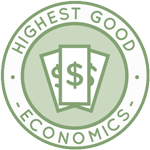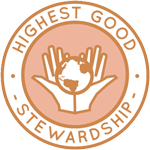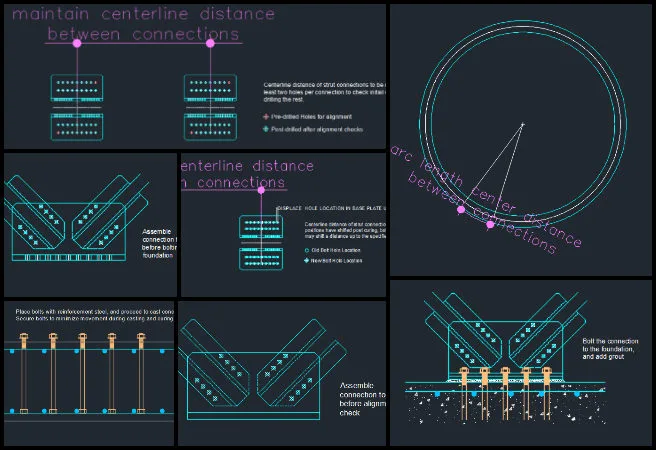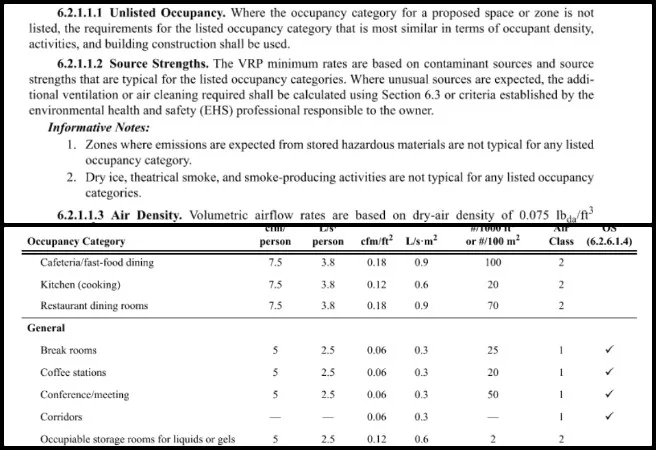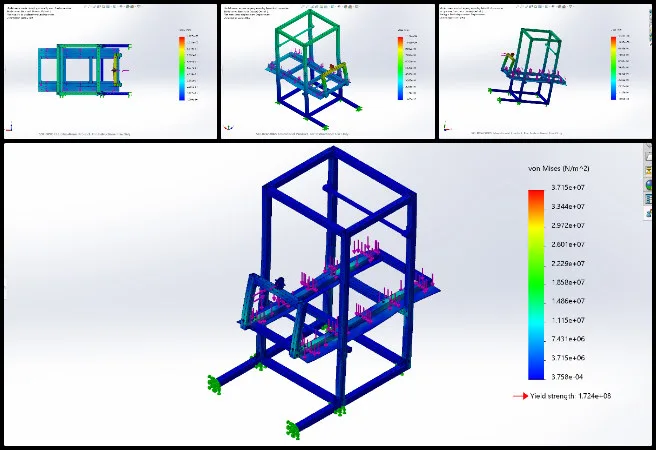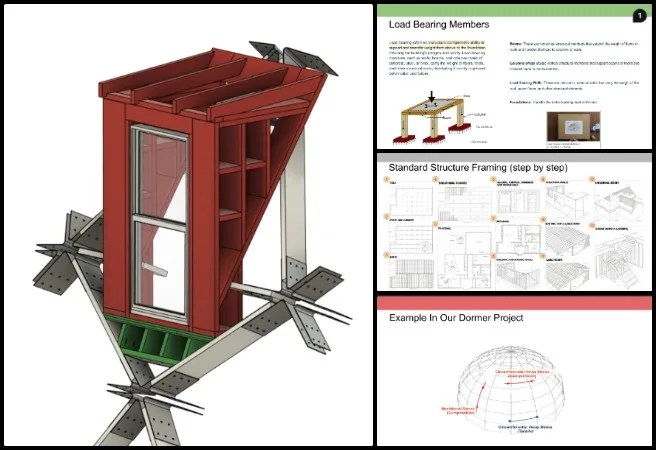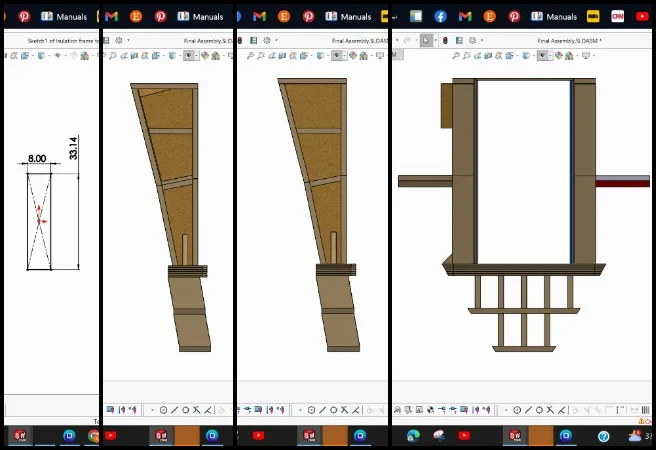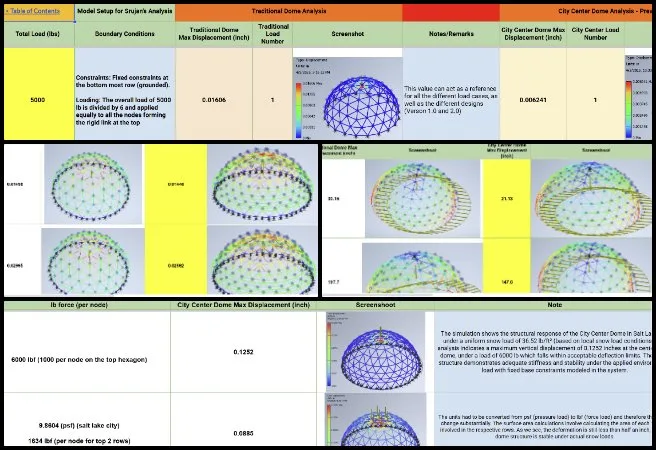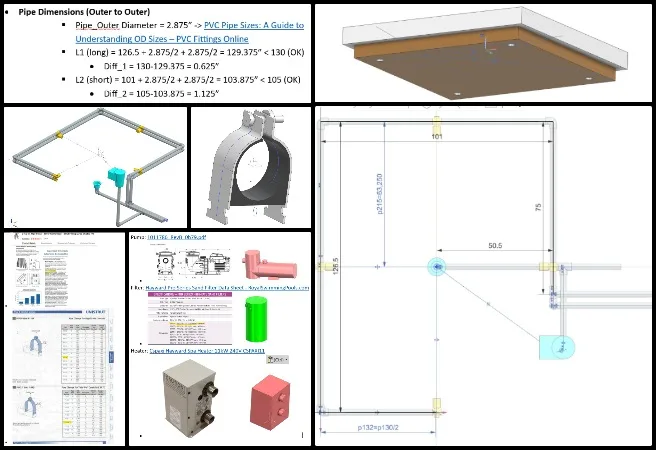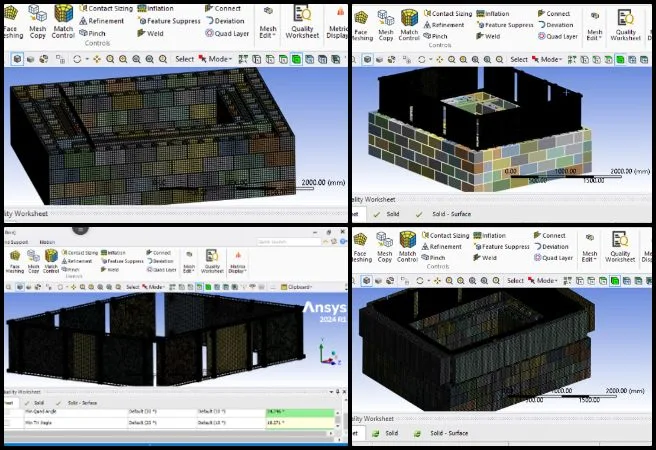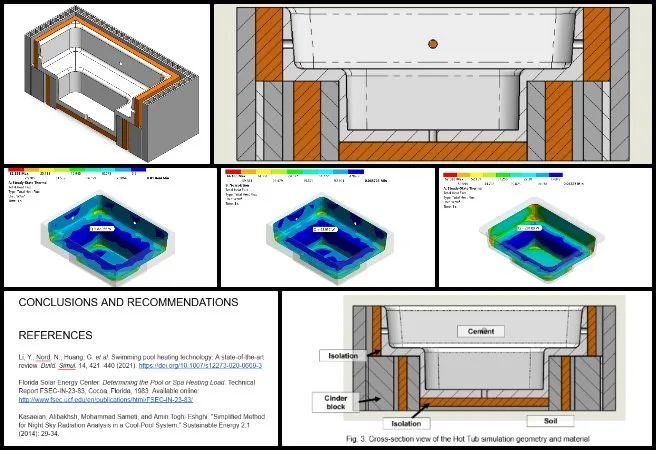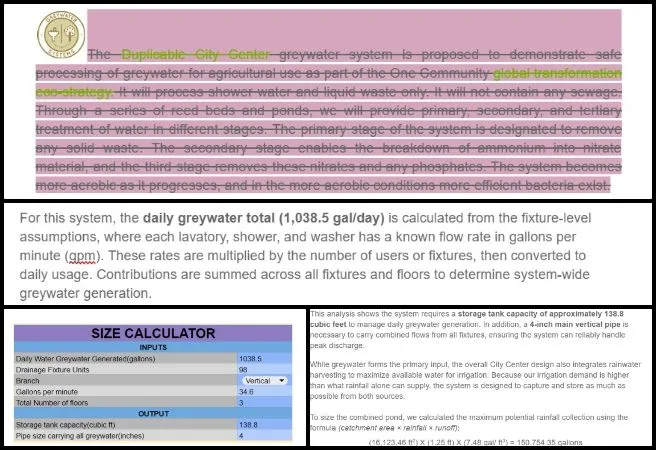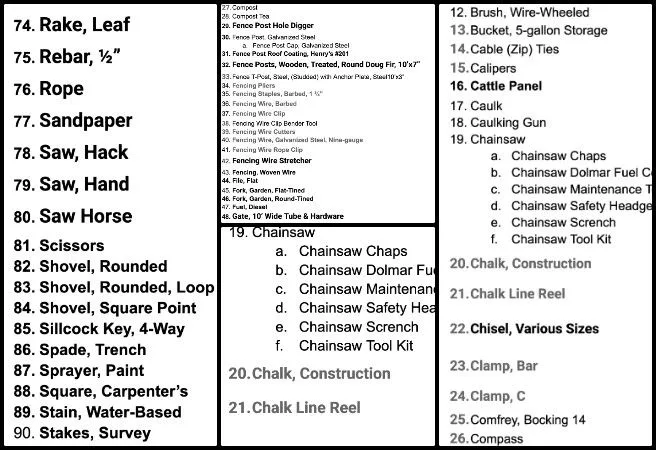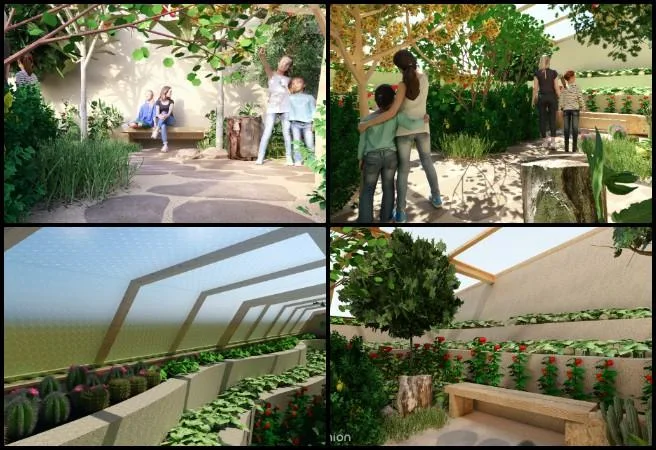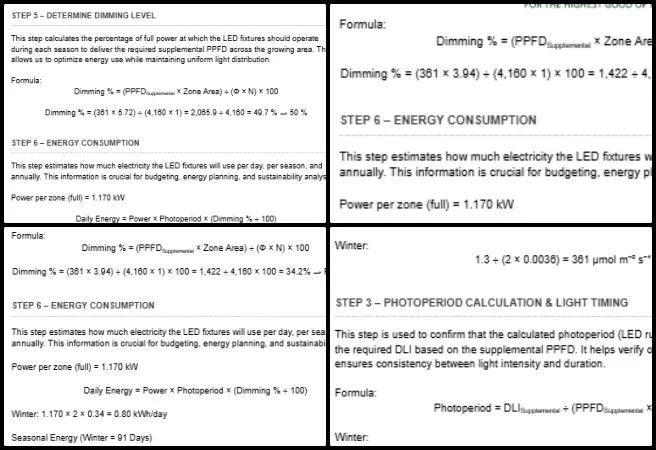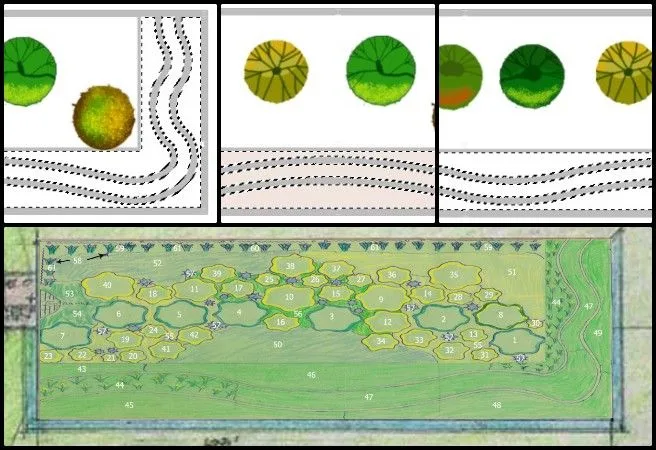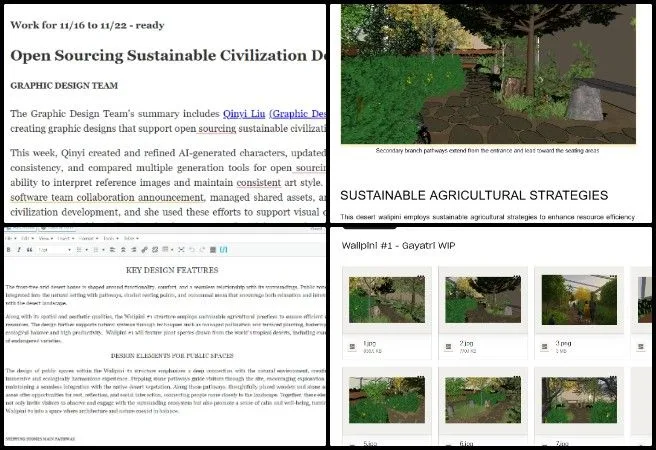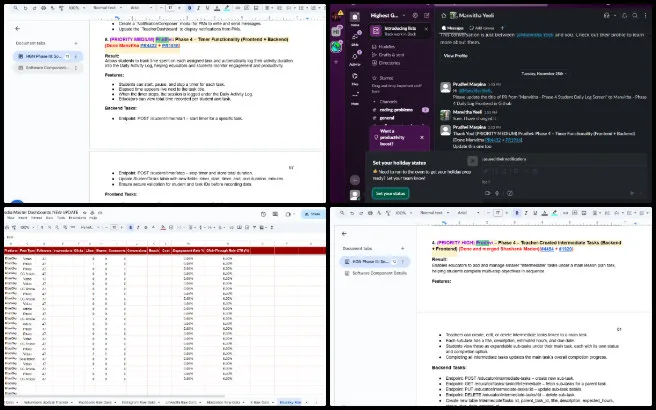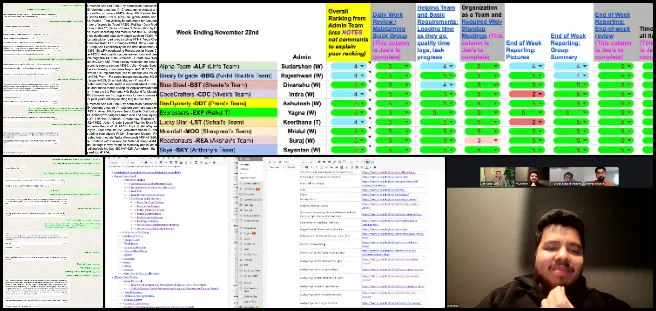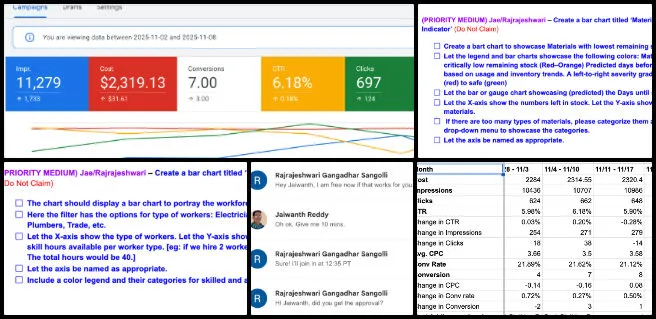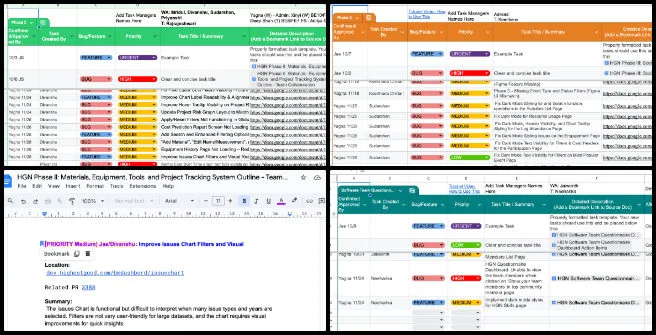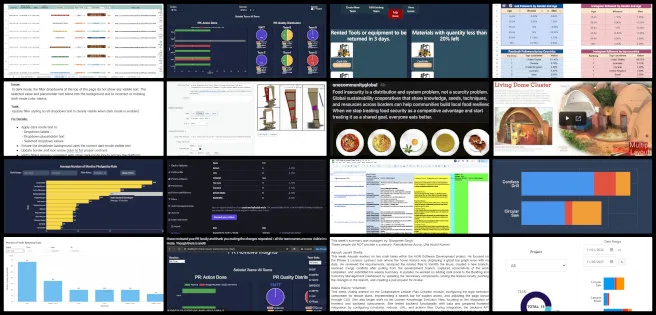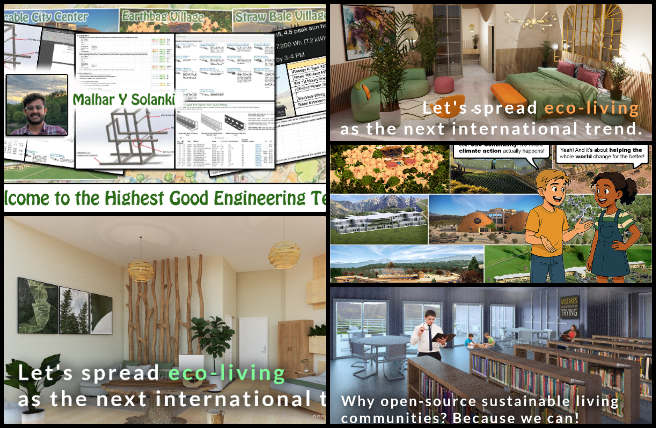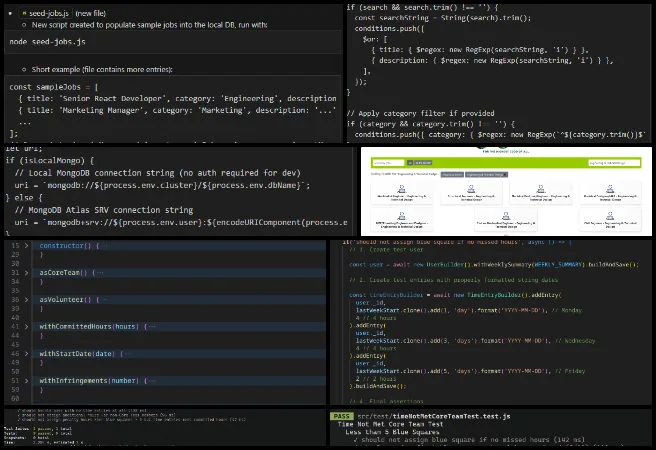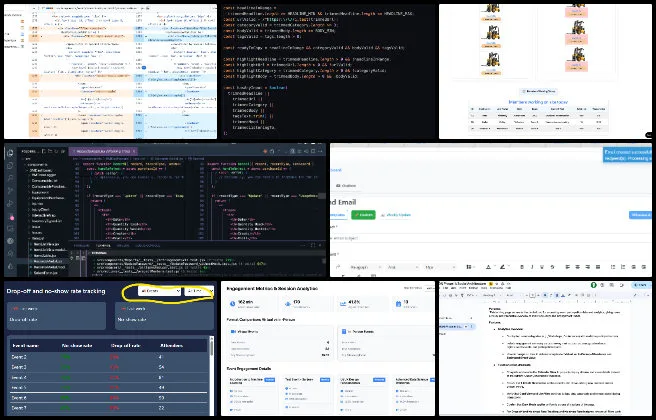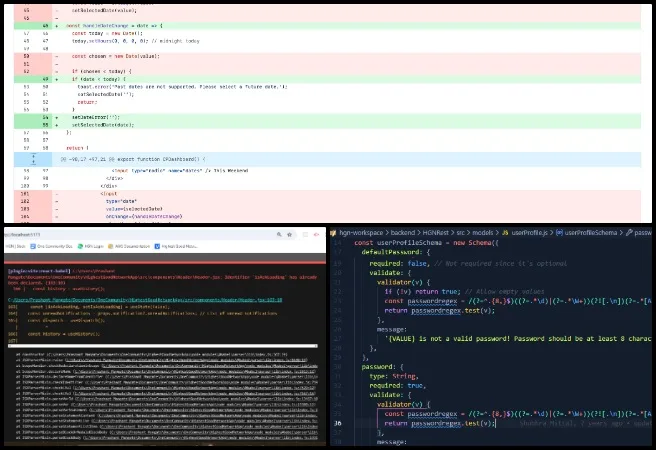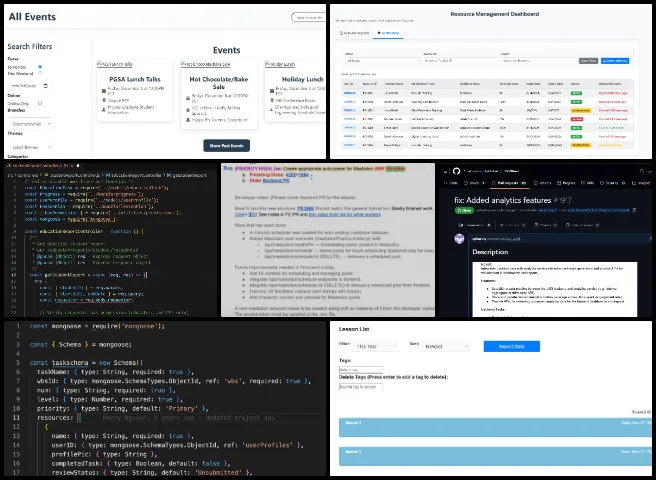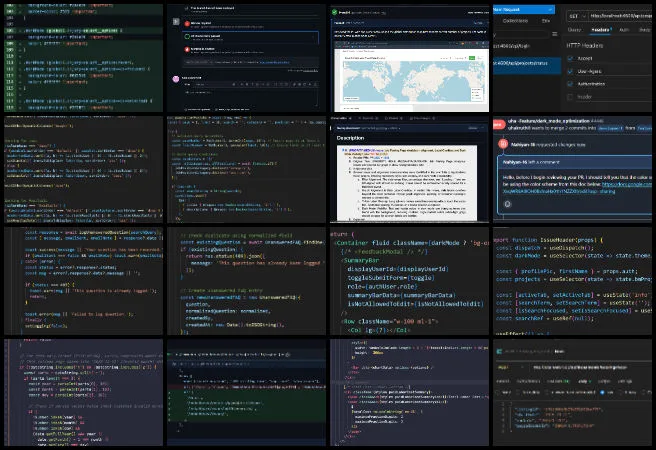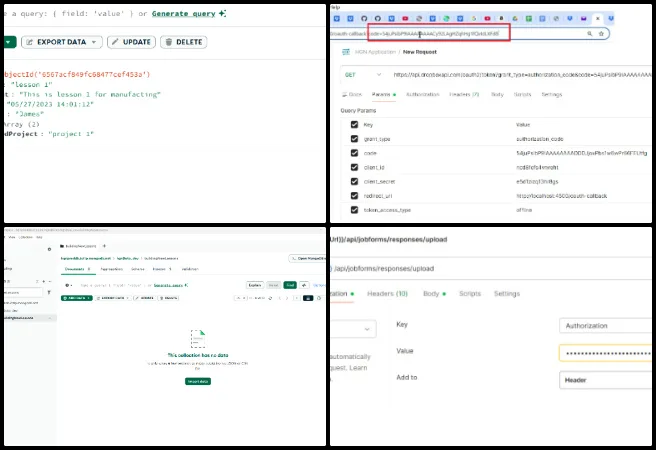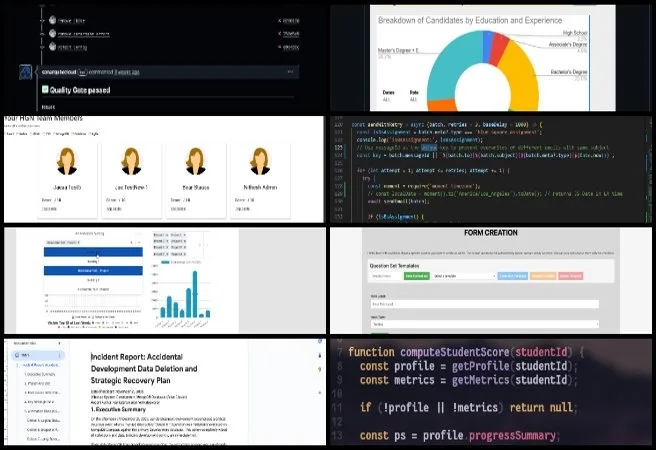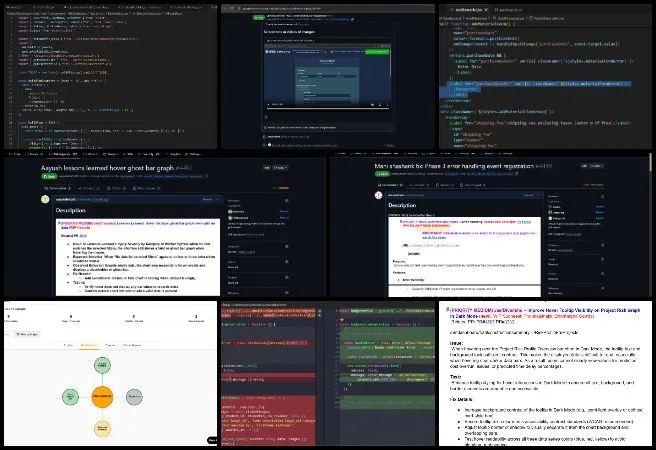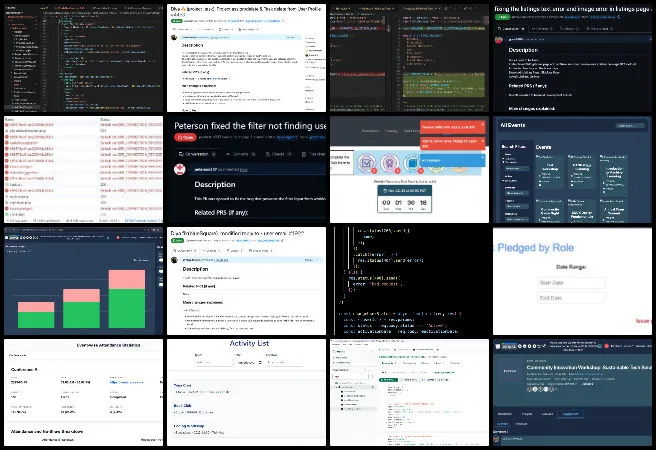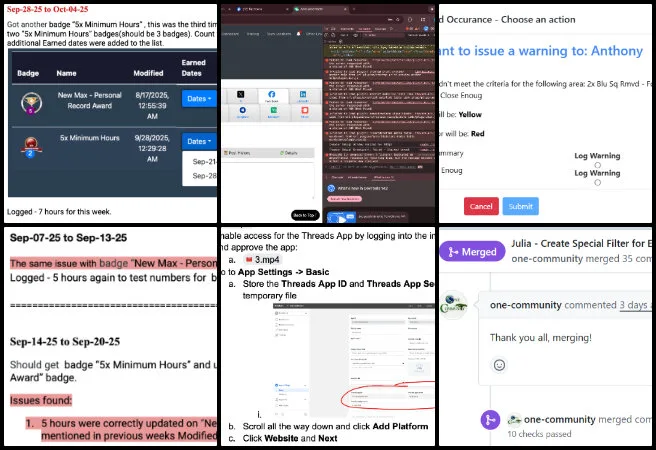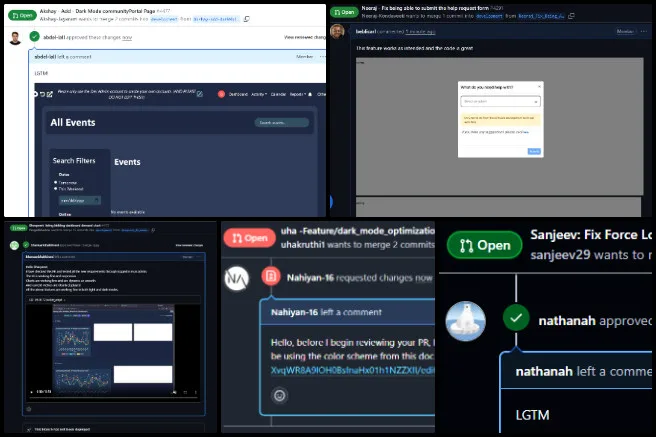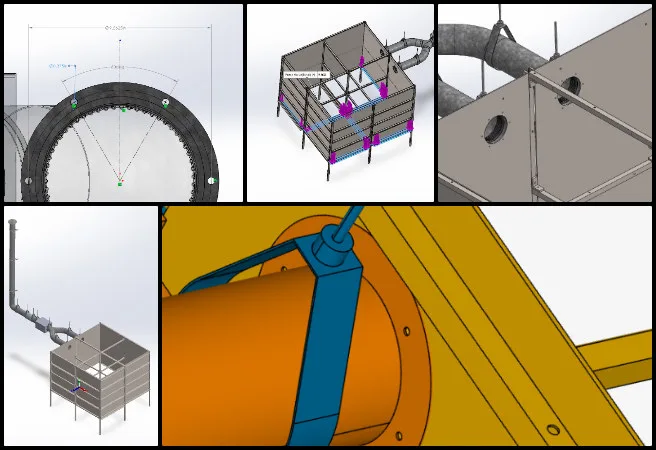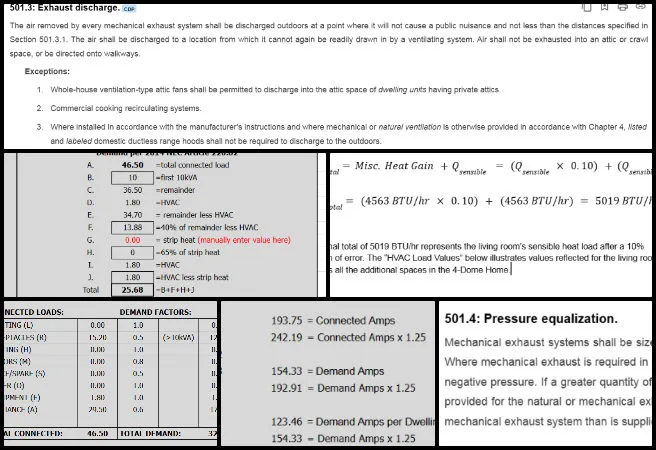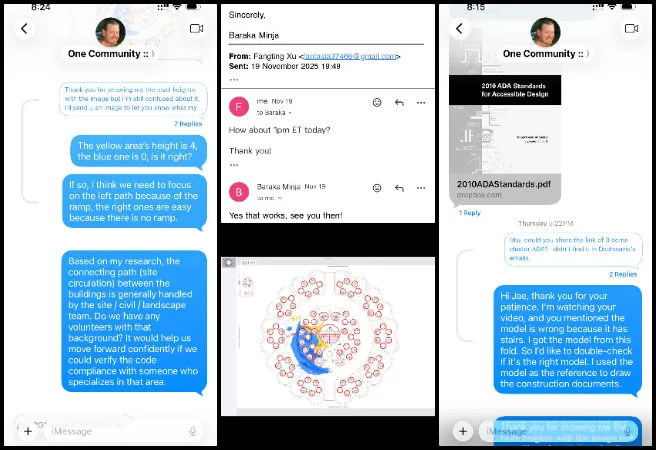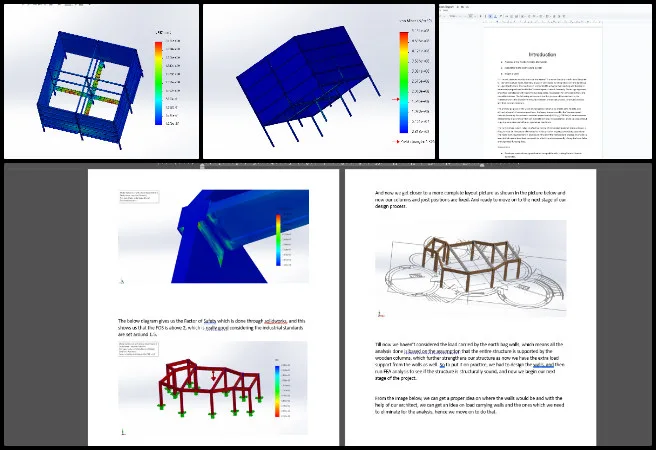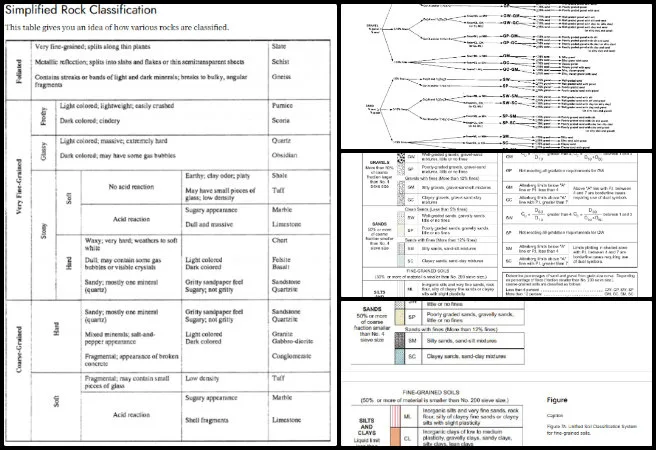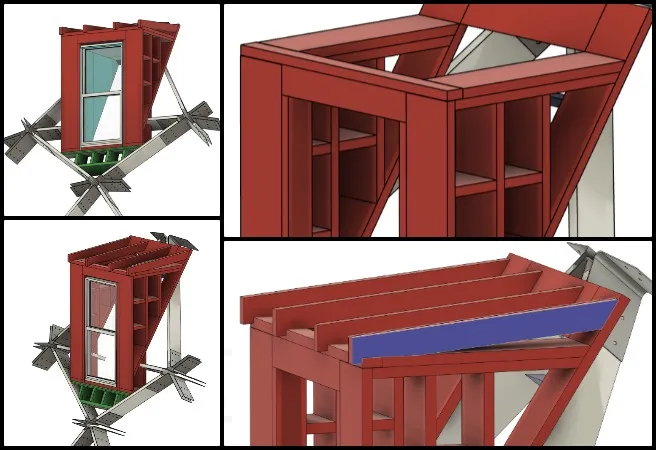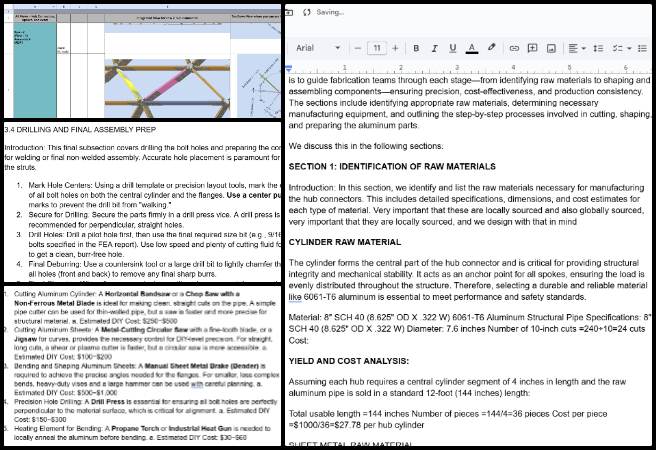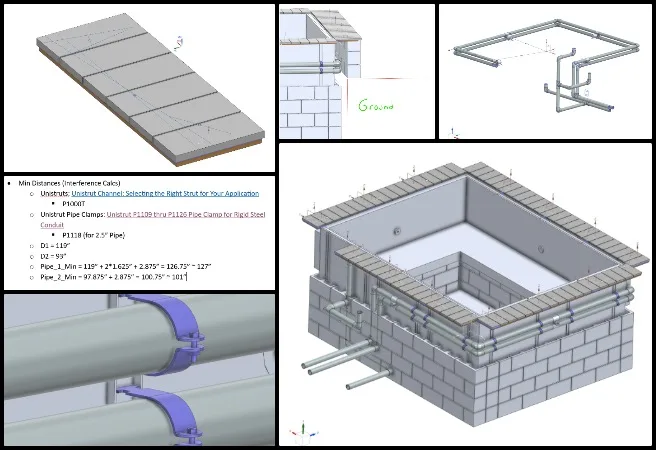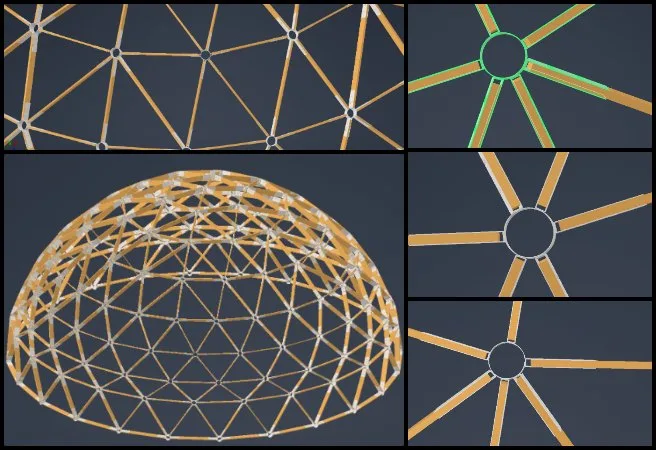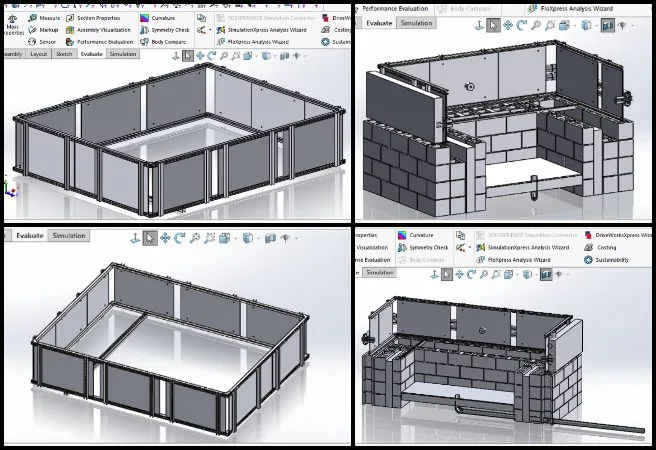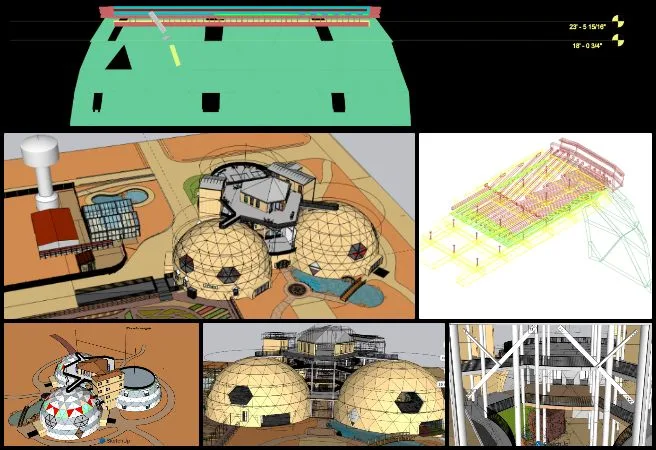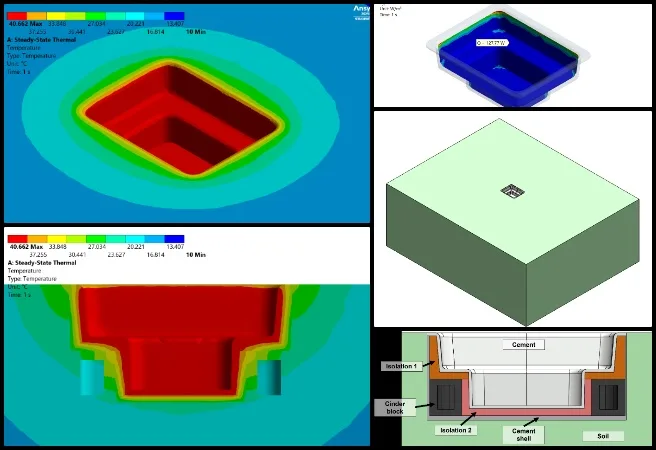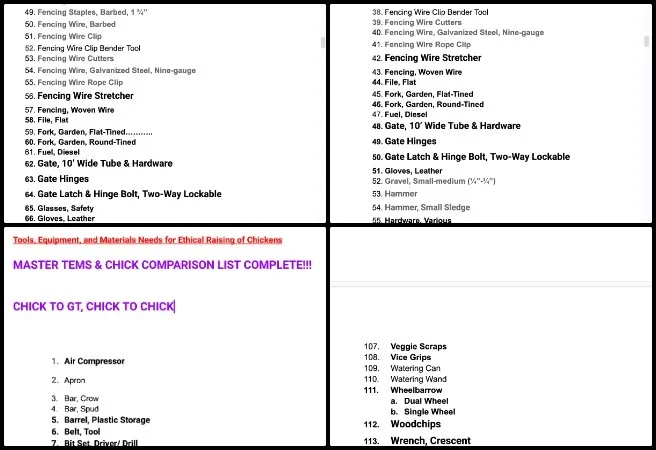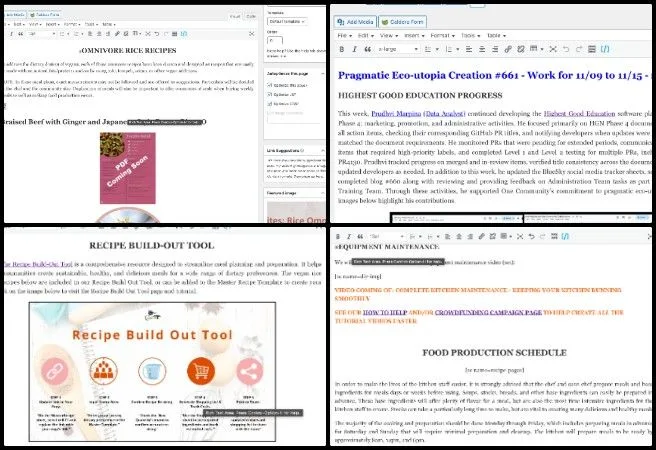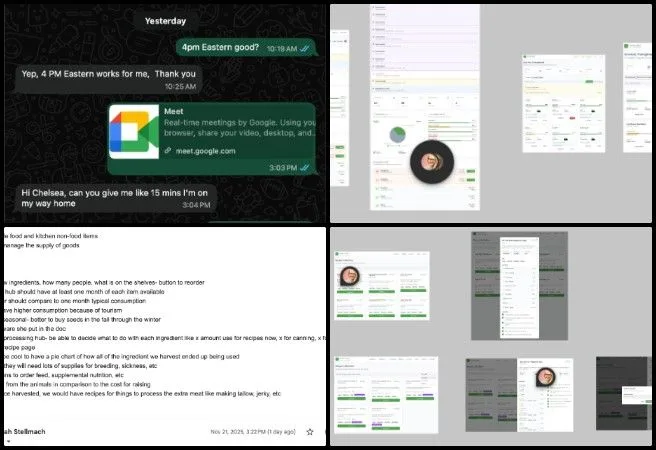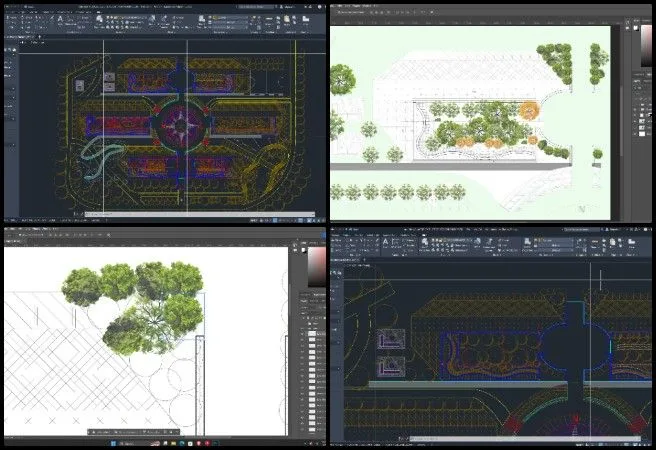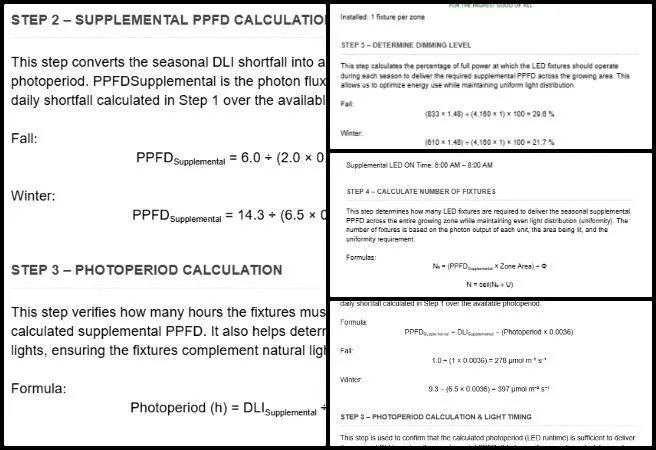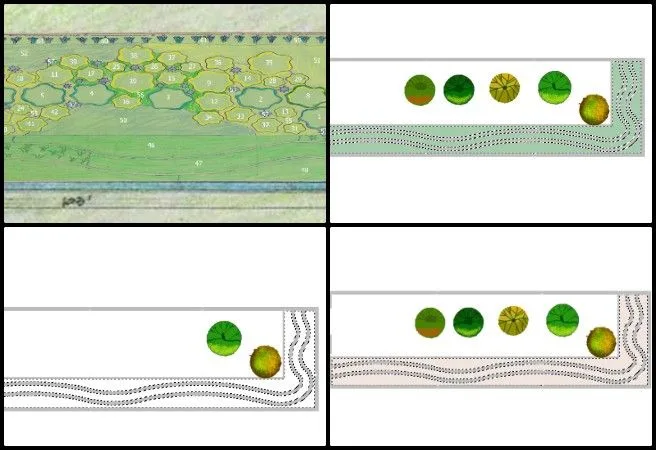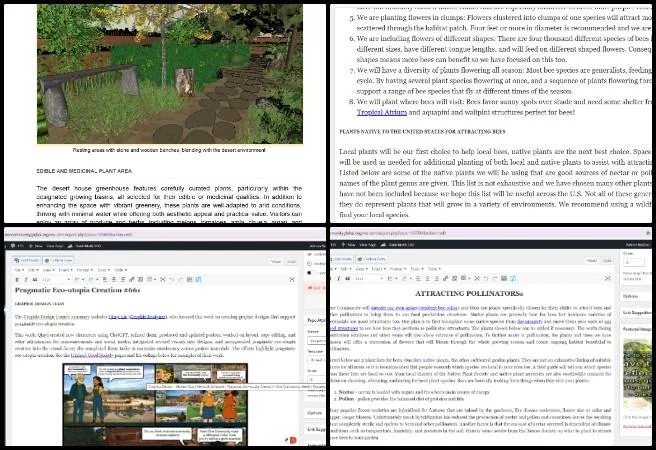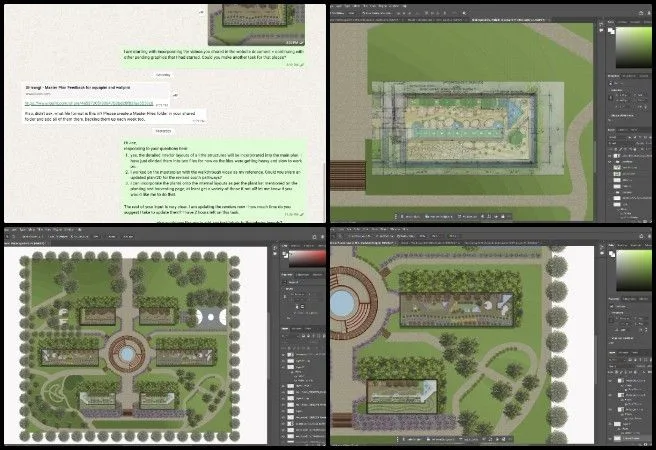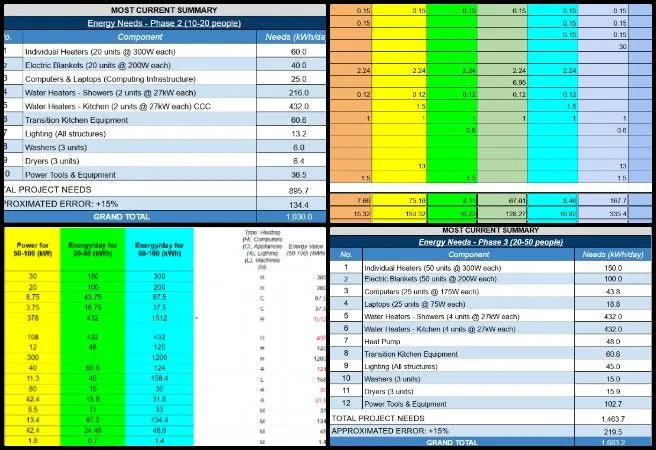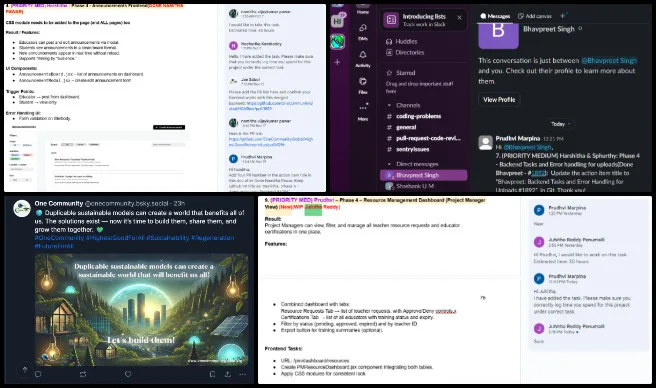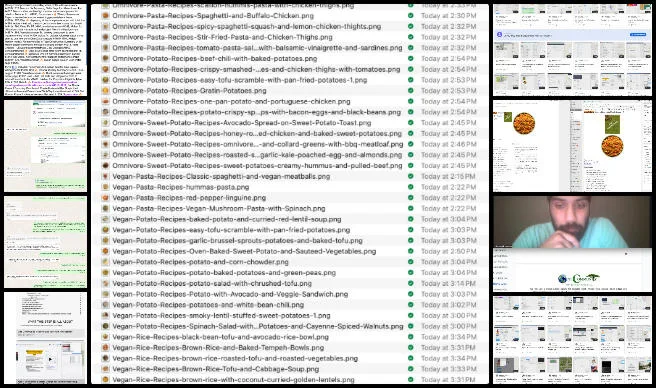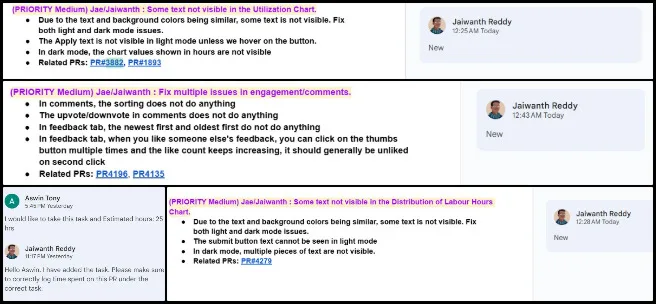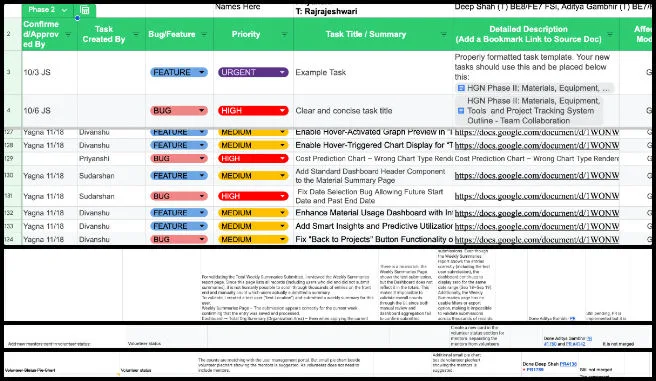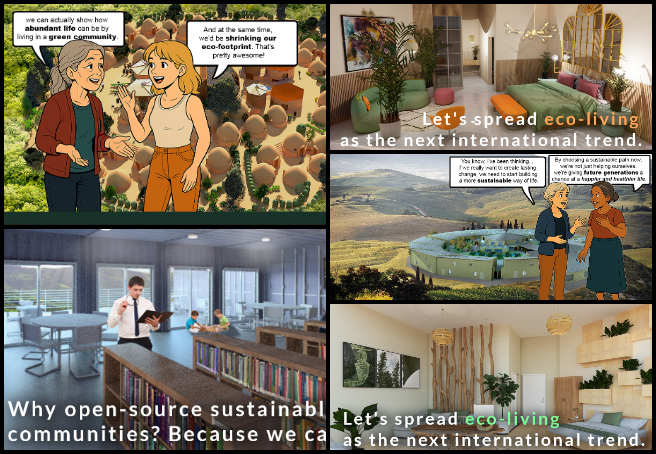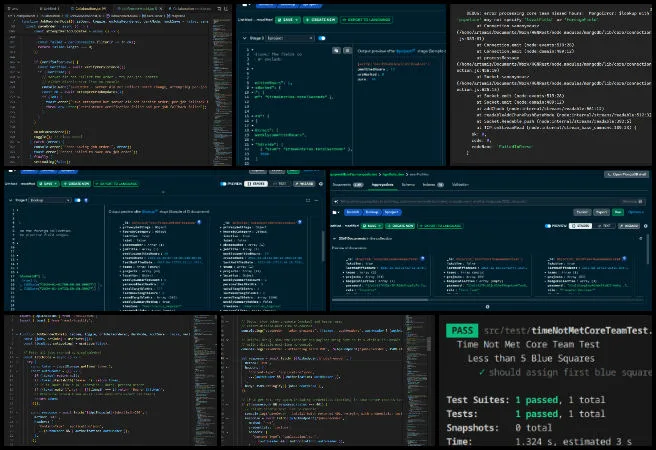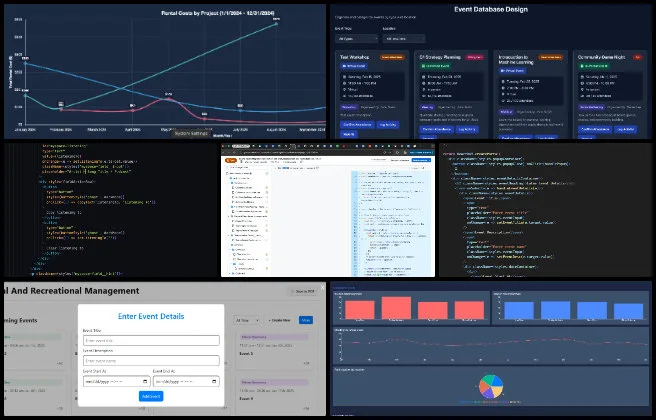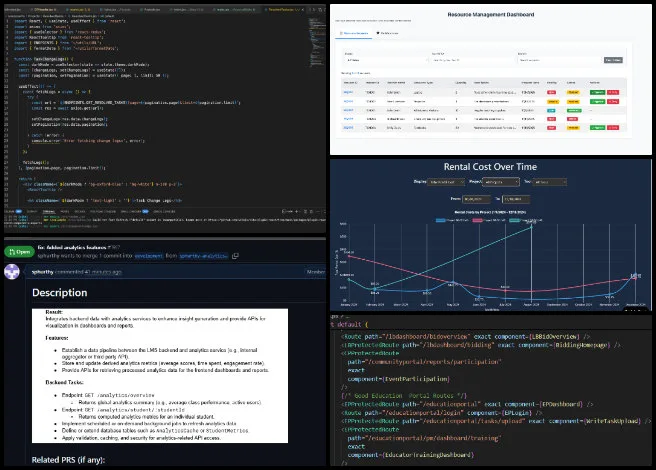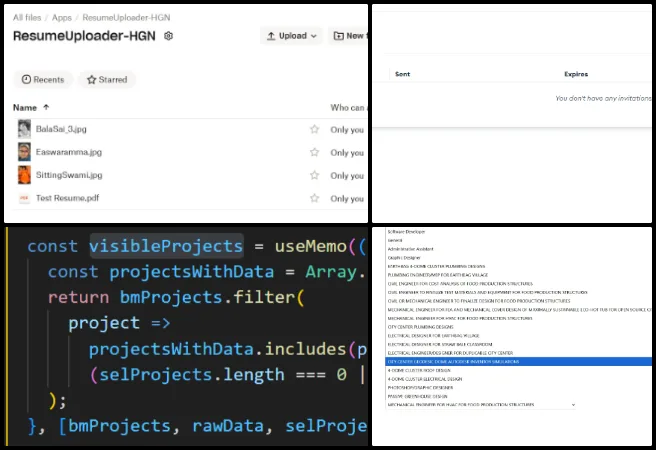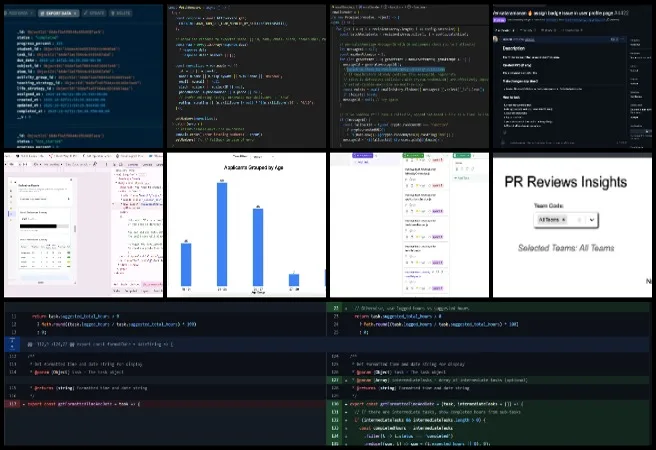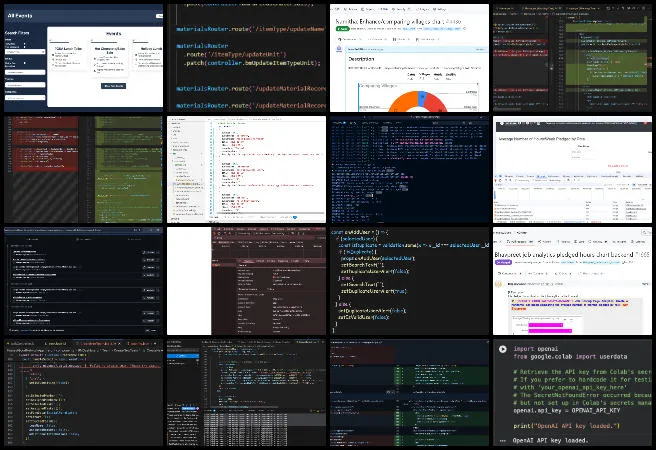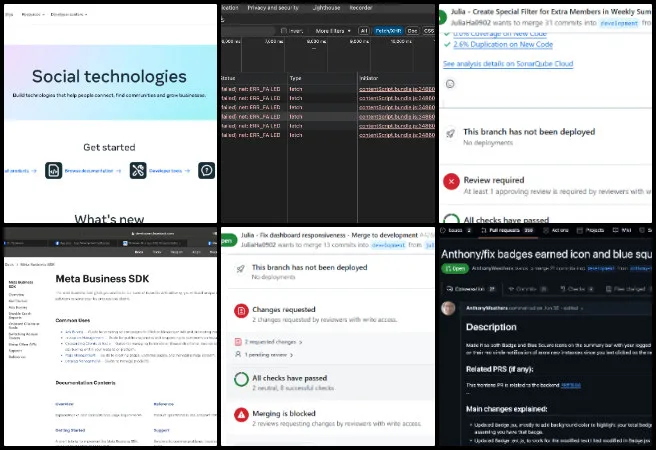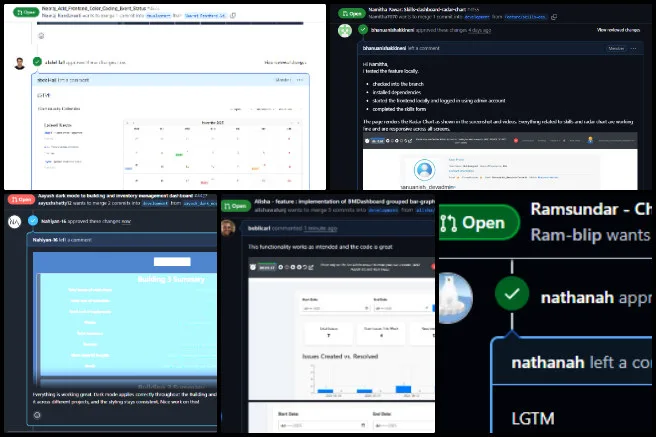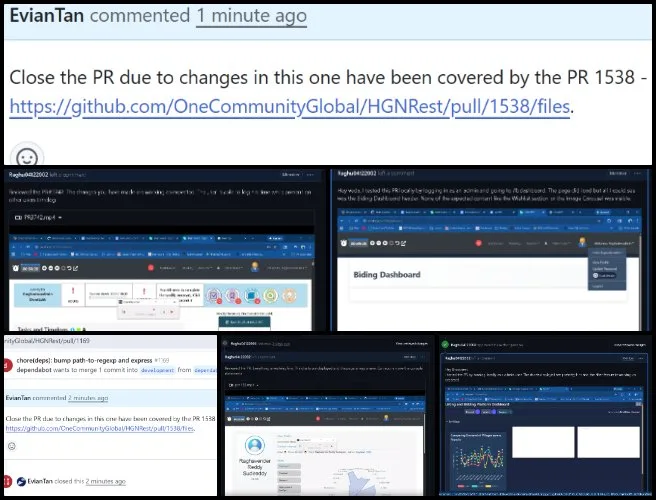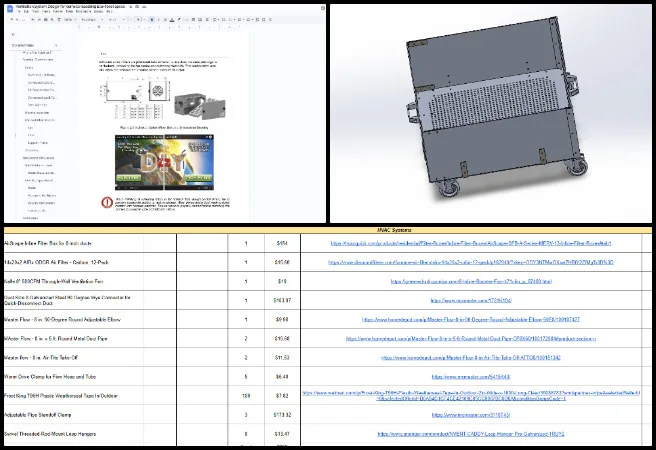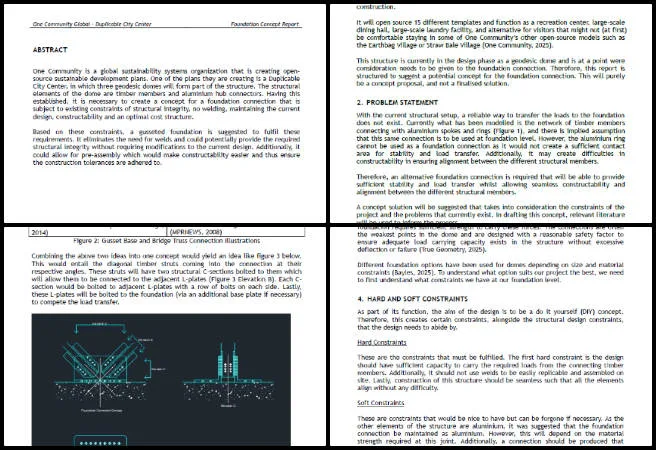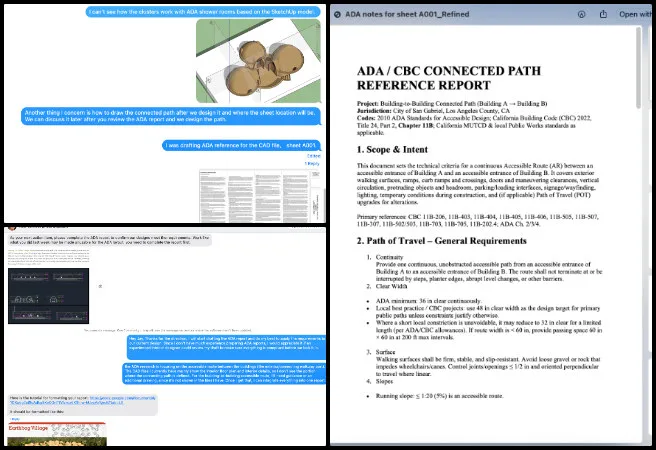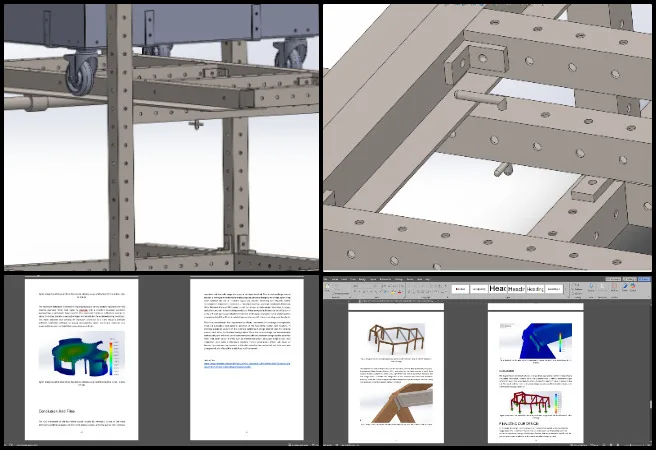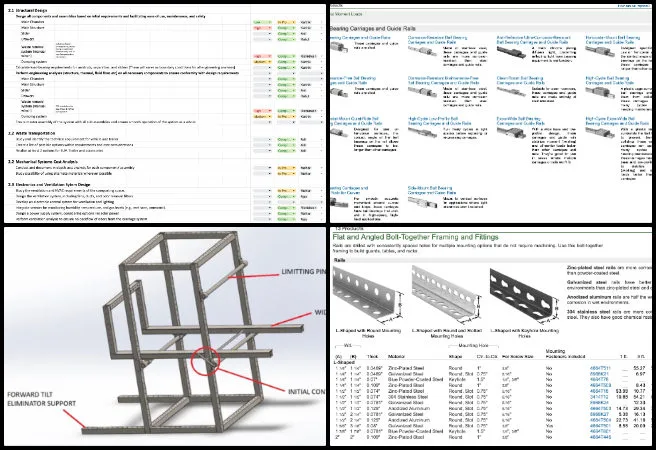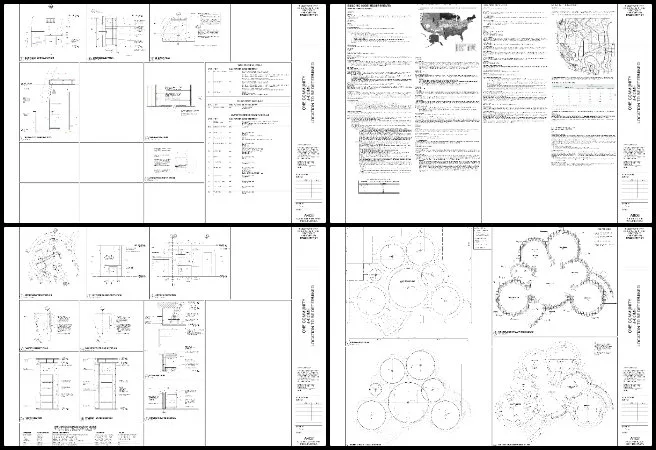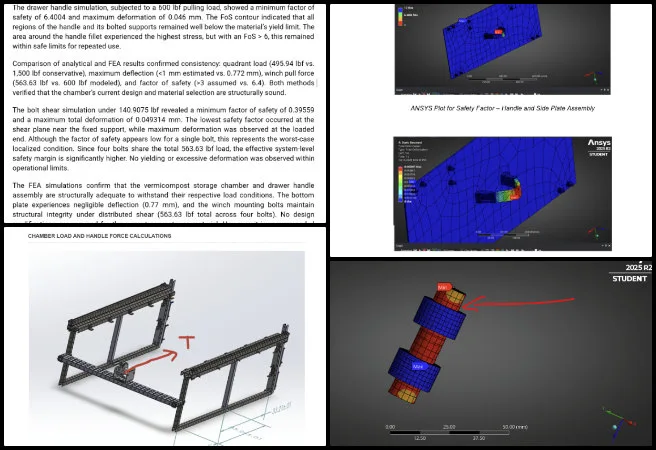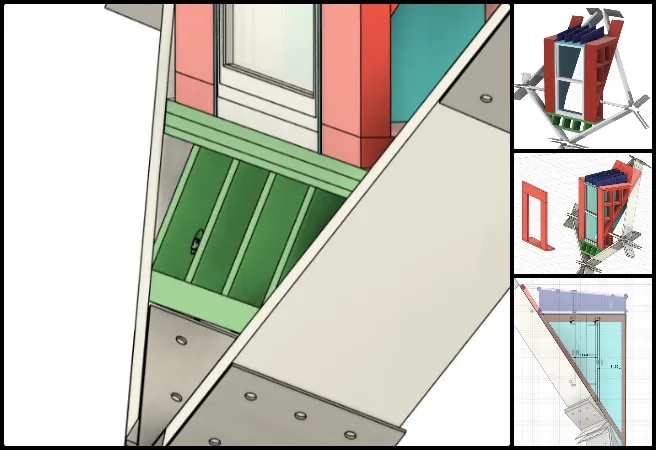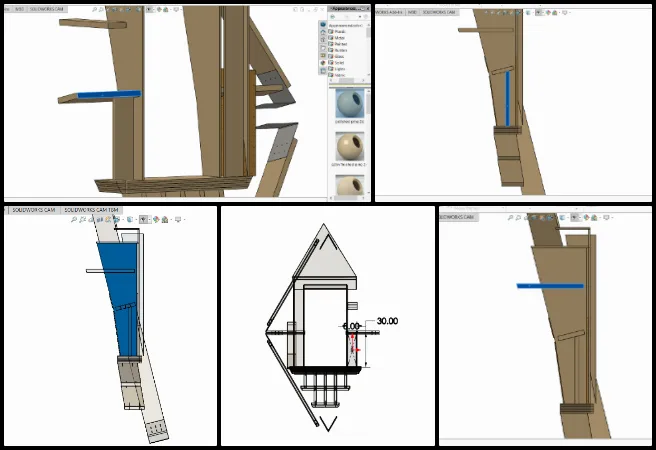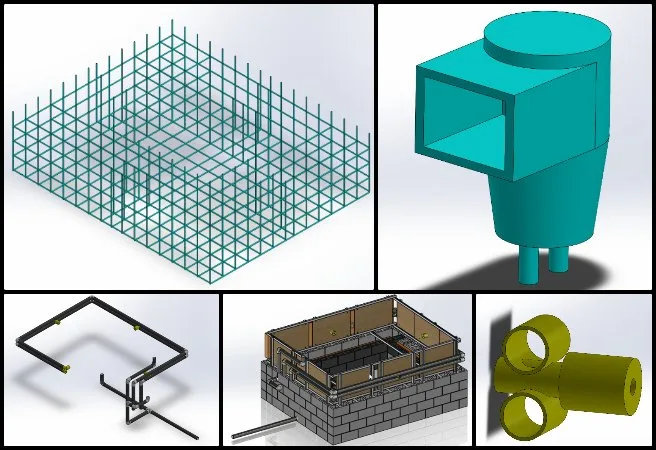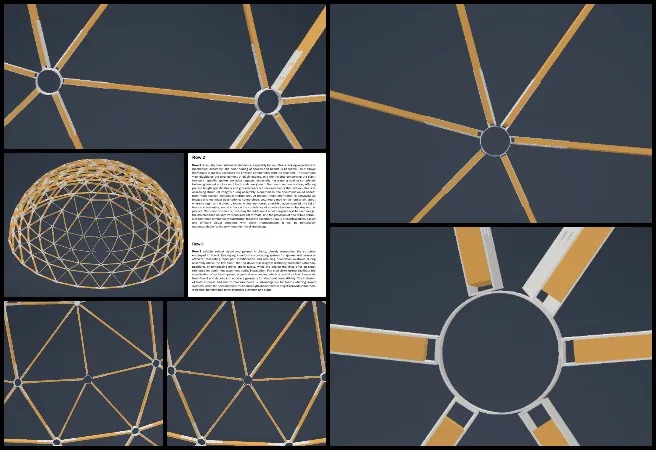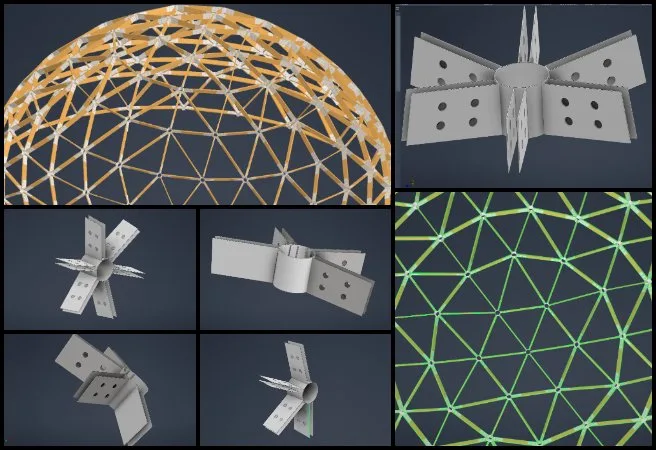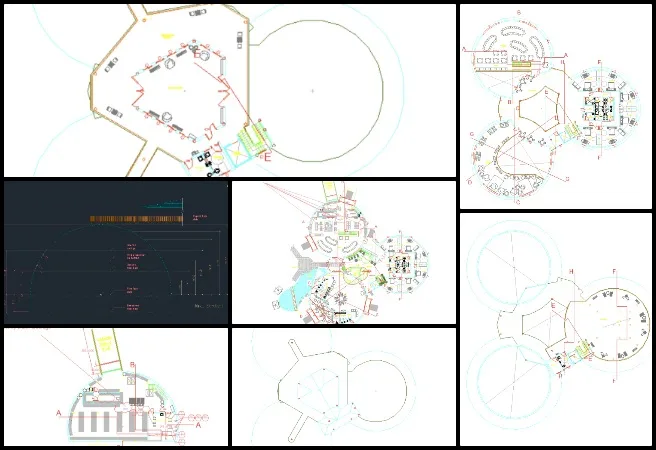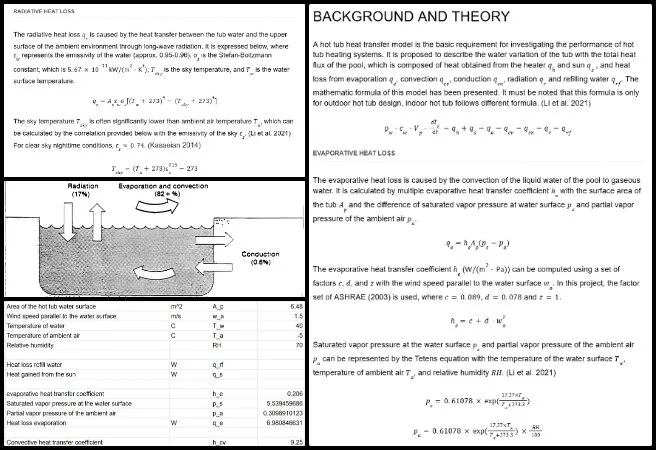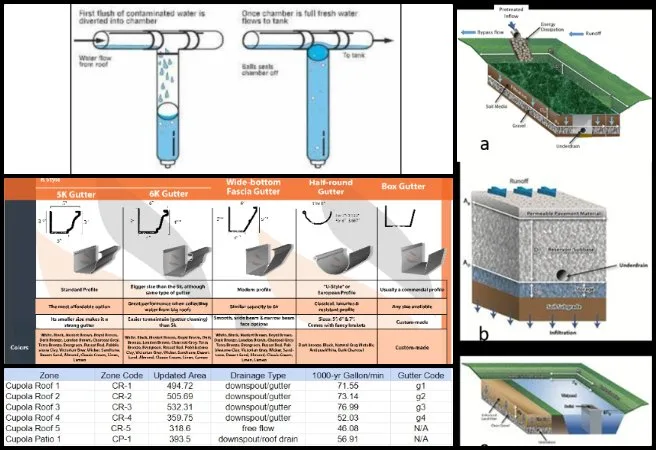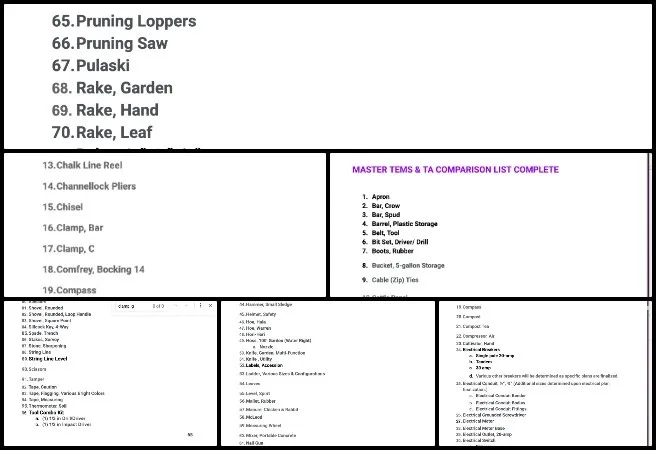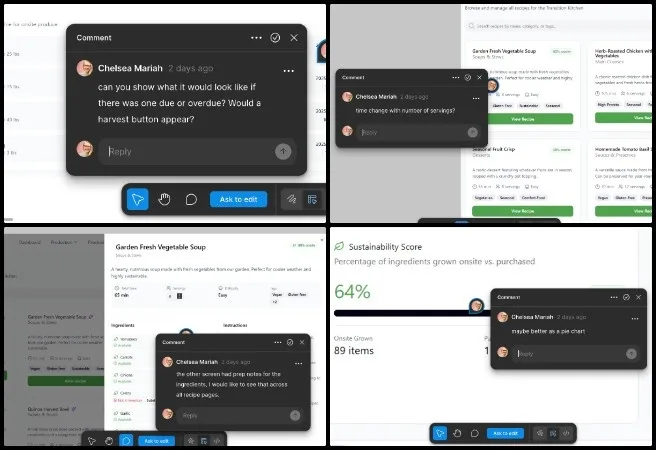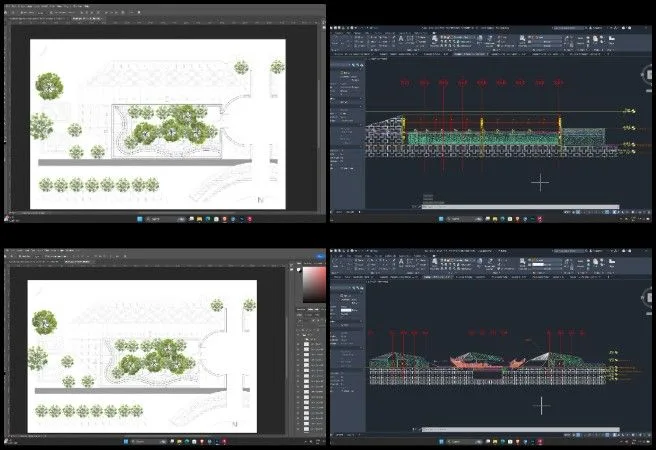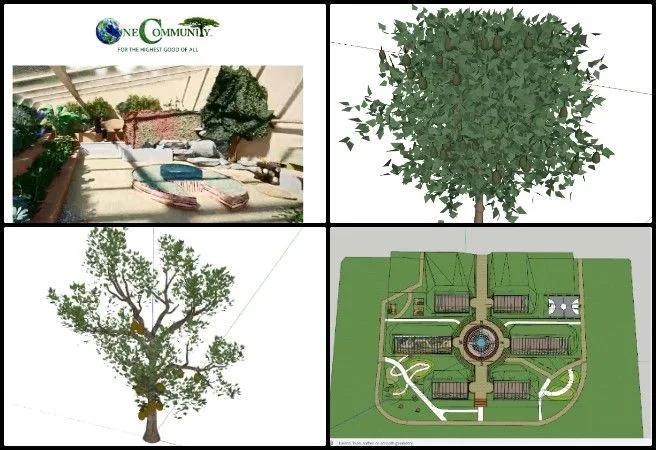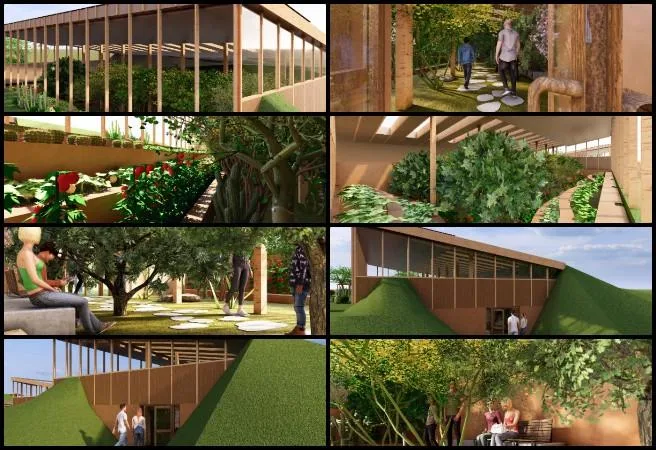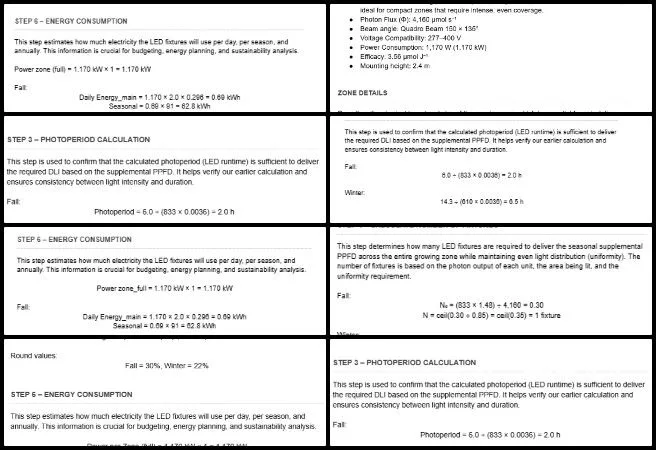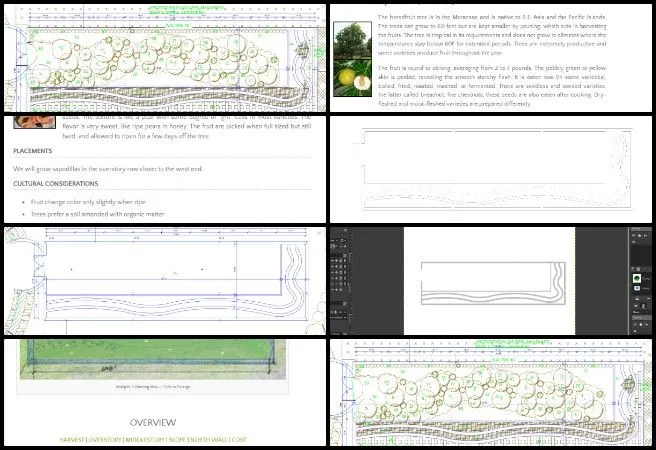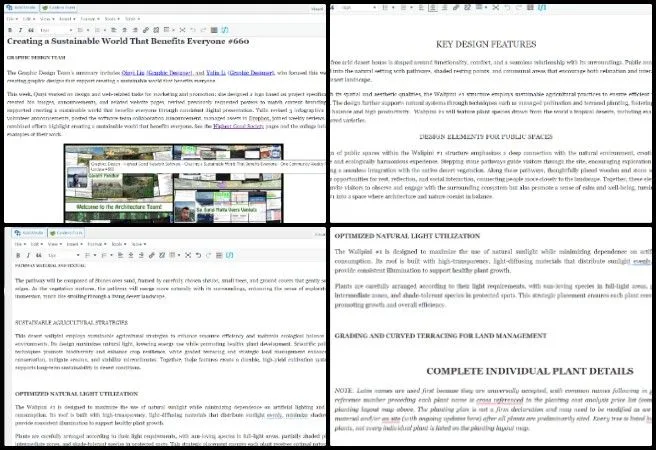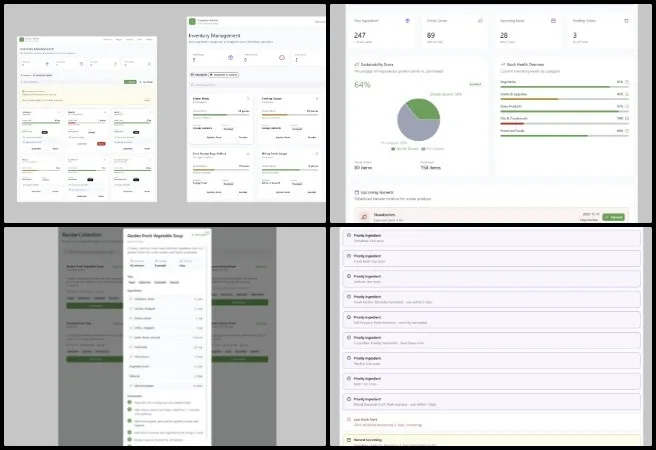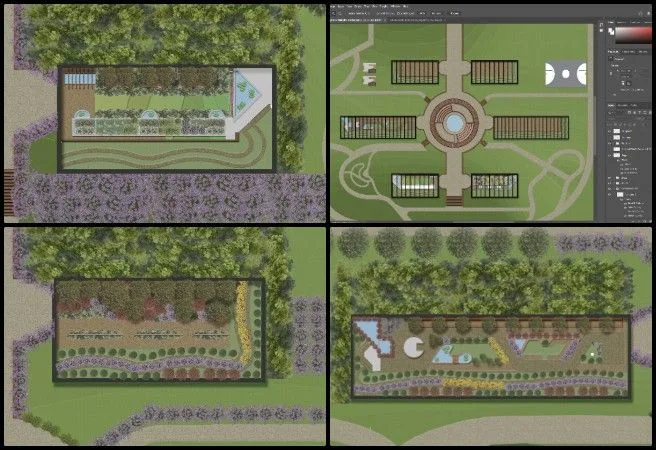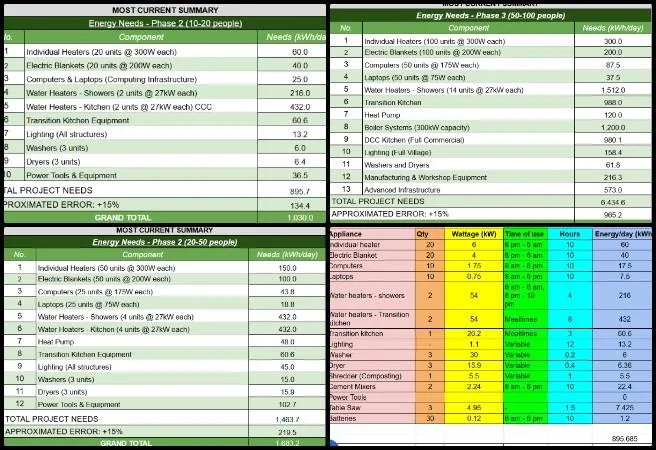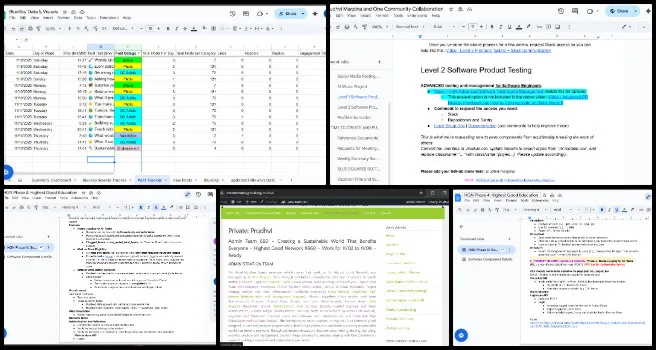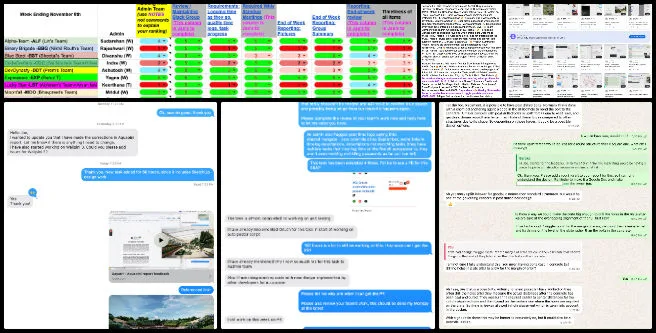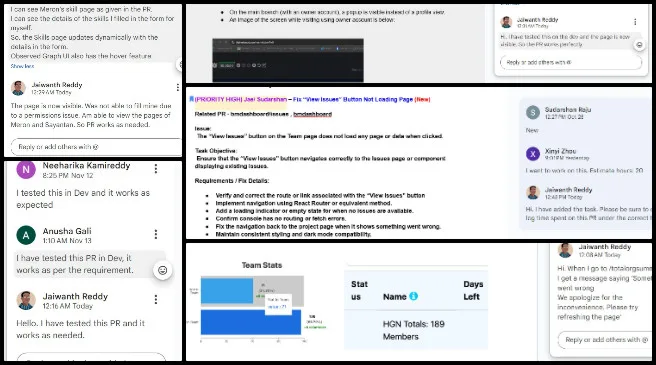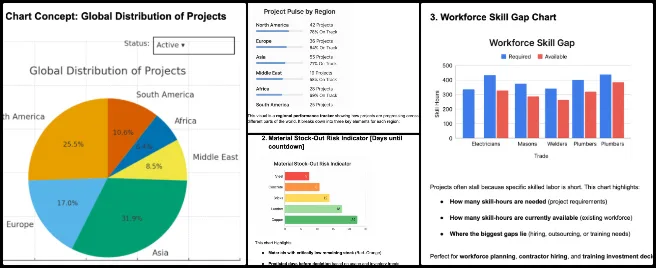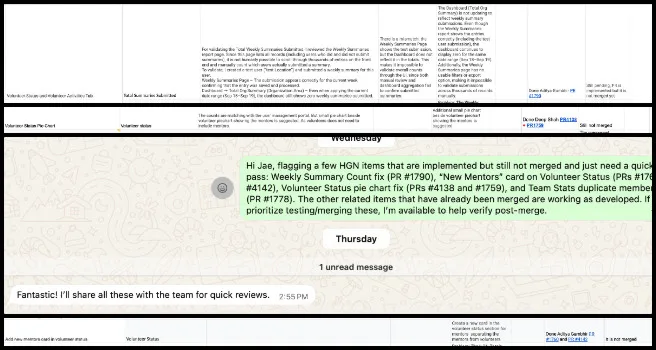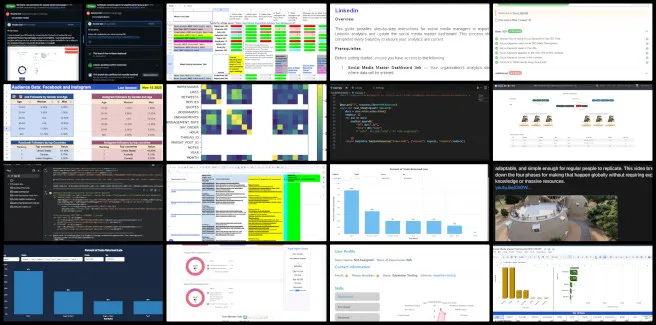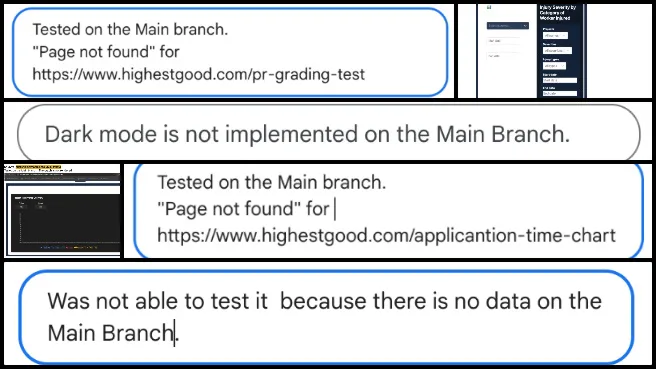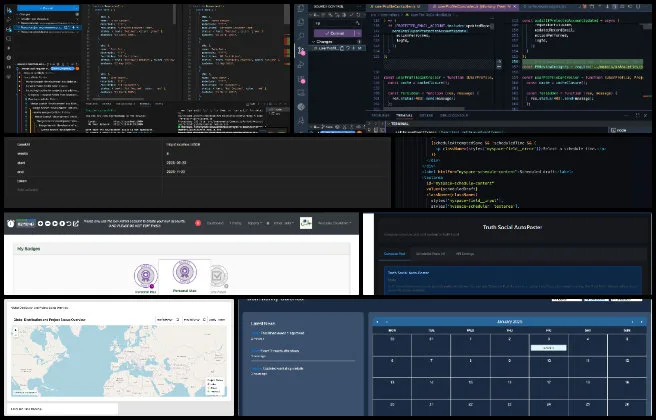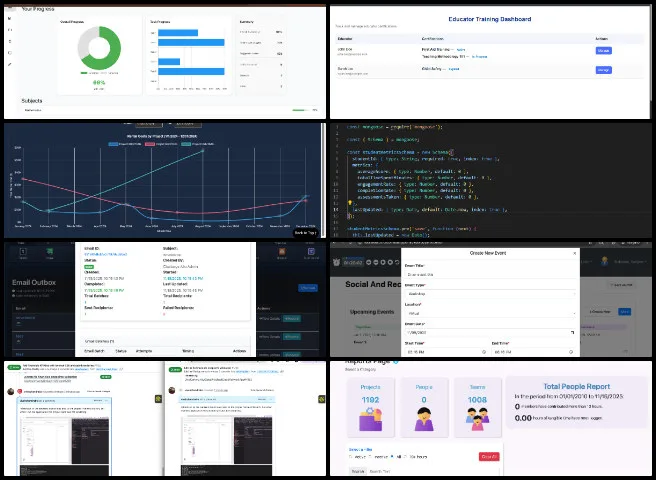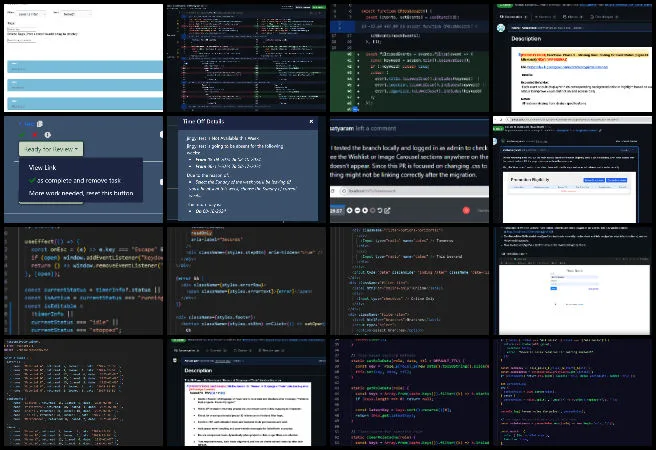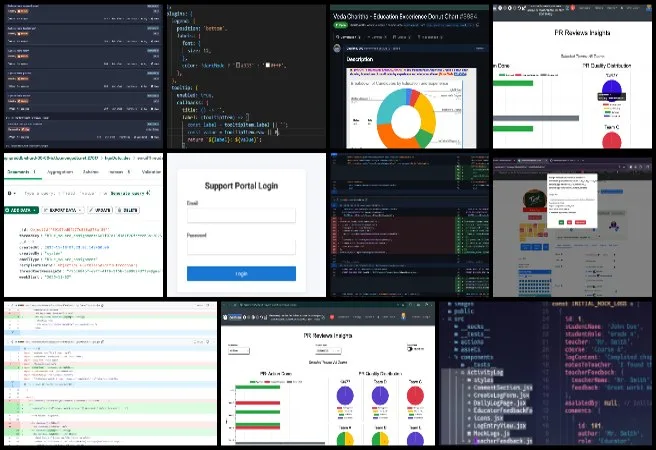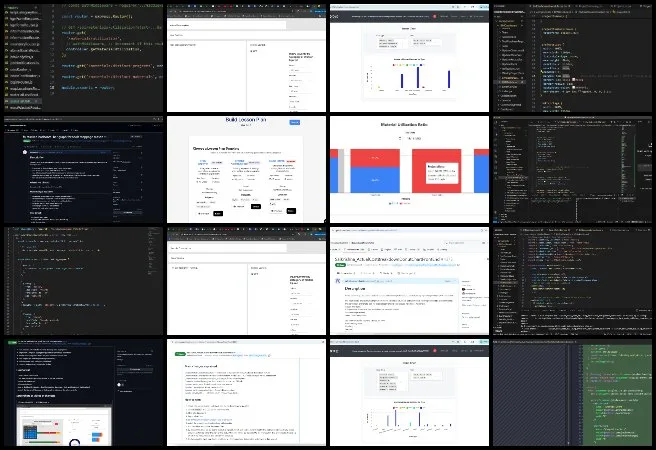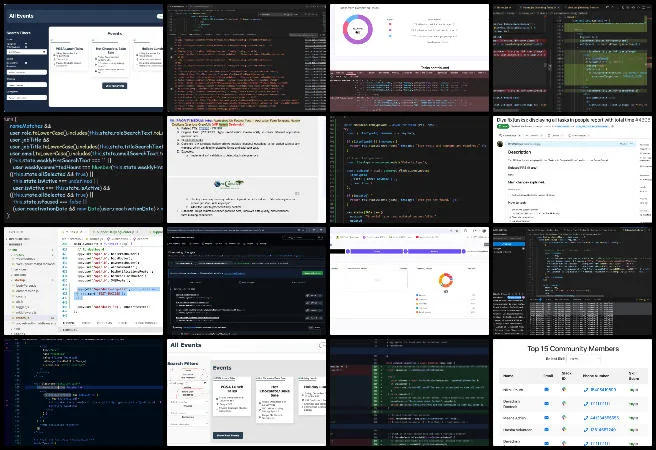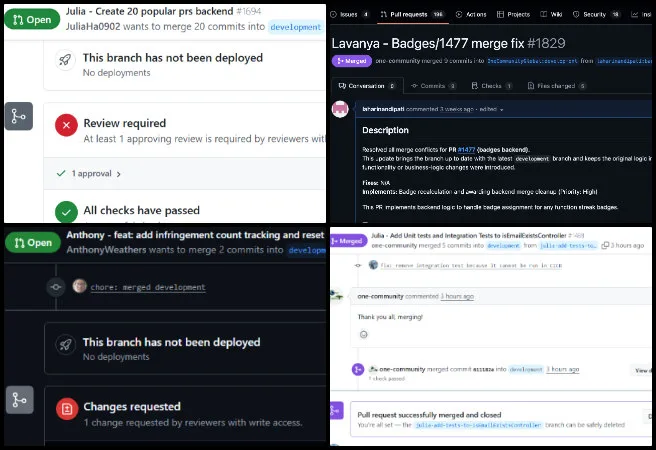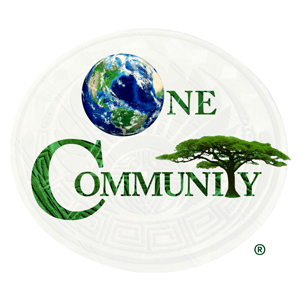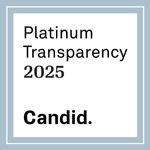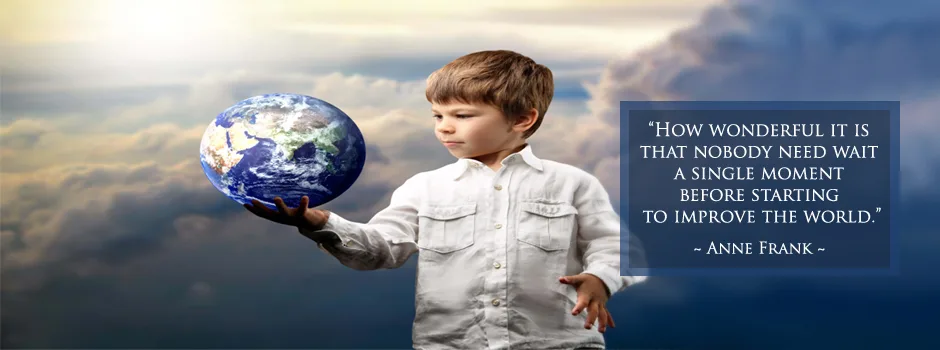
Improving the Human Living Experience – One Community Weekly Progress Update #663
Posted on December 1, 2025 by One Community Hs
At One Community, we share our mission of improving the human living experience through evolving sustainability that integrates food, energy, housing, education, economics, social architecture, and more. As an all-volunteer team, we are open sourcing and free sharing everything we create to support a model that becomes self-replicating and can grow into a global collaboration of teacher/demonstration hubs. By developing solutions for fulfilled living and regenerating our planet, we aim to help create a world that works for everyone—always doing this for The Highest Good of All.
- Here’s our project overview
- Here’s our world-change methodology
- Here’s how this becomes self-replicating
- Here’s how we are open source and free-sharing all the do-it-yourself designs
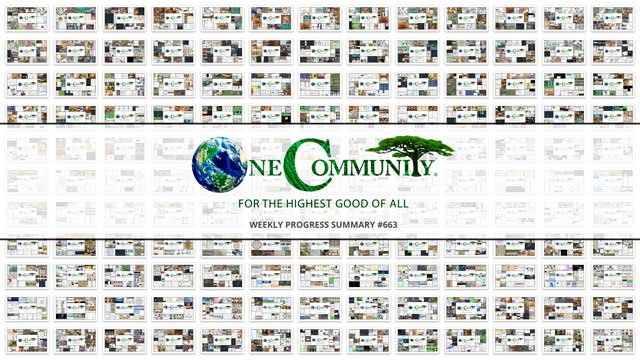
OUR MAIN OPEN SOURCE HUBS
Click on each icon to be taken to the corresponding Highest Good hub page.
One Community’s physical location will forward this movement as the first of many self-replicating teacher/demonstration communities, villages, and cities to be built around the world. This is the December 1, 2025 edition (#663) of our weekly progress update detailing our team’s development and accomplishments:
Improving the Human Living Experience
One Community Progress Update #663
DONATE | COLLABORATE | HELP WITH LARGE-SCALE FUNDING
CLICK HERE IF YOU’D LIKE TO RECEIVE AN EMAIL EACH WEEK WHEN WE RELEASE A NEW UPDATE
YOU CAN ALSO JOIN US THROUGH SOCIAL MEDIA
ONE COMMUNITY WEEKLY UPDATE DETAILS
HIGHEST GOOD HOUSING PROGRESS
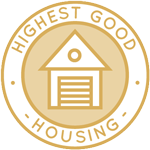 One Community is improving the human living experience through Highest Good housing that is artistic and beautiful, more affordable, more space efficient, lasts longer, DIY buildable, and constructed with healthy and sustainable materials:
One Community is improving the human living experience through Highest Good housing that is artistic and beautiful, more affordable, more space efficient, lasts longer, DIY buildable, and constructed with healthy and sustainable materials:
- Learn about: Our Upcoming Crowdfunding Campaign
- Learn about the different village models: 7 Sustainable Village Models
- Visit the open source portals for the first two: Earthbag Village OS Hub | Straw Bale Village OS Hub
This week, Baraka Minja (Civil and Environmental Engineer Pr. Eng.) continued working on the Communal Eco-shower and Vermiculture Toilet drawings. He worked on a draft construction procedure for the proposed Duplicable City Center foundation connection by developing two construction sequences, one using bolts cast together with the concrete and the other using bolts post drilled after the concrete had been cast. He also prepared sketches to illustrate the proposed measurements that would be taken during these procedures. His detailed work supports improving the human living experience through more efficient and replicable construction methods. See below for some of the pictures.
Derrell Brown (Plumbing Designer) continued working on the Earthbag Village 4-dome home final MEP report by reviewing feedback from the initial draft and applying updates across multiple sections. He reviewed the previously added plumbing information and updated the methods used for sizing the domestic cold water service and estimating GPM to align with the current design intent. He also reviewed ASHRAE 62.1-2022 to cross-reference the mechanical load calculations and ensure the report presents the required values with clarity. His refinements contribute to improving the human living experience through enhanced system reliability and design precision. See below for some of the pictures related to this work.
Karthik Pillai (Mechanical Engineer) continued work on the Vermiculture Toilet and 4-dome home components of the Earthbag Village. He focused on finalizing the report for the 4-dome cluster roof design, incorporating all required updates before submitting it to Jae for review. As part of this work, he revalidated several FEA models to confirm that the analysis used accurate inputs and to clarify technical points raised by Jae and ensure the report aligned with the current design assumptions. In parallel, he supported progress on the vermiculture toilet project, where the team continued assembling the remaining sections of the report and shared the updated version with Jae for review. His analytical precision and collaboration support improving the human living experience through structural reliability and sustainable design innovation. The related visuals are shown below.
Malhar Solanki (Mechanical Engineer) continued working on the Vermiculture Toilet component of the Earthbag Village. He created a task and subject list for team members to contribute to a shared document, proofread reports prepared by Ajay and Rishi, clarified details related to project images, and made minor design changes. He also advanced work on the report, gathered supporting pictures to align with the written content, led the weekly team meeting to discuss current holdups, and continued with documentation and report writing. His leadership and coordination help drive the improving the human living experience through organized teamwork and refined open-source documentation. Review the latest updates in the images below.
Rishi Chakrapani (Mechanical Engineer) continued working on the Vermiculture Toilet. He performed FEA on the waste dumping system to confirm the structural integrity of the overall design under expected loading conditions. The sensor recommendation report was also revised based on feedback from Jae and appended to the main collaboration document, along with the updated separator insertion platform report to maintain alignment across all project documentation. His engineering updates contribute to improving the human living experience by optimizing sustainable design performance and system reliability. See below for some of the pictures related to this work.
DUPLICABLE CITY CENTER PROGRESS
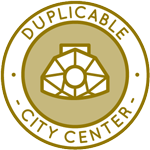 One Community is improving the human living experience through a Duplicable and Sustainable City Center that is LEED Platinum certified/Sustainable, can feed 200 people at a time, provide laundry for over 300 people, is beautiful, spacious, and saves resources, money, and space:
One Community is improving the human living experience through a Duplicable and Sustainable City Center that is LEED Platinum certified/Sustainable, can feed 200 people at a time, provide laundry for over 300 people, is beautiful, spacious, and saves resources, money, and space:
- Learn about this building and it’s function: Duplicable City Center Open Source Hub
This week, Andrew Tzu-Chien (Industrial Designer) continued working on the Duplicable City Center Dormer second-floor window. His work included completing the window structure by finishing the framing and plywood sheeting, adjusting the previous window model to fit the current design, and adding insulation within the structure. He also prepared the handover report summarizing the tasks completed. This open source Duplicable City Center project demonstrates improving the human living experience. For more details, refer to the image below.
Ariana Virginia Gutierrez Doria Medina (Industrial Designer) continued working on the Duplicable City Center window and door framing by completing the 3D CAD model and the corresponding assembly. She arranged the components to outline an efficient cutting approach, updated the assembly manual, verified the fit of several parts, and made adjustments to multiple drawings to ensure the parts list matched the new measurements and aligned with the updated design requirements. This open source Duplicable City Center project demonstrates improving the human living experience. See the presentation and research highlights below.
Ayushman Dutta (Mechanical Engineer) continued working on the City Center Dome Hub Connector Engineering and DIY manufacturing. He worked on creating the assembly spreadsheet process and formatted the sheet to match the required specifications, and he met with the team to address roadblocks and continued updating the assembly spreadsheet document. Ayushman also completed the navigation sheet by making the necessary formatting changes for clarity. He then reviewed the FEA of the domes, rechecked the different load cases to verify accuracy, and prepared a feedback document outlining the analysis results and supporting calculations. This open source Duplicable City Center project demonstrates improving the human living experience. Review the connector analysis visuals below for more details.
Bevan Chiu (Mechanical Engineer Volunteer) continued his work finishing the City Center Eco-spa Designs. He revised the plumbing dimensions to meet maximum spacing requirements and aligned them with the unistrut frame. He also reviewed alternative options to pipe clamps, including cushion clamps and unistrut clamps. Additional work involved researching and creating a CAD model for an alternative plumbing access panel method using HDPE blocks and pressure-treated plywood. Bevan also created CAD models for the mechanical room, including the pump, filter, and heater. This open source Duplicable City Center project contributes to improving the human living experience. For more details, refer to the image below.
Sandesh Kumawat (Mechanical Engineer) continued developing the City Center Eco-spa Designs. He optimized the dimensions of the hybrid structural assembly to balance interior usability with structural integrity and thermal performance, refining the CAD geometry to ensure efficient spacing and proper alignment. He advanced the FEA preprocessing work in ANSYS by generating meshes for the steel frame, cinder block foundation, and shell panels, using different meshing strategies for thin-walled and solid components. Sandesh then refined mesh density in areas expected to experience higher stress and prepared midsurface definitions, face sizing, and contact pair identification for the integrated model. He also reviewed how the updated geometry and mesh preparation supported the next stage of structural and thermal analysis. Discover One Community’s open source Duplicable City Center, which exemplifies improving the human living experience. See the visuals below for a closer look.
Srujan Pandya (Mechanical Engineer) continued his work on developing the dynamic simulation setup for earthquake analysis updates for the City Center Dome Hub Connector Engineering. He organized the dome models by cross-checking the DWG files, SketchUp geometry, and CAD references to create an accurate parts list for all three domes. He identified missing or removed components, resolved discrepancies between versions, and updated the review sheet to provide a clear and consistent status snapshot for the team. The Duplicable City Center demonstrates improving the human living experience through open source solutions that can guide people. The images below illustrate aspects of this work.
Tianxiang Huang (Mechanical Engineer) continued working on the Duplicable City Center design. He rebuilt and simplified the existing CAD model and adjusted the insulation thickness to improve the thermal analysis. He simulated heat loss through the ground for multiple cases and calculated the associated R-values, noting that the results show the current design may need additional modification to meet the R-45 criterion. Tianxiang also prepared a document outlining the simulation steps and summarizing the results. This open source Duplicable City Center project exemplifies improving the human living experience. For more details, refer to the image below.
Vineela Reddy Pippera Badguna (Mechanical Engineer) continued contributing to the Duplicable City Center Water Catchment designs. She reviewed and confirmed all the calculations in the spreadsheet, checking each value to ensure accuracy and consistency across the document. She also checked the full report to ensure all sections were in the correct order and aligned with the required format, verifying that the content was organized clearly and matched the expected structure. This open source Duplicable City Center project contributes to improving the human living experience. See the updated rainwater catchment data and design visuals below.
HIGHEST GOOD FOOD PROGRESS
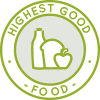 One Community is improving the human living experience through Highest Good food that is more diverse, more nutritious, locally grown and sustainable, and part of our open source botanical garden model to support and share bio-diversity:
One Community is improving the human living experience through Highest Good food that is more diverse, more nutritious, locally grown and sustainable, and part of our open source botanical garden model to support and share bio-diversity:
- Learn about the structures: Hoop House Hub | Aquapini & Walipini Open Source Hub
- See what we’ll be growing: Gardens & Hoop Houses | Large-scale Structures | Food Forest | TA
This week, the core team continued working on the Master Tools, Equipment, and Materials and Supplies List for the Large-scale Garden, Botanical Garden, and other Highest Good Food components. The team made comparisons between the RAB and CHICK docs, the MASTER and the SA doc, and the Master and EBV doc. APY doc will not be included on the Master doc and will be a doc on its own. The Highest Good Food initiative is a key component of One Community’s open source plans, focused on improving the human living experience and exemplifying the organization’s commitment through innovative design and implementation. Below are some images showcasing this work.
Anuneet Kaur (Administrator) continued her focus on the design of the Transition Food Self-sufficiency Plan components of the Highest Good food initiative. She began working on the Customizable Recipe Build-Out Tool webpage. Anuneet integrated Jae’s feedback and completed the Vegan Rice, Omnivore Rice, Vegan Potato, Omnivore Potato, Vegan Sweet Potato, and Omnivore Sweet Potato webpages. She ensured that each page followed the updated formatting guidelines, corrected inconsistencies, and optimized all links for SEO across the recipe sections. Anuneet also reviewed titles, spacing, and layout alignment to maintain uniformity throughout the Food Web project. Additionally, she ensured all team members were included in the live blog task and identified anyone who was missing. Anuneet reviewed Yulin’s infographic on sustainable research and provided detailed feedback. She fulfilled administrative responsibilities by editing summaries and collages for the Highest Good Society, Highest Good Education, and Core Teams, and reviewed fellow admin submissions for completeness and accuracy. Her work contributes to improving the human living experience. Below are some images showcasing her work.
Japneet Kour (Volunteer Architect) continued contributing to the Highest Good Food initiative. She reworked the Walipini #1 Frost-free Arid Zone Desert House by updating the SketchUp file, Lumion file, rendered images, and the walkthrough. The diversity elements created in a previous SketchUp model were merged into Gayatri’s SketchUp file to expand the range of plant varieties shown. The render references were aligned with the approach used in Zelipini 2 to maintain consistency and improve the presentation of the model. The Highest Good Food initiative is a key part of One Community’s open source platform, focused on sustainable and participatory development while improving the human living experience. Visual examples from her work are presented below.
Jay Nair (BIM Designer) continued developing the Aquapini and Walipini Planting and Harvesting documents. He worked on the lighting energy calculation documentation for Greenhouse Walipini 1, updating the relevant sections and refining the structure to ensure clarity and consistency. Jay reviewed the existing data, adjusted the layout where needed, and aligned the content with the project’s documentation standards while preparing the material for further development. The Highest Good Food initiative is a key part of One Community’s open source platform, focused on sustainable and participatory development while improving the human living experience. See below for pictures related to this work.
Nitin Parate (Architect) continued contributing to the Aquapini and Walipini renders and layout graphics. His work continued on the planting layers for the Walipini plan, focusing on sorting and selecting the planting legends required for the layout. The necessary elements were extracted and organized to ensure clarity and accuracy before they are used in the next stages of layout development and rendering. The effort remained centered on preparing clean, structured planting information that aligns with the updated design and supports the upcoming visual and technical work needed for the project. The Highest Good Food initiative is a key part of One Community’s open source platform, promoting regenerative and participatory development while improving the human living experience. Images below showcase his contributions.
Pallavi Deshmukh (Software Engineer) continued working on the Aquapini and Walipini Planting and Harvesting web details. She completed six interviews and provided the required details, added Zenapini #2 content from Silin to the website, moved misplaced data to the correct section of the page, and reviewed all images and hyperlinks before submitting the updates for review. Pallavi continued working on editing images according to requirements so they can be incorporated into the page, checked the entire page based on Jae’s feedback, and submitted it for review. She also created new content for blog 662 and collaborated with her teammates by reviewing their suggestions and incorporating feedback to maintain a consistent and clear final version. In alignment with One Community’s open source objectives, the Highest Good Food project integrates improving the human living experience into a larger vision of regenerative living. Her contributions are highlighted in the collage below.
Ravi Kumar Sripathi (Software Engineer) continued developing the Food Procurement and Storage software platform, enhancing features related to inventory tracking, recipe management, and food utilization. Ravi focused on UI/UX updates for the HGN Software Development project within the Inventory Software module, working on the Kitchen and Processing page to improve usability, simplify the interface, and adjust the flow for bulk order handling and menu calendar integration, while also updating wireframes for the Ordering and Procurement pages to include Surplus Opportunities in the design to support operational needs, bringing greater clarity and consistency across related interfaces by updating layouts in Figma to improve user experience within key inventory and ordering workflows. The Highest Good Food initiative is a key part of One Community’s open source platform, focused on sustainable and participatory development while improving the human living experience. See below for pictures related to this work.
Shivangi Varma (Architectural Designer and Planner) continued the redesign of the Highest Good Food overall presentation, currently focused on the Aquapini and Walipini masterplan render. Shivangi updated the masterplan landscape using the revised CAD files, refined the pathway organization and planting configuration for the Aquapini, Walipini, and Zenipini areas, incorporated feedback into the overall masterplan render, adjusted the planting layout to align with design changes, and revised the Aquapini render to reflect the latest inputs. The Highest Good Food initiative plays a leading role in One Community’s open source platform by promoting sustainable and participatory development, focused on improving the human living experience. Below are visuals highlighting this work.
HIGHEST GOOD ENERGY PROGRESS
 One Community is improving the human living experience through Highest Good energy that is more sustainable, resilient, supports self-sufficiency and includes solar, wind, hydro and more:
One Community is improving the human living experience through Highest Good energy that is more sustainable, resilient, supports self-sufficiency and includes solar, wind, hydro and more:
- Learn about the open source sustainable-energy foundations: Solar, Hydro, and Wind
- Explore our research into the most sustainable products and companies for saving water and energy: Insulation, Eco-laundry, Lightbulbs and Light Bulb Companies, Doors and Door Companies, Windows and Window Companies, Toilets, Faucets and Faucet Accessories, Urinals, and more.
This week, the core team continued contributing to the Highest Good Energy initiative. The team continued reviewing the highest good energy needs analysis, finished updating the format of all energy needs tables, verified energy needs values across the relevant sheets, and reviewed the energy cost sheets. They also watched the feedback video on the most sustainable paint, urinals, lights, and insulation and reviewed the corresponding pages to prepare for giving feedback on future drafts. The Highest Good Energy initiative plays a leading role in One Community’s open source platform by promoting sustainable and participatory development, focused on improving the human living experience. Below are images related to this project.
HIGHEST GOOD EDUCATION PROGRESS
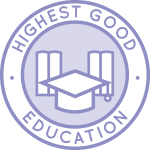 One Community is improving the human living experience through Highest Good education that is for all ages, applicable in any environment, adaptable to individual needs, far exceeds traditional education standards, and more fun for both the teachers and the students. This component of One Community is about 95% complete with only the Open Source School Licensing and Ultimate Classroom construction and assembly details remaining to be finished. We’ll report on the final two elements to be finished as we develop them.
One Community is improving the human living experience through Highest Good education that is for all ages, applicable in any environment, adaptable to individual needs, far exceeds traditional education standards, and more fun for both the teachers and the students. This component of One Community is about 95% complete with only the Open Source School Licensing and Ultimate Classroom construction and assembly details remaining to be finished. We’ll report on the final two elements to be finished as we develop them.
With over 8 years of work invested in the process, the sections below are all complete until we move onto the property and continue the development and open sourcing process with teachers and students – a development process that is built directly into the structure of the education program and everything else we’re creating too:
- Program Overview: Education Open Source Hub
- How the components work together in designing human orchestrated eco-abundance: How to use the Education for Life Program
- Lesson Plans for Life – Lesson Plans How-to
- Foundations of Outstanding Leaders, Teachers, and Communicators
- Curriculum for Life
- Teaching Strategies for Life
- Learning Tools and Toys for Life
- Evaluation and Evolution
This week, Prudhvi Marpina (Data Analyst) continued developing the Highest Good Education software platform, concentrating on Phase 4: marketing, promotion, and administrative activities. He worked on Phase 4 HGN software development by checking completed pull requests, verifying labels, confirming review counts across all five deliverables, and updating the Phase 4 document with the required images. He reviewed PR titles, checked for conflicts, coordinated with developers regarding merge requirements, and updated action items based on the latest inputs. He then updated the BlueSky social media dashboard by adding the weekly analytics data and completed the corresponding entries in the BlueSky document. Prudhvi also updated this week’s blog #662 for the administration team and provided feedback on the administrative work completed.Through these activities, he supported One Community’s commitment to improving the human living experience. The images below highlight his contributions.
HIGHEST GOOD SOCIETY PROGRESS
 One Community is improving the human living experience through a Highest Good society approach to living that is founded on fulfilled living, the study of meeting human needs, Community, and making a difference in the world:
One Community is improving the human living experience through a Highest Good society approach to living that is founded on fulfilled living, the study of meeting human needs, Community, and making a difference in the world:
- Read the Highest Good society overview: Highest Good Society
- Learn about the model for fulfilled living and sharing: A Day in the Life
- Learn about the 4 economic models: RBE | For-profit | Non-profit | Entrepreneurship
- Learn about our open source community collaboration and management software: The Highest Good Network
This week, the core team completed over 26 hours managing volunteer work reviews, handling emails, overseeing social media accounts, supporting web development, identifying new bugs, and integrating bug fixes for the Highest Good Network software. They also interviewed and onboarded new volunteer team members. Additionally, they produced and integrated the video above, which highlights how improving the human living experience serves as the foundation of One Community’s broader mission. The following images showcase highlights of this work.
Jaiwanth Reddy Adavalli (Project Manager) continued developing the Job Applicants page and key components of the Highest Good Network. He worked on the Phase 1 and Phase 3 software by testing multiple components and creating new action items to develop new components. He tracked updates in software team management documents to support task management. As a member of the pull request review team, Jaiwanth reviewed submissions from the volunteer team assigned to him. This work supports One Community’s commitment to improving the human living experience. The images below highlight his contributions.
Rajrajeshwari Gangadhar Sangolli (Data Analyst) continued working on Google Ads management and strategy evolution of the Highest Good Network. She completed administrative work for 12 volunteers for the Highest Good Food and Highest Good Energy pages, followed up with Jaiwanth, coordinated hour updates with Jae, and reviewed videos on task setup and document requirements. She added campaign analysis for the past two weeks, noted that last week underperformed for the month, and began looking into the cause. Rajrajeshwari coordinated with Jaiwanth on chart designs, applied the provided format, prepared entries for approved graphs pending Jae’s confirmation, and emailed Jaiwanth to check approval status. She created two new tasks for the current phase, checked the login page, tested errors and login flows, and tested main dashboard buttons. She developed a Google Ads strategy, reviewed existing ads, identified and fixed issues, updated the keyword plan, applied platform recommendations, and created seven new ad groups with keyword strategies for the food campaign in preparation for launch on Monday. This project supports One Community’s commitment to improving the human living experience. The images below highlight key aspects of her work.
Yagna Reddy Badvel (Data Analyst and Team Administrator) continued working on the Summary Dashboards and Weekly Report page on the Highest Good Network. He worked on Phase 2 of the HGN Bugs & Features tracking system by auditing the “Materials, Equipment, Tools, and Project Tracking System” tab. He checked tasks for missing fields, incorrect dropdowns, outdated statuses, and formatting issues, refined descriptions, fixed broken or duplicate bookmark links, and updated filtering logic to keep the tab aligned with current project needs. Alongside this, Yagna completed his regular admin responsibilities, including reviewing team summaries, checking media folders, updating tracking tables, providing feedback through the weekly reporting process, verifying SEO and image requirements, organizing folders, and preparing everything needed for the next workflow cycle. This work supports One Community’s commitment to improving the human living experience. The images below highlight his contributions.
ADMINISTRATION TEAM
The Administration Team’s summary, which covers their work on the Highest Good Network, was managed by Prudhvi Marpina (Data Analyst) and includes Anusha Gali (Software Engineer), Divanshu Bakshi (Team Admin), Indra Anuraag Gade (Software Engineer and Team Administrator), Keerthana Chitturi (System Administrator), Mridul Bhushan (Volunteer Project Strategy Analyst and Team Administrator), Neeharika Kamireddy (Data Analyst), Olawunmi “Ola” Ijisesan (Administrative and Management Support), Olimpia Borgohain (Data Analyst and Team Administrator), Priyanshi Sharma (Data Analyst and Team Administrator), Rachna Malav (Data Analyst), Rajeshwari Bhirud (Administrator), Rishitha Adepu (Administrator), Sai Suraj Matta Veera Venkata (Business Data Analyst), Sayantan Paul (Volunteer Frontend Tester and Software Team Administrator), and Sudarshan Raju Chintalapati Venkata (Data Analyst). The Administration Team supports the Highest Good Network, a tool designed to track and measure progress while developing systems that contribute to improving the human living experience. Through administrative support, documentation, testing, training, recruiting, analytics, and content management, the team helps advance this mission, aligning with One Community’s vision of building a replicable and sustainable future model.
This week, Anusha completed Level 2 testing across the HGN system by validating frontend and backend pull requests, updating priority tags, compiling summaries, preparing collages, and supporting administrative workflows. Divanshu documented daily Mastodon posts, processed analytics using Python, updated the Master Dashboard, and logged platform-related issues. Indra prepared Blog #662 for the Code Crafters Team, updated Twitter analytics, advanced ML model development, and reviewed multiple pull requests addressing UI behavior, dark mode functionality, and alignment issues. Keerthana reviewed summaries, updated Step 2 and Step 4 documentation, prepared the weekly blog, and added Phase 3 action items. This work supports One Community’s mission of improving the human living experience.
Mridul refined Moonfall Team submissions, finalized the WordPress blog version, created collage alt text, optimized media files, and completed OC Administration checks, supporting improving the human living experience. Neeharika coordinated software team tasks, followed up on assigned items, tested pull requests, reviewed admin work, verified corrected PDFs, and conducted interviews. Ola organized administrative folders, restructured workspace documents, reviewed Pinterest templates, ensured all scheduled content was prepared for the month, and uploaded weekly visual assets. Olimpia updated LinkedIn analytics KPIs, completed senior admin review checks, resolved documentation comments, managed warnings and blue square notifications, and scheduled next week’s LinkedIn content, further strengthening improving the human living experience.
Priyanshi continued Phase 2 testing by validating dark mode behavior, identifying tab alignment issues, reviewing filter interactions, and documenting pull request findings. Rachna reviewed older tasks, checked emails and comments, and monitored SEO pages for updates. Rajeshwari managed the Binary Brigade weekly blog (#662), updated SEO keywords, documented detailed test cases, verified BM Dashboard scenarios, and refined WordPress content. Rishitha optimized the combined blog, updated bios, uploaded Threads content, added raw data to the dashboard, and updated the volunteer tracker. This effort advances One Community’s focus on improving the human living experience.
Sai Suraj completed analytics updates for Facebook and Instagram, maintained automated insights, scheduled content, organized image assets, and performed administrative updates including summary reviews and SEO checks. This contributes to One Community’s goal of improving the human living experience. Sayantan continued Level 1 testing across merged pull requests, verified dashboard behavior, validated warning pop-ups and dark mode displays, tested Badge and Blue Square features, and gathered visuals for Team Skye. Sudarshan managed the Alpha Software Team blog, completed SEO and collage updates, added new tasks for bugs and enhancements, reviewed and tested Phase 3 pull requests, and validated dashboard updates. To learn more about how this work supports improving the human living experience, visit the Highest Good Society and Highest Good Network pages. Highlights of the team’s contributions are shown in the collage below.
GRAPHIC DESIGN TEAM
The Graphic Design Team’s summary includes Qinyi Liu (Graphic Designer), and Yulin Li (Graphic Designer), who focused this week on creating graphic designs that support improving the human living experience.
This week, Qinyi created and refined new characters using ChatGPT, designed the related posters and layouts, and added the assigned announcement to the website while improving the human living experience. Yulin revised infographics and announcements, prepared and published a team update, organized assets, and participated in weekly discussions while improving the human living experience. Their efforts highlight improving the human living experience. See the Highest Good Society pages and the collage below for examples of their work.
HIGHEST GOOD NETWORK PROGRESS
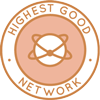 One Community is improving the human living experience through open source Highest Good Network® software that is a web-based application for collaboration, time tracking, and objective data collection. The purpose of the Highest Good Network is to provide software for internal operations and external cooperation. It is being designed for global use in support of the different countries and communities replicating the One Community sustainable village models and related components.
One Community is improving the human living experience through open source Highest Good Network® software that is a web-based application for collaboration, time tracking, and objective data collection. The purpose of the Highest Good Network is to provide software for internal operations and external cooperation. It is being designed for global use in support of the different countries and communities replicating the One Community sustainable village models and related components.
- Learn about our open source community collaboration and management software: The Highest Good Network
This week, the core team tested HGN pull requests and confirmed 11 fixed PRs. This effort highlights One Community’s commitment to improving the human living experience.
The following PRs were not fixed: the change to the default for BCC and its placement at the top of the list, the addition of dark mode styles to the UtilizationChart, the distribution of labor hours pie chart, the background color update for the pagination component, the alignment and dark mode issues in TotalOrgSummary, the loader state update for the Role Distribution Pie Chart in TotalOrgSummary, and the design of the database structure for event tracking. They were also not able to test six PRs because there was no data on the Main branch. This work strengthens One Community’s mission of improving the human living experience. See the Highest Good Society and The Highest Good Network pages, and the collage below, for an overview of the team’s contributions.
ALPHA SOFTWARE DEVELOPMENT TEAM
The Alpha Software Team, working on the Highest Good Network software, was managed by Lin Khant Htel (Frontend Software Developer). The team includes Maneesh Buddha (Software Developer) and Nikita Kolla (Full Stack Developer). The Highest Good Network software is a key part of sustainable and free-shared eco-solutions, helping track and measure progress toward improving the human living experience. The software supports social architecture, construction, production, and maintenance processes that contribute to the open source project and resilient ecosystems. Designed to be portable and scalable, the Highest Good Network software is well suited for off-grid and sustainable living communities. This project reflects One Community’s open source commitment to advancing and improving the human living experience.
This week, Maneesh worked on two tasks in the Job Posting Page, completed the debugging of the Select Category filter so it returns accurate listings and switches correctly between categories. This aligns with One Community’s dedication to improving the human living experience. He then focused on the Edit to Reorder feature, confirming that the drag-and-drop interface updates the order visually while identifying that the updated order is not being saved, leading him to review the component logic, inspect the API flow, and trace where the save process fails. He also addressed local environment issues to ensure both the backend and frontend operate correctly for ongoing debugging. Nikita rewrote the core portion of the code using a builder design pattern to reduce repetition and improve customization, and during this refactor she identified additional bugs, including issues in the logic responsible for calculating additional hours, which she rewrote to align the calculations with the expected behavior. See the Highest Good Society and Highest Good Network pages for more on how this contributed to improving the human living experience. See the collage below to view the team’s work.
BINARY BRIGADE SOFTWARE DEVELOPMENT TEAM
The Binary Brigade Team, presenting their work on the Highest Good Network software, was managed by Nikhil Routh (Software Engineer) and included Kanishk Agarwal (Software Engineer), Apoorva Jain Ramapura Prashanth (Software Engineer), Ramsundar Konety Govindarajan (Software Engineer), Harsha Rudhraraju (Software Engineer), Sourabh Bagde (Software Developer), Taariq Mansurie (Full-Stack Developer), Sumedh Kumar (Full-Stack Developer), Aswin “Tony” Kanikairaj (Software Engineer), and Amalesh Arivanan (Software Engineer). The Highest Good Network software is our tool for managing and objectively measuring progress, ensuring that all contributions are tracked and aligned with our mission, modeling, and improving the human living experience.
This week, Amalesh continued work on the Phase 2 Summary Dashboard by creating a line chart for weekly progress, adding KPI tiles, implementing date range filtering, and developing backend support for weekly task aggregation; he enhanced the Weekly Team Summaries page by improving the mismatched team codes function and adding filters, completed the refresh button functionality for the disconnected timer in pull request 4459, resolved merge conflicts for the “Replicate Task” feature and related integration tests, and uploaded required documentation to the shared folder while maintaining onboarding compliance. This helps further One Community’s vision of improving the human living experience. Apoorva optimized the email template loading process by implementing lazy loading to reduce the initial payload, improved the Send Email form UI with better spacing and visibility adjustments, redesigned the Edit Email Template variable chips using a CSS Grid layout, added a three-dot dropdown menu to the Email Outbox page for triggering the pending and stuck email processor with corrected API routing and permission checks, fixed related issues involving user IDs and endpoint paths, identified a UX notification inconsistency and proposed a toast.info update, and created detailed guides for recreating two email templates. This effort is part of One Community’s strategy for improving the human living experience.
Aswin completed UI and UX improvements for the Projects Dashboard by enhancing layout structure and dark-mode compatibility, reorganizing the Rented Tools and Materials sections with consistent card layouts and urgency cues, refactoring table elements for visibility and mobile responsiveness, ensuring responsiveness across all modules, and updating and organizing associated CSS as part of the merged work. This work strengthens One Community’s commitment to improving the human living experience. Harshavarma added dark mode support for additional sections of the pop-up page, validated filters for the drop-off tracking and no-show charts using mock data, began preparing a dummy backend for development testing, continued building the main chart component to support backend data flow, refined responsive behavior across screen sizes, reviewed filter event-handling logic for immediate updates, reorganized the component structure for maintainability, and tested multiple scenarios for accuracy. This project reflects One Community’s emphasis on improving the human living experience. Kanishk completed two Phase 3 tasks by adding filter dropdowns and action buttons for the Event Database Design work, testing and opening a pull request, and by implementing backend logic and API endpoints for event popularity metrics, creating frontend visualizations for popularity and engagement data, and developing UI components with structured state management. This supports One Community’s progress toward improving the human living experience. Nikhil continued the CSS Modules migration effort by converting remaining files, updating imports and class mappings, reviewing related PRs, validating component behavior, and coordinating team tasks; he investigated the MongoDB timeout issue, clarified backend requirements with a teammate and outlined database structure changes, assisted in the analysis of a production data deletion incident and recommended preventive monitoring and alerting, and supported a team member with a Phase III task while raising questions about backend needs. This action enhances One Community’s pursuit of improving the human living experience.
Ram resolved the issue where the Usage Record modal was not displaying data by identifying missing logic for UsageRecord, updating both frontend and backend code through PRs 4455 and 1421, and then moved on to address a Phase 2 task involving a page crash in the Lessons Learned Bar Chart. This work is aligned with One Community’s focus on improving the human living experience globally. Sourabh rebuilt the MySpace announcement workflow to align required fields with the submission form, added validation and helper features, reorganized UI sections using new CSS Grid layouts, updated copy behavior to utilize async handlers, ensured consistent field display through state management, and continued work on the scheduler notification feature. This supports One Community’s ongoing commitment to improving the human living experience everywhere. Sumedh worked on the Daily Activity Log Bug by adding frontend safety checks and UI messages, updated related functionality in PR-4462, triaged the Cost Prediction Issue, fixed dark mode and responsiveness in the Global Distribution Map, corrected project count logic in PR-4473, resolved SonarCube duplication warnings, and briefly addressed the Submit Button Bug. Taariq resolved merge conflicts, fixed lint issues from the Node 20 upgrade, progressed the archived projects and filter selection features toward integration, debugged issues in the lesson plan edit history table, addressed auto-scroll and auto-refresh problems, and reviewed final changes needed before merging multiple feature updates. See the Highest Good Society and Highest Good Network pages for more information on how this work models improving the human living experience. The collage below shows images of their work.
BLUE STEEL SOFTWARE DEVELOPMENT TEAM
The Blue Steel Software Team, working on the Highest Good Network software, was managed by Divanshu Bakshi (Product Manager), and includes Linh Huynh (Software Engineer), Som Ramnani (Software Engineer), and Sheetal Mangate (Software Engineer). This week, Linh created two branches to begin work on the Educator Task Submissions feature, reviewed backend and frontend pull requests from the previous developer, resolved merge conflicts on the backend branch, and debugged filtered query issues where requests using status and studentId parameters returned empty arrays while unfiltered requests returned data. Improving the human living experience remained a shared focus across all tasks and updates. Sheetal coordinated the summary, noting that Linh and Som did not provide one. Linh continued testing with educator authentication, checked out the frontend implementation branch, confirmed routing for the educator submissions page, configured the development environment, and investigated a 404 error appearing when the frontend attempted to load submissions by reviewing routing configuration and planning validation of API path mapping. This contributes to One Community’s long-term goals of improving the human living experience. Som updated the date selection logic by replacing the previous input field with a DatePicker component, refactored the handleDateChange function to accept a Date object, added validation to prevent selecting past dates, implemented a toast error message for invalid selections, removed outdated parsing logic, simplified state updates for selectedDate and dateError, ensured consistent error messaging across inputs, and completed cleanup of older related code. Som also continued addressing recurring merge issues involving package-lock.json and yarn.lock in PR #4215. Sheetal worked on unit testing for the Reddit auto-poster in preparation for frontend and backend submissions, submitted frontend PR #4478 and backend PR #1928, reviewed SonarCloud Code Analysis results to understand flagged items, and resolved UI fixes and merge conflicts during testing while continuing work aligned with improving the human living experience. The collage below shows images of their work.
CODE CRAFTERS SOFTWARE DEVELOPMENT TEAM
The Code Crafters Team, covering their work on the Highest Good Network software, was managed by Vivek Chandra (Software Engineer) and includes Ajay Naidu (Software Engineer), Akshith Kumar Reddy Balappagari Gnaneswara (Software Engineer – Full Stack), Chaitanya Swaroop Kumar Allu (Software Engineer), Juhitha Reddy Penumalli (Software Engineer), Shradha Bhadrannavar (Software Engineer), Sphurthy Satish (Software Engineer). The Highest Good Network software is how we’ll manage and objectively measure our progress in improving the human living experience through our social architecture, construction, production, and maintenance efforts, while supporting widespread and lasting eco-lifestyle access.
This week, Ajay improved the request flow to streamline user experience and navigation by addressing layout and interaction issues, fixing visibility problems in the search filter component, and migrating styles from global CSS to CSS Modules to prevent selector collisions while verifying that all updates integrated smoothly with existing components. This work reinforces One Community’s belief in improving the human living experience for all. Akshith completed Phase 4 work on the PM Educator Training Dashboard frontend by resolving bugs, testing updated functionality, and submitting a pull request, continued an admin dashboard update involving a shift to CSS Modules while investigating a version mismatch, and began backend setup for Individual Student Report Generation. Chaitanya enhanced the Lesson List functionality by implementing a CSV export feature with confirmation prompts, structured field formatting, UTF-8 encoding, validation, and user feedback notifications to ensure accuracy and stability. This task plays a key part in One Community’s approach to improving the human living experience. Juhitha advanced Phase 4 development for the Resource Management Dashboard by building the certifications and resource request tabs, integrating the shared grid, implementing search and filtering logic, preventing feature overlap, updating tags, refining alignment issues, connecting export functionality to mock data, and finalizing tab navigation while validating interactions across the dashboard.
Shradha reviewed the Mastodon auto-poster implementation, researched core Mastodon behavior, analyzed PRs #3344 and #1297 to understand scheduler logic, API endpoints, and UI structure, and documented key findings while tracing code paths to clarify the end-to-end feature flow. This work supports One Community’s mission of improving the human living experience. Sphurthy implemented and refined the new Analytics Overview feature in the Education Portal by integrating frontend dashboard components, wiring overview and student-level analytics to backend endpoints, adjusting environment configuration to ensure proper local API connectivity, resolving route and authorization issues, and improving date filter behavior and calendar styling across themes. Vivek focused on diagnosing a backend connectivity issue in the local environment by investigating database connection failures, testing configuration changes related to a new MongoDB variable, reviewing logs and code paths, and collaborating with teammates to isolate the root cause while gathering the information required to continue debugging. These contributions strengthen One Community’s mission and commitment to improving the human living experience. The collage below shows an overview of this team’s work.
DEV DYNASTY SOFTWARE DEVELOPMENT TEAM
The Dev Dynasty Team’s summary, covering their work on the Highest Good Network software, was managed by Prem Vora (Software Developer) and includes Adithya Cherukuri (Volunteer Software Engineer), Aditya Gambhir (Software Engineer), Deekshith Kumar Singirikonda (Developer), Manvitha Yeeli (Software Engineer), Nahiyan Ahmed (Full-Stack Software Developer), Sriamsh Reddy (Software Engineer), Neeraj Kondaveeti (Software Engineer) and Vamsidhar Panithi (Software Engineer). The Highest Good Network software is how we’ll manage and objectively measure our processes for open sourcing a better world for us all through our social architecture, construction, production, and maintenance processes. This progress supports One Community in improving the human living experience.
This week Nahiyan reviewed PR 4446 by checking alignment with the approved dark mode palette, identifying incorrect color values, verifying that layout and functionality remained consistent, and providing guidance based on the design document. This effort advances One Community’s focus on improving the human living experience. Adithya worked on software development for the HGN application, beginning with backend tasks for the Listing and Bidding Platform where he created payments for listing bookings and tested validation for authorization, date logic, and required fields, then continued expanding backend validations for incorrect listings, overlapping dates, and invalid payment identifiers before shifting mid-week to resolving the Edit Existing Team redirect issue by updating route structure, adding Redux logic to fetch active teams, creating a building-specific view, and debugging data mismatches while also preparing the weekly summary and reviewing uploaded images. This contributes to One Community’s goal of improving the human living experience. Aditya worked on implementing and testing the Paid Labor Cost feature across the frontend and backend by updating the grouped-bar chart to align with the new API, adjusting request handling and date formatting, modifying the user interface to use separate date selectors and backend-driven filtering, adding a summary section, implementing the Paid Labor Cost controller and router with query parsing and validation logic, building a Postman test suite to verify filter and error cases, and adding Jest coverage for helper functions, controller logic, and route behavior, resulting in high test coverage. This aligns with One Community’s dedication to improving the human living experience. Deekshith worked on React components related to IssueHeader and LessonForm by managing state and actions through Redux, loading project and user data on mount, handling local UI behavior, integrating form controls and backend communication for lesson creation, and applying CSS module styling for layout and component structure. This helps further One Community’s vision of improving the human living experience.
Manvitha updated PR4158 to fix dark mode visibility for the “No job ads found” text, corrected a layout cutoff issue, adjusted search behavior so the heading updates as the user types, and worked on backend development for the Teacher Resource Request feature by adding educator and PM workflows, role-based access checks, validations, and routing for new endpoints while also attempting to troubleshoot a MongoDB connection timeout that is preventing testing. This effort is part of One Community’s strategy for improving the human living experience. Neeraj completed front-end updates for the Job Posting Analytics and Collaboration modules by adjusting alignment, label overflow, and dark mode visibility, updating filter spacing and chart colors, refining the job filter workflow, resolving dropdown and chip issues, addressing SonarQube feedback by removing duplicate code and simplifying components, reorganizing CSS structure, and preparing for upcoming test file development. Prem worked on the Past Dates Search feature in the Activities List Calendar by adding state logic and error handling for past date selections, investigating environment issues involving header initialization, CORS errors, and login failures, stabilizing the environment, completing the feature with dark mode support and UI validation updates, preparing the related pull request, and reviewing multiple pull requests while identifying access issues, server errors, and login problems during testing. This work strengthens One Community’s commitment to improving the human living experience. Sriamsh worked on sorting functionality for the Materials and Items tables by reviewing components, adding sorting logic, verifying behavior, and submitting a pull request, then began initial work on the Project Status Donut Chart by reviewing requirements, examining backend routes, testing the status endpoint, and setting up the initial component and data-fetching structure. Vamsidhar addressed dark mode styling issues for the Injury Severity by Category of Worker Injured card by adjusting color contrast for dropdown labels and options across filter categories and is resolving backend MongoDB connection issues before testing, with related updates recorded under PRs 3619 and 4479. See the Highest Good Society and Highest Good Network pages for more on how this relates to our mission of improving the human living experience. Explore some of the team’s work in the collage below.
EXPRESSERS SOFTWARE DEVELOPMENT TEAM
The Expressers Team’s summary, which covers their work on the Highest Good Network, was managed by Rahul Trivedi (Software Engineer) and includes Casstiel Pi (Software Engineer), and Meenashi Jeyanthinatha (Full-Stack Developer). This effort supports One Community’s goal of improving the human living experience.
This week, Casstiel continued work on the task to fix a site crash caused by clicking the lesson box. During testing, the backend failed to start and the login functionality was affected due to a MongoDB connection issue, which was resolved by adjusting environment file variables. Casstiel reviewed the related error logs and identified the root cause as the use of a deprecated npm package, which was removed and replaced to complete the fix. Continue to work on this task as the dark mode cuased the component to display invisible text. This work directly contributes to One Community’s mission of improving the human living experience.
Meenashi worked on adding Dropbox file size and file type restriction validations to the backend, implementing isRequired validation for responses based on the corresponding questionId so the API returns an error when required fields are missing or invalid, updating the email subject to include the job post applied for and the respondent’s email address, and updating the backend PR with a detailed description and test instructions; additional work included preparing a Dropbox demo that explains how to generate a refresh token using the app’s client_id and client_secret, adding steps for enabling email so responses can be sent to the configured recipient address, and documenting the steps for uploading a file and retrieving a shareable link, adding a job, and submitting a response; current issues involved the inability to upload videos due to a MongoDB connection error and an inability to log into Slack, along with a Dropbox token created under a personal email address that linked to a personal application instead of the shared team drive, with a request sent to Jae for help when available; the authorization flow for obtaining a refresh token was reviewed without including the related URLs, as the focus is on enabling uploads to the shared team drive; MongoDB was initially not starting locally due to changes in the environment but was restored after updating the environment variables; jobForms missing for some adReplies positions were added back; and updates to the PR with backend and frontend videos are still in progress. This work directly contributes to One Community’s mission of improving the human living experience. Rahul worked on resolving merge conflicts in PR 4212 by updating file names, adjusting .css files to .module.css, and making changes to class names to address ongoing merging issues. Additional updates were made to improve the logic for handling Reports components and to modify related css files to reduce conflicts. Alongside development work, Rahul completed team management tasks, including reviewing summaries, videos, and images, assisting new team member Deb Mikerjee with setting up the application on his system, and conducting the weekly team meeting. See the Highest Good Society and Highest Good Network pages for more on how this work contributes to improving the human living experience. See the collage below to view the team’s work.
LUCKY STAR SOFTWARE DEVELOPMENT TEAM
The Lucky Star Team’s summary, covering their work on the Highest Good Network, was managed by Keerthana Chitturi (System Administrator) and Sohail Uddin Syed (Software Engineer). The team includes contributions from Abhishek Jain (Software Engineer), Aryan Rachala (Software Engineer), Chirag Bellara (Software Engineer), Shravya Kudlu (Software Development Engineer), Veda Bellam (Software Engineer), Venkataramanan Venkateswaran (Software Engineer) and Vinay Krishna (Software Engineer). Their work supports One Community’s goal of improving the human living experience through cross-functional software development and ongoing system improvements.
This week, Abhishek achieved a major milestone in the Code Coverage Improvement Initiative with the successful merge of the HGNRest backend PR (#1754), officially bringing automated testing enforcement into the codebase. This work strengthens One Community’s commitment to improving the human living experience. He completed the ClickUp board infrastructure for tracking the team’s progression toward the 60% coverage target over the planned 6–8-week improvement period. He also drafted a comprehensive announcement email for Jae to communicate the workflow changes, outlining the rollout plan, technical requirements, and developer responsibilities. The week included coordinating the phased implementation strategy and confirming that frontend automation will follow once GitHub runner performance issues in the HighestGoodNetworkApp repository are resolved. This coordination and system setup contribute to improving the human living experience. Aryan worked on resolving issues in the HGN Questionnaire Dashboard, ensuring the “Show your team members” section on the Top Community Member page displayed accurate data. He refactored the logic to properly load team data through the API, added client-side filtering, and updated the user card component to handle missing fields safely. He also improved layout and responsiveness using Flexbox and JSX updates to provide better alignment and user experience. These technical refinements contribute to improving the human living experience. Chirag completed the Project Link fix, committed the code changes, and created pull request #4472. He then began developing the tools filter dropdowns and table-sorting functionality, analyzing dependencies to ensure new filters integrate smoothly without breaking other shared components. These improvements support improving the human living experience. Durga resolved issues identified during the code review, added a side navigation bar to the Evaluation Results section, updated mobile and report views, and obtained approval to convert CSS files to module CSS. He also prepared the analytics pull request for merging and documented next steps for resolving merge conflicts and integrating frontend and backend functionality once the required APIs become available. This steady progress contributes to improving the human living experience. Shashank fixed errors in the update and delete flows for intermediate tasks on the frontend, added a delete modal, and updated the student profile to include intermediate tasks. He added mark-as-done functionality and progress bars for intermediate tasks, linking the parent task’s status and progress to its child tasks for more accurate tracking. This backend and frontend progress supports improving the human living experience. This supports One Community’s progress toward improving the human living experience.
Shravya worked on Phase 4 of the backend, focusing on aggregating class performance data. After outlining the implementation plan last week, she encountered database connection issues and generated mock data using the MongoDB structure to proceed with development. She implemented the logic, configured the endpoint as specified in the requirements, and prepared it for validation once database access becomes available. These contributions help improving the human living experience. Sohail reviewed and refined the email threading implementation to ensure compatibility with Gmail and Outlook. He verified and adjusted the EmailThread and EmailHistory models, corrected argument order in userHelper.js for emailSender calls, added missing threading options, and refactored the utility for robustness. He updated queueing logic to support deferred promise resolution and modified the unique-key generation to prevent overwriting records. He also reviewed PR #1479 to confirm that remaining badge-functionality issues were resolved. This backend refinement contributes to improving the human living experience. Veda worked on multiple tasks within HGN Software Development, focusing on job posting and application features. She frequently pulled the development branch, resolved merge conflicts, fixed errors, and created a donut chart visualizing candidate breakdown by experience and education level. She implemented permissions for question-set creation, refined UI alignment, visibility, and responsiveness, and prepared pending updates for review. These enhancements support improving the human living experience. Venkataramanan worked on several frontend and backend updates across the platform. On the frontend, he added a 40-hour limit to Add Lost Time and Edit Lost Time pages, improved UI alignment for Total Org Summary charts, and updated multiple components related to timelog limits, summary submission, badge assignment, issue viewing, and Sunday time-off warnings. On the backend, he modified email sorting for blue-square additions, fixed the controller error affecting Total Org Summary, and prepared an incident report outlining causes and recovery steps following a data deletion event. These fixes contribute to improving the human living experience. Vinay worked on Indra’s Application/Job Posting Page—Application Form Template in /jobformbuilder to remove the per-question “Clone” button, following the high-priority request from Jae and Mrinalini to enable distinct application question sets linked to PR #2928 and #1167. The update removed redundant field-level controls, retained full-template cloning, and ensured add-field behavior remained intact. Validation focused on usability, consistency, routing, and save flows, with final adjustments completed as he prepared the demonstration video for upload. This UI and workflow enhancement supports improving the human living experience. See the Highest Good Society and Highest Good Network pages to learn more about how this work supports improving the human living experience. See the collage below highlighting the team’s work for the week.
MOONFALL SOFTWARE DEVELOPMENT TEAM
The Moonfall Team’s summary, which covers their work on the Highest Good Network, was managed by Bhavpreet Singh (Software Engineer) and includes Aayush Shetty (Software Engineer), Alisha Walunj (Software Engineer), Mani Shashank Marneni (Software Engineer), Sai Krishna (Software Engineer), and Sudheesh Thuralkalmakki Dharmappa Gowda (Full Stack Developer). Their efforts advance One Community’s mission of improving the human living experience, promoting open-source collaboration, ecologically responsible innovation, and holistic global progress.
This week, Bhavpreet added mobile responsiveness and dark mode to the education portal’s analytics widgets, updated the frontend to apply dark mode to the download reports button, and introduced middleware, validation services, and structural improvements to the backend. This work is aligned with One Community’s focus on improving the human living experience globally. Sai addressed the utilization chart’s start and end date functionality, implemented the fix, tested the changes, submitted a pull request, and then moved to the add materials page to work on date and phone number functionality by reproducing the issue, reviewing the code, and adjusting the date logic to block future dates. Sudheesh worked on Phase 2 of the HGN Software Development project by adding column-specific tooltips to the Daily Equipment Log Page, integrating React uncontrolled tooltips, refining styling, and reviewing requirements to improve hover tooltip visibility on the Project Risk Graph in dark mode. This supports One Community’s ongoing commitment to improving the human living experience everywhere. Mani contributed to Phase 3 error handling by implementing a success confirmation system that added toast notifications and modal confirmations with full event details, finalizing dark mode integration with Redux-based support, integrating the feature into the Community Portal through component relocation and CPProtectedRoute, and adding clear “No Results Found” messaging before submitting the work for review. This work reinforces One Community’s belief in improving the human living experience for all.
Aayush continued Phase 2 Tools and Equipment Tracking by addressing the missing dashboard graph, reviewing requirements, analyzing code updates, resolving MongoDB migration issues, fixing backend errors, resolving merge conflicts, updating the branch, and fixing the hover-related bug in the Lessons Learned component while capturing progress images for documentation. This task plays a key part in One Community’s approach to improving the human living experience. Alisha worked on Phase 4 of the Learner Knowledge Evolution View across backend and frontend by reinjecting data into eight collections after database restoration, updating action creators, testing backend functionality, fixing link displays and userId retrieval, rebasing her branch, removing temporary loggers, completing implementation and testing for the knowledge evolution feature, adding tooltip displays, raising pull requests, debugging navigation issues between template and topic selection, applying CSS fixes, implementing drafting activities in the Lesson Plan Builder multistep form, and configuring the modal view for adding a new activity. Visit the Highest Good Society and Highest Good Network pages for more on how this work supports improving the human living experience through open-source development and globally accessible resources. The collage below reflects the team’s primary accomplishments for this week.
REACTONAUTS SOFTWARE DEVELOPMENT TEAM
The Reactonauts Team’s summary, covering their work on the Highest Good Network, was managed by Sai Suraj Matta Veera Venkata (Business Data Analyst) and Akshay Jayaram (Software Engineer). The team includes Aseem Deshmukh (Software Developer), Diya Wadhwani (Software Developer), Guna Pranith Reddy Cheelam (Software Developer), Kristin Dingchuan Hu (Software Engineer), Namitha Vijaykumar Pawar (Software Engineer), Peterson Rodrigues dos Santos (Full Stack Developer), Siva Putti (Software Engineer), Sri Satya Venkatasai Siri Sudheeksha Vavila (Software Engineer), Suparshwa Patil (Software Engineer), Tom Linn (Software Engineer), and Ujjwal Baranwal (Full-stack Software Developer). The Highest Good Network software helps manage and objectively measure progress by focusing on demonstrating improving the human living experience. It supports social architecture, construction, production, and maintenance processes to build sustainable and thriving ecosystems.
This week, Akshay completed the dark mode implementation for the Community Portal and opened PR4477, continued dark mode work on the Reports section including layout updates, CSS module conversion, selector fixes, and alignment adjustments while also coordinating team pull requests, helping resolve Git issues, and submitting the weekly review. Aseem worked on resolving the recurring “Issue getting the data” error by updating backend and frontend API configurations, reached out for clarification when the issue appeared tied to previous merges, and reported a MongoDB error after data migration that blocked backend testing for PR1665. This work contributes to improving the human living experience. Diya resolved production-facing issues including zeroing behavior in the Weekly Summaries Report, updated Blue Square email reply-to logic, and created an endpoint for removing task resources on updates, submitting PRs #4481, #1922, #1919, and #4453. Guna continued updates for PR3999 to fix image requests and tab headings on the listings home page and continued debugging the “Page not Found” issue for the attendance tracking page in Dev. Kristin completed dynamic calendar event state changes in the Community Portal by integrating registered count and capacity rules and began adding dark mode styles for the log attendance page. This task plays a key part in One Community’s approach to improving the human living experience.
Namitha refactored the Activities List page to support dark mode using Redux state, applying scoped styling and adjusting inputs, cards, and dropdowns to ensure consistent appearance. Peterson fixed filtering behavior on the User Management page so that last-name searches work correctly even when spaces are included (PR4464). Siva updated dark mode styling on the Engagement page including event cards, calendar, buttons, text inputs, and feedback components while removing inline styles and ensuring consistent contrast (PR4467). These efforts collectively support One Community’s improving the human living experience goals. Sudheeksha spent 20 hours working on separate inputs for tools and equipment functionality, investigating and fixing file issues to support proper form behavior.
Suparshwa improved chatbot reliability by refining prompt behavior, developing memory orchestration, testing model inputs, resolving merge conflicts, researching performance improvements, and performing load testing. This work supports One Community’s mission of improving the human living experience. Tom continued frontend work on the resource usage overview page by applying CSS modules, troubleshooting login blocking issues, testing facilities search, evaluating Add New Log functionality, and working to restore dark/light mode toggle behavior. Ujjwal verified that Edit Unit functionality works after API updates, continued developing and testing Edit Name functionality, and began implementing the frontend connection for both update features. See the Highest Good Network and Highest Good Society pages to learn more about how this work supports modeling pioneering improving the human living experience. See below for the work done on demonstrating improving the human living experience.
SKYE SOFTWARE DEVELOPMENT TEAM
The Skye Team’s summary, covering their work on the Highest Good Network, was managed by Sayantan Paul (Frontend Tester and Software Team Administrator) and Anthony Weathers (Software Engineer). The team includes Julia Ha (Software Engineer), Lavanya Lahari Nandipati (Software Developer) and Marcus Yi (Software Engineer). The Highest Good Network software objectively tracks and manages progress, with a focus on improving the human living experience. It supports social architecture, construction, production, and maintenance processes that foster sustainable and thriving ecosystems. Designed to be portable, scalable, this solution is ideal for off-grid and sustainable living communities – a practical example of improving the human living experience.
This week, Julia addressed conflicts and failed tests across several pull requests, refactored code in PR#4150 by removing duplicated logic, created the FilterEditForm and FilterPreviewForm components to reduce duplication and moved all filter toggles into a separate component. This effort advances One Community’s focus on improving the human living experience. She merged and resolved conflicts in PR#1888 and PR#4344, and updated PR#4268 by improving mobile responsiveness for the date picker input and fixing failed tests. Lavanya reviewed badge behavior across multiple historical weekly ranges and documented ongoing issues affecting several badges, including the “New Max”, “5x Minimum Hours”, “30 Hours in 1 Week”, “40 Hours in 1 Week”, and “100 Hours Stewardship” badges, confirming incorrect or inconsistent updates related to modified dates, earned dates, counts, and badge assignments. After observing repeated inconsistencies, she paused badge testing until fixes were applied and also reviewed the high-priority issue involving users changing the system date to log time for a different week. By addressing these immediate challenges, their work continues to directly support One Community’s mission of improving the human living experience.
Marcus coded initial components for the Facebook autoposter, obtained the required Facebook Developer API keys, built the backend pieces needed for the feature, and noted that the functionality was still not operating as expected because the backend had not yet been connected to the existing wireframe. Anthony handled a new merge conflict for PR#3713 and notified that its backend pair was ready to merge. He continued working on updates related to PR#3978 and PR#1682 by correcting the date value for blue squares and adding conditions for various warning scenarios. Additionally, Anthony began implementing functionality to issue a blue square from the dashboard page, addressing errors, missing values, and description updates required for the feature. See the Highest Good Society and Highest Good Network pages for more on how this contribution advances One Community’s goals of improving the human living experience in the Highest Good Network open source hub. See the collage below for the team’s work.
SOFTWARE PR REVIEW TEAM A-N
The PR Review Team’s summary for members with names starting A–N, managed by Neeharika Kamireddy (Data Analyst), highlights their contributions to the Highest Good Network software. This platform forms the foundation for measuring our results in improving the human living experience. Active team members included Abdelmounaim Lallouache (Software Developer), Bhanu Anish Akkineni (Software Engineer), Carl Bebli (Software Developer), Nahiyan Ahmed (Full Stack Software Developer), and Nathan Hoffman (Software Engineer). They supported the project by reviewing all pull requests shared this week. Learn more about how the Highest Good Network tracks progress toward improving the human living experience in the Highest Good Network open source hub. The collage below showcases a compilation of this team’s work.
SOFTWARE PR REVIEW TEAM O-Z
The PR Review Team’s summary for team members with names starting from O–Z, covering their work on the Highest Good Network software, was managed by Jaiwanth Reddy Adavalli (Software Project Manager). The Highest Good Network software is a foundation for measuring our results in improving the human living experience. This week’s active members of this team were: Sundar Machani (Software Engineer), Anirudh Vijay (Software Development Engineer), and Yiyun Tan (Software Engineer). They reviewed all the Highest Good Network PRs (Pull Requests) shared in this week’s update. Learn more about how the Highest Good Network measures progress towards improving the human living experience in the Highest Good Network open source hub. The collage below shows a compilation of the work from this team.
AND WE PRODUCED THIS WEEKLY UPDATES BLOG – CLICK HERE TO SUBSCRIBE
FOLLOW ONE COMMUNITY’S PROGRESS (click icons for our pages)
INVESTOR PAGES
GET INVOLVED
Open Sourcing Sustainable Civilization Development – One Community Weekly Progress Update #662
Posted on November 24, 2025 by One Community Hs
At One Community, we are open sourcing sustainable civilization development through comprehensive and replicable solutions for food, energy, housing, education, economics, social architecture, fulfilled living, and global stewardship practices. Created by an all-volunteer team, our work focuses on developing and free sharing every component needed to build teacher/demonstration hubs around the world. By open sourcing the complete process and evolving sustainability for The Highest Good of All, we aim to regenerate our planet and help create a world that truly works for everyone.
- Here’s our project overview
- Here’s our world-change methodology
- Here’s how this becomes self-replicating
- Here’s how we are open source and free-sharing all the do-it-yourself designs
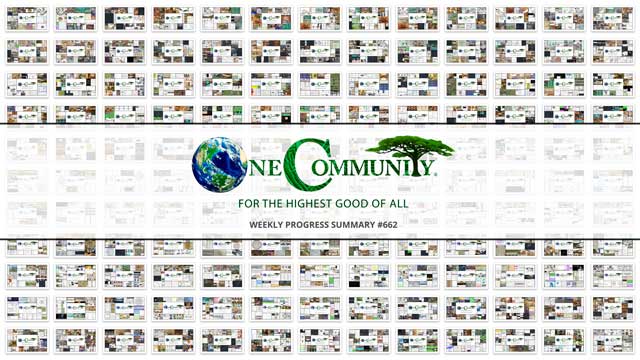
OUR MAIN OPEN SOURCE HUBS
Click on each icon to be taken to the corresponding Highest Good hub page.
One Community’s physical location will forward this movement as the first of many self-replicating teacher/demonstration communities, villages, and cities to be built around the world. This is the November 24, 2025 edition (#662) of our weekly progress update detailing our team’s development and accomplishments:
Open Sourcing Sustainable Civilization Development
One Community Progress Update #662
DONATE | COLLABORATE | HELP WITH LARGE-SCALE FUNDING
CLICK HERE IF YOU’D LIKE TO RECEIVE AN EMAIL EACH WEEK WHEN WE RELEASE A NEW UPDATE
YOU CAN ALSO JOIN US THROUGH SOCIAL MEDIA
ONE COMMUNITY WEEKLY UPDATE DETAILS
HIGHEST GOOD HOUSING PROGRESS
 One Community is open sourcing sustainable civilization development through Highest Good housing that is artistic and beautiful, more affordable, more space efficient, lasts longer, DIY buildable, and constructed with healthy and sustainable materials:
One Community is open sourcing sustainable civilization development through Highest Good housing that is artistic and beautiful, more affordable, more space efficient, lasts longer, DIY buildable, and constructed with healthy and sustainable materials:
- Learn about: Our Upcoming Crowdfunding Campaign
- Learn about the different village models and open sourcing sustainable civilization development: 7 Sustainable Village Models
- Visit the open source portals for the first two: Earthbag Village OS Hub | Straw Bale Village OS Hub
This week, Ajay Adithiya Kumar Elancheliyan Tamilalagi (Mechanical Engineer) continued working on the ventilation system design for the Vermiculture Toilet component of the Earthbag Village. He revised his section of the report based on Jae’s feedback and performed static simulations for both models separately. He also attempted simulations on the combined structural-HVAC model using two different tools, but the meshing process was slow and unstable, so he adopted a simplified geometry as an alternative approach. Ajay gathered photos, re-simulated the UNISTRUT assembly, redesigned the side plate to incorporate HVAC, and supported Karthik’s report by reviewing prior work and updating visuals. His ongoing work continues to support open sourcing sustainable civilization development through design refinement and cross-team collaboration. Below, you’ll find some images of this work.
Baraka Minja (Civil and Environmental Engineer Pr. Eng.) continued working on the Communal Eco-shower and Vermiculture Toilet drawings. He expanded the Duplicable City Center foundation connection concept by proposing two construction sequences—one with bolts precast in the concrete and another using bolts drilled in after the concrete had cured. He outlined the benefits and tradeoffs of each option and added a written explanation of these proposals to the connection concept draft report, contributing to open sourcing sustainable civilization development by developing adaptable and efficient structural solutions. See below for some of the pictures.
Derrell Brown (Plumbing Designer) continued working on the Earthbag Village 4-dome home final MEP report by reviewing feedback from the initial draft and implementing updates across multiple sections. He advanced the report by aligning its formatting with the One Community Standards’ Clarity of Calculations section and verified the panel schedule to ensure related calculations were accurate before integrating them into the document. He also reviewed IMC code references to maintain consistency with the report’s definitions and overall narrative accuracy. His careful documentation supports open sourcing sustainable civilization development through clear, standardized reporting of sustainable system designs. See below for some pictures related to this work.
Fangting Xu (Interior Design Intern) continued working with ADA codes related to building connections for ADA 3-dome cluster of the Earthbag Village. She hosted the weekly meeting with Baraka to track tasks and progress, watched Jae’s video, provided feedback, and checked the level height. Fangting also reviewed the 2010 ADA code to confirm details for the ADA reference draft. Her focus on accessibility and precision reflects open sourcing sustainable civilization development through inclusive and compliant design standards. See below for some of the pictures related to this work.
Karthik Pillai (Mechanical Engineer) continued work on the Vermiculture Toilet and 4-dome home components of the Earthbag Village. He updated the four-dome cluster roof design report based on Jae’s comments and circulated the revised version for additional feedback. He reviewed specific sections to ensure that the structural details, assumptions, and calculations aligned with project requirements and incorporated suggested changes for consistency. For the Vermiculture Toilet, he reran selected FEA simulations to obtain the necessary images for documentation and carried out design verification tasks to confirm that the structural behavior matched expected performance criteria. His detailed coordination and analytical verification exemplify open sourcing sustainable civilization development through precision-driven engineering. The related visuals are shown below.
Loza Ayehutsega (Civil Engineer/Assistant Civil Engineer) worked on soil classifications, focusing on grouping soils based on their physical, chemical, and engineering properties. She resolved the file upload issue and expanded the Soil Classification section by adding a more detailed explanation of its components. She included the field classification method to align the report with required documentation standards and uploaded relevant ASTM and Unified Soil Classification System reference books to the shared storage for accessibility. Her efforts strengthen open sourcing sustainable civilization development by ensuring a well-documented and data-informed approach to geotechnical work. See below for some of the pictures related to this work.
Rishi Chakrapani (Mechanical Engineer) continued working on the Vermiculture Toilet. He updated the final CAD structure for the waste dumping mechanism to include a pulley, and FEA was performed on the assembly to confirm that it could withstand the applied loads. He revised the calculations report based on Jae’s feedback and reformatted the document to align with project standards. His technical updates contribute to open sourcing sustainable civilization development by improving efficiency and reliability in open-source sustainable system design. See below for some of the pictures related to this work.
DUPLICABLE CITY CENTER PROGRESS
 One Community is open sourcing sustainable civilization development through a Duplicable and Sustainable City Center that is LEED Platinum certified/Sustainable, can feed 200 people at a time, provide laundry for over 300 people, is beautiful, spacious, and saves resources, money, and space:
One Community is open sourcing sustainable civilization development through a Duplicable and Sustainable City Center that is LEED Platinum certified/Sustainable, can feed 200 people at a time, provide laundry for over 300 people, is beautiful, spacious, and saves resources, money, and space:
- Learn about this building and it’s function: Duplicable City Center Open Source Hub
This week, Andrew Tzu-Chien (Industrial Designer) continued working on the Duplicable City Center Dormer second-floor window. He developed the front window framing and completed the 3D modeling for the dormer window structure. He also began modifying the previous plywood layout to align with the current design, ensuring the updated structure meets the required adjustments. This open source Duplicable City Center project demonstrates open sourcing sustainable civilization development. For more details, refer to the image below.
Ariana Virginia Gutierrez Doria Medina (Industrial Designer) continued working on the Duplicable City Center window and door framing by focusing on completing the design of a new structure to support the window insulation. She assembled the modified parts while addressing small gaps that could affect the insulation system and ensured each component aligned properly to maintain the intended thermal barrier. This open source Duplicable City Center project demonstrates open sourcing sustainable civilization development. See the presentation and research highlights below.

Ayushman Dutta (Mechanical Engineer) continued working on the City Center Dome Hub Connector Engineering and DIY manufacturing. He corrected issues in the assembly spreadsheet, updated the navigation sheet, and documented the assembly process. He created instructions explaining how to navigate the spreadsheet for improved usability, updated the assembly instructions document with formatting improvements, and integrated the navigation sheet into the assembly process document. This open source Duplicable City Center project demonstrates open sourcing sustainable civilization development. Review the connector analysis visuals below for more details.
Bevan Chiu (Mechanical Engineer Volunteer) continued his work finishing the City Center Eco-spa Designs. He updated the plumbing pipe assembly in CAD and performed initial calculations to determine the minimum pipe spacing within the Unistrut frame assembly. Bevan also researched materials and design approaches for the plumbing access panels, focusing on options like a Baltic birch understructure and composite decking board. Additionally, he created the initial CAD model for the plumbing panels based on the proposed design concepts. This open source Duplicable City Center project contributes to open sourcing sustainable civilization development. For more details, refer to the image below.
Koushik Chandra Katta (Mechanical Engineer) continued working on the Duplicable City Center design. He reviewed the status of all project rows, verified progress, and focused on completing updates for Rows 6 and 7. The associated files were organized and checked for alignment with expected specifications and design requirements. He prepared the updated set and submitted the files to Shreyas for integration within the project workflow. This open source Duplicable City Center project contributes to open sourcing sustainable civilization development. See the below image for detailed analysis of this work.
Sandesh Kumawat (Mechanical Engineer) continued developing the City Center Eco-spa Designs. He revised the Unistrut-based frame structure to identify potential assembly challenges and verify structural feasibility for the Eco-Spa hot tub design. Using SolidWorks analysis, he refined the frame geometry to improve load distribution and support stable assembly while considering practical construction constraints. The updated structure was integrated with the cinder block stack foundation to form a unified hybrid base that preserves thermal mass and supports mechanical loads. Sandesh defined overall spa dimensions to optimize internal volume and initiated FEA pre-processing, configuring material properties, meshing parameters, and contact definitions to prepare for structural evaluation. Discover One Community’s open source Duplicable City Center, which exemplifies open sourcing sustainable civilization development. See the visuals below for a closer look.
Srujan Pandya (Mechanical Engineer) continued his work on developing the dynamic simulation setup for earthquake analysis updates for the City Center Dome Hub Connector Engineering. He cross-verified SketchUp, DWG, and CAD dome models to identify missing components and confirm the accuracy of existing geometry. Srujan revisited previous inconsistencies, updated the review table to list all action items, and coordinated with the team to maintain workflow continuity and structured progress. The Duplicable City Center demonstrates open sourcing sustainable civilization development through open source solutions that can guide people. The images below illustrate aspects of this work.
Tianxiang Huang (Mechanical Engineer) continued working on the Duplicable City Center design. He built a simplified SolidWorks model of the hot tub to study heat conduction and estimate heat loss between the structure and the ground. He evaluated three material configurations to compare insulation performance: rock wool applied to both upper and lower sections, rock wool applied only to the lower section, and no insulation material. Results showed that adding rock wool reduced heat loss by about 55 percent. This open source Duplicable City Center project exemplifies open sourcing sustainable civilization development. For more details, refer to the image below.
Vineela Reddy Pippera Badguna (Mechanical Engineer) continued contributing to the Duplicable City Center Water Catchment designs. She reviewed the recharge bed concept for integration into the City Center water catchment system and examined approaches for greener and more sustainable roads and walkways. Vineela also reviewed the Net-zero Bathroom file to understand layout and function, studied the Earthbag Village Septic Design file to understand system structure, and analyzed the Earthbag Village Water Harvesting and Conservation file to understand water collection and reuse strategies. Additionally, she reviewed Downspout Filters to understand their role in initial water screening within rainwater systems. This open source Duplicable City Center project contributes to open sourcing sustainable civilization development. See the updated rainwater catchment data and design visuals below.
HIGHEST GOOD FOOD PROGRESS
 One Community is open sourcing sustainable civilization development through Highest Good food that is more diverse, more nutritious, locally grown and sustainable, and part of our open source botanical garden model to support and share bio-diversity:
One Community is open sourcing sustainable civilization development through Highest Good food that is more diverse, more nutritious, locally grown and sustainable, and part of our open source botanical garden model to support and share bio-diversity:
- Learn about the structures and open sourcing sustainable civilization development: Hoop House Hub | Aquapini & Walipini Open Source Hub
- See what we’ll be growing: Gardens & Hoop Houses | Large-scale Structures | Food Forest | TA
This week, the core team continued working on the Master Tools, Equipment, and Materials and Supplies List for the Large-scale Garden, Botanical Garden, and other Highest Good Food components. The team compared the two Goat documents and the two Chicken documents to ensure consistency and completeness. Additionally, a shop document was created for TEMS, with most entries designated for use or storage in the workshop, while some can be used occasionally on other projects at different sites. The Highest Good Food initiative is a key component of One Community’s open source plans, focused on open sourcing sustainable civilization development and exemplifying the organization’s commitment through innovative design and implementation. Below are some images showcasing this work.
Anuneet Kaur (Administrator) continued her focus on the design of the Transition Food Self-sufficiency Plan components of the Highest Good food initiative. She completed the Vegan Rice, Omnivore Rice, Vegan Pasta, Omnivore Pasta, Vegan Potato, Omnivore Potato, Vegan Sweet Potato, Omnivore Sweet Potato, and Transition Kitchen webpages. Anuneet ensured each page followed the updated formatting guidelines, corrected inconsistencies, and verified SEO keyword integration across all recipe sections. She also reviewed titles, spacing, and layout alignment to maintain uniformity throughout the Food Web project. Her work contributes to open sourcing sustainable civilization development.
Additionally, Anuneet ensured all team members were included in the live blog task and identified anyone who was missing. She reviewed Yulin’s infographic on sustainable research and provided detailed feedback. Anuneet fulfilled administrative responsibilities by editing summaries and collages for the Highest Good Society, Highest Good Education, and Core Teams, and reviewed fellow admin submissions for completeness and accuracy. The One Community model of open sourcing sustainable civilization development, exemplified by sustainably built classrooms and housing studies like these, fosters lasting global impact. Her recent contributions are featured in the collage below.
Chelsea Mariah Stellmach (Project Manager) continued working on the Transition Food Self-sufficiency food and inventory tracking software plans. She met with Ravi to review some of Tatyana’s suggestions and discuss plans for the next phase of the software mockups. Chelsea added comments to the Figma boards to support adjustments to functionality and usability. She also followed up with Ravi to obtain a new estimate for the remaining mockup work. As an essential aspect of One Community’s open source goals, the Highest Good Food initiative supports open sourcing sustainable civilization development. The following images provide a view of her contributions.
Falguni Sakpal (Volunteer Architectural Designer and Planner) continued initiating render development for the Aquapini and Walipini Master Plan of the Highest Good Food initiative. She worked on the Aquapini and Walipini Master Plan and related website content updates, reviewing assigned sections across all three main documents and responding to comments from Jae and Shivangi to clarify rendering expectations for plans, elevations, and sections. Her work supports open sourcing sustainable civilization development by strengthening the visual clarity and consistency of these open-source resources. She gathered visual references for the rendering style, studied existing plan and section examples, and reviewed the original AutoCAD base files to understand layer organization and drawing structure.
Falguni exported and cleaned the required plan layers, set up the rendering workflow, and began the first draft of the rendered plan. The work focused on establishing a consistent visual approach for the upcoming base renderings while ensuring alignment with One Community’s documentation and formatting standards. The Highest Good Food initiative is a key part of One Community’s open source platform, focused on sustainable and participatory development while open sourcing sustainable civilization development. See below for pictures related to this work.
Gayatri Pandkar (Architect) continued writing content for the various components of the Aquapini and Walipini aspects of the Highest Good Food initiative. She worked on designing the people space for the Walipini 3 structure by reviewing the layout and identifying needed elements. Gayatri gathered the SketchUp plants and trees from the project list, prepared them for the model, placed selected trees in the SketchUp model, and continued developing the concept design sketch with the main layout ideas. The Highest Good Food initiative is a key part of One Community’s open source platform, focused on sustainable and participatory development while open sourcing sustainable civilization development. Visual examples from her work are presented below.
Japneet Kour (Volunteer Architect) continued contributing to the Highest Good Food initiative. She compiled the diversity of plants from the previous SketchUp file into the current Walipini 1 file, added more plant diversity based on feedback, reviewed the placement of specific plant groups to align with project requirements, and corrected multiple elements in the SketchUp model for Walipini #1, the Frost-Free Arid Zone Desert House. The Highest Good Food initiative is a key part of One Community’s open source platform, focused on sustainable and participatory development while open sourcing sustainable civilization development. Visual examples from her work are presented below.
Jay Nair (BIM Designer) continued developing the Aquapini and Walipini Planting and Harvesting documents. He worked on the lighting energy calculation for Walipini 1, updating the data and verifying the figures for each zone. Jay also standardized the document’s format, organized sections, refined headings, and ensured consistency so the document aligns with project presentation standards. The Highest Good Food initiative is a key part of One Community’s open source platform, focused on sustainable and participatory development while open sourcing sustainable civilization development. See below for pictures related to this work.
Nitin Parate (Architect) continued contributing to the Aquapini and Walipini renders and layout graphics. Nitin focused on the Walipini 3 plan, reviewing the layout and planting scheme to understand design requirements. Required JPG and PDF files were extracted and organized for the next stages of production and rendering. The base layer for the plan was prepared, and different planting layers were applied to build the layout and align it with the project’s planting scheme. The Highest Good Food initiative is a key part of One Community’s open source platform, promoting regenerative and participatory development while open sourcing sustainable civilization development. Images below showcase his contributions.
Pallavi Deshmukh (Software Engineer) continued working on the Aquapini and Walipini Planting and Harvesting web details. She updated the Walipini #2 page with content provided by Silin and Junyi Shi, including revisions to text, links, and images, before submitting the updated version for Jae’s review. Pallavi completed the Walipini #2 updates and continued work on Walipini #1 and Zenapini #2 using content from Gayatri. She created new content for Blog 661, incorporated feedback from teammates, and scheduled interviews for the upcoming week. In alignment with One Community’s open source objectives, the Highest Good Food project integrates open sourcing sustainable civilization development into a larger vision of regenerative living. Her contributions are highlighted in the collage below.
Ravi Kumar Sripathi (Software Engineer) continued developing the Food Procurement and Storage software platform, enhancing features related to inventory tracking, recipe management, and food utilization. Ravi expanded the inventory, agriculture, and animal-management workflows to improve tracking and production planning across the One Community hub. His updates support open sourcing sustainable civilization development by improving transparency and usability in food-management systems. He developed a pie chart visualization showing how harvested ingredients are used and outlined updates for the animal-management system, including buttons to order feed, supplemental nutrition, and other supplies needed for breeding, illness, and general care. Progress was also made on a financial tracking feature comparing animal output to the cost of raising them. Work continued on produce processing features, including recipe pathways for turning surplus meat into tallow, jerky, and other preserved items, aligning with existing harvest-processing tools. The Highest Good Food initiative is a key part of One Community’s open source platform, focused on sustainable and participatory development while open sourcing sustainable civilization development. See below for pictures related to this work.
Shivangi Varma (Architectural Designer and Planner) continued the redesign of the Highest Good Food overall presentation, currently focused on the Aquapini and Walipini masterplan render. She updated the masterplan render based on Loom video feedback and detailed the Aquapini, Walipini, and Zenipini structural layout renders by adding plant and passage details. Shivangi refined the Aquapini masterplan using the 2D layout and plant lists, and developed the Zenipini interior layout showing the extent of green landscape and planting beds. The Highest Good Food initiative plays a leading role in One Community’s open source platform by promoting sustainable and participatory development, focused on open sourcing sustainable civilization development. Below are visuals highlighting this work.
HIGHEST GOOD ENERGY PROGRESS
 One Community is open sourcing sustainable civilization development through Highest Good energy that is more sustainable, resilient, supports self-sufficiency and includes solar, wind, hydro and more:
One Community is open sourcing sustainable civilization development through Highest Good energy that is more sustainable, resilient, supports self-sufficiency and includes solar, wind, hydro and more:
- Learn about the open source sustainable-energy foundations: Solar, Hydro, and Wind
- Explore our research into the most sustainable products and companies for saving water and energy: Insulation, Eco-laundry, Lightbulbs and Light Bulb Companies, Doors and Door Companies, Windows and Window Companies, Toilets, Faucets and Faucet Accessories, Urinals, and more.
This week, the core team continued contributing to the Highest Good Energy initiative. They worked on the Energy Needs Analysis Spreadsheet by locating several energy-related pages, verifying values where possible, and adding copies of the information to the primary document. The core team corrected a number of entries, checked that all linked cells functioned as intended, and applied formatting adjustments to clearly distinguish needs tables from cost tables. The Highest Good Energy initiative plays a leading role in One Community’s open source platform by promoting sustainable and participatory development, focused on open sourcing sustainable civilization development. Below are images related to this project.
HIGHEST GOOD EDUCATION PROGRESS
 One Community is open sourcing sustainable civilization development through Highest Good education that is for all ages, applicable in any environment, adaptable to individual needs, far exceeds traditional education standards, and more fun for both the teachers and the students. This component of One Community is about 95% complete with only the Open Source School Licensing and Ultimate Classroom construction and assembly details remaining to be finished.
One Community is open sourcing sustainable civilization development through Highest Good education that is for all ages, applicable in any environment, adaptable to individual needs, far exceeds traditional education standards, and more fun for both the teachers and the students. This component of One Community is about 95% complete with only the Open Source School Licensing and Ultimate Classroom construction and assembly details remaining to be finished.
With over 8 years of work invested in the process, the sections below are all complete until we move onto the property and continue the development and open sourcing process with teachers and students – a development process that is built directly into the structure of the education program and everything else we’re creating too:
- Program Overview: Education Open Source Hub
- How the components work together in designing human orchestrated eco-abundance: How to use the Education for Life Program
- Lesson Plans for Life – Lesson Plans How-to
- Foundations of Outstanding Leaders, Teachers, and Communicators
- Curriculum for Life
- Teaching Strategies for Life
- Learning Tools and Toys for Life
- Evaluation and Evolution
This week, Prudhvi Marpina (Data Analyst) continued developing the Highest Good Education software platform, concentrating on Phase 4: marketing, promotion, and administrative activities. He worked on HGN Phase 4 software management by sending Slack messages to developers for updates on pending tasks, reviewing Deliverable 2 action items to check pull request titles and labels, updating Figma images, and assigning hours for newly claimed tasks. He also updated Jae on pull requests needing changes and communicated label corrections to developers.
As part of the marketing and promotion work, Prudhvi updated the weekly tracker data in the social media dashboard and Bluesky sheets, reviewed last week’s analytics, and scheduled next week’s posts in Buffer. In addition, he contributed to OC Administration by updating Blog 661, reviewing each admin’s weekly contributions, and making updates in the blog and summaries document. Through these activities, he supported One Community’s commitment to open sourcing sustainable civilization development. The images below highlight his contributions.
HIGHEST GOOD SOCIETY PROGRESS
 One Community is open sourcing sustainable civilization development through a Highest Good society approach to living that is founded on fulfilled living, the study of meeting human needs, Community, and making a difference in the world:
One Community is open sourcing sustainable civilization development through a Highest Good society approach to living that is founded on fulfilled living, the study of meeting human needs, Community, and making a difference in the world:
- Read the Highest Good society overview: Highest Good Society
- Learn about the model for fulfilled living and sharing: A Day in the Life
- Learn about the 4 economic models: RBE | For-profit | Non-profit | Entrepreneurship
- Learn about our open source community collaboration and management software: The Highest Good Network
This week, the core team completed over 42 hours managing volunteer work reviews, handling emails, overseeing social media accounts, supporting web development, identifying new bugs, and integrating bug fixes for the Highest Good Network software. They also interviewed and onboarded new volunteer team members. Additionally, they produced and integrated the video above, which highlights how open sourcing sustainable civilization development serves as the foundation of One Community’s broader mission. The following images showcase highlights of this work.
Jaiwanth Reddy Adavalli (Project Manager) continued developing the Job Applicants page and key components of the Highest Good Network. He tracked updates in the software team management documents to assign, monitor, and support task status. Jaiwanth also worked on the Phase 2 and Phase 3 Dashboards by testing multiple components in the HGN software and creating new action items to develop additional features. As a member of the pull request review team, he reviewed submissions from the volunteer team assigned to him. This work supports One Community’s commitment to open sourcing sustainable civilization development. The images below highlight his contributions.
Yagna Reddy Badvel (Data Analyst and Team Administrator) continued working on the Summary Dashboards and Weekly Report page on the Highest Good Network. He completed a full audit of the Phase 2 “Materials, Equipment, Tools, and Project Tracking System” tab in the HGN Bugs & Features sheet, checking for missing fields, incorrect dropdown usage, outdated status values, and ensuring escalation levels were marked correctly for urgent tasks. He also fixed formatting inconsistencies, cleaned up broken or duplicated Google Doc bookmark links, refined task descriptions, and updated filtering logic to match the current project structure.
In addition to Phase 2 tracking, Yagna completed his regular admin responsibilities by reviewing volunteer summaries for formatting and accuracy, checking media folders, adding tracking tables where needed, providing feedback through the weekly reporting process, verifying SEO and image requirements, updating WordPress entries, coordinating fixes before the deadline, and organizing folders and documents for the next cycle. This work supports One Community’s commitment to open sourcing sustainable civilization development. The images below highlight his contributions.
ADMINISTRATION TEAM
The Administration Team’s summary, which covers their work on the Highest Good Network, was managed by Prudhvi Marpina (Data Analyst) and includes Anusha Gali (Software Engineer), Ashutosh Mishra (Software Engineer), Divanshu Bakshi (Team Admin), Indra Anuraag Gade (Software Engineer and Team Administrator), Keerthana Chitturi (System Administrator), Mridul Bhushan (Volunteer Project Strategy Analyst and Team Administrator), Neeharika Kamireddy (Data Analyst), Olawunmi “Ola” Ijisesan (Administrative and Management Support), Olimpia Borgohain (Data Analyst and Team Administrator), Priyanshi Sharma (Data Analyst and Team Administrator), Rachna Malav (Data Analyst), Rajeshwari Bhirud (Administrator), Rishitha Adepu (Administrator), Sai Suraj Matta Veera Venkata (Business Data Analyst), Sayantan Paul (Volunteer Frontend Tester and Software Team Administrator), and Sudarshan Raju Chintalapati Venkata (Data Analyst). The Administration Team supports the Highest Good Network, a tool designed to track and measure progress while developing systems that contribute to open sourcing sustainable civilization development. Through administrative support, documentation, testing, training, recruiting, analytics, and content management, the team helps advance this mission, aligning with One Community’s vision of building a replicable and sustainable future model.
This week, Anusha completed Level 2 testing across the HGN and HGNRest systems, validating dozens of pull requests, requesting updates for UI, backend, and functional issues, updating tracking files, and supporting administrative workflows. Ashutosh optimized latency for the 3D virtual assistant by improving caching logic, added new API endpoints, completed Timelog Administrator tasks, tested multiple models, and advanced LCEL-related features. As part of this work, he contributed to open sourcing sustainable civilization development by strengthening infrastructure that supports wider system reliability. Divanshu processed Mastodon analytics with Python scripts, updated the Master Data sheet and Volunteer Tracker, posted four Mastodon updates, and documented two platform-related issues.
Indra completed Blog #661 for the Code Crafters Team, updated Twitter analytics, built an ML pipeline with 12 models and 18 engineered features, produced technical documentation, and contributed new items to the Bugs & Features tracker. Keerthana reviewed weekly summaries, updated Step 2 and Step 4 documents, prepared the weekly blog, and added Phase 3 action items. Mridul refined Moonfall Team submissions, prepared collage alt text, finalized the WordPress blog version, reviewed Sudarshan’s admin submission, and validated HGN Phase 2 document entries while strengthening content that supports open sourcing sustainable civilization development.
Neeharika coordinated software team tasks, followed up on assignments, tested multiple pull requests, logged new bugs, completed admin duties, and verified updates in corrected documents. Ola prepared administrative folders, organized workspaces, managed Pinterest scheduling, created new content, and uploaded her weekly tasks with images. Olimpia updated LinkedIn analytics KPIs, completed senior admin review checks, resolved documentation comments, handled warnings and blue square notifications, and scheduled next week’s LinkedIn posts. Priyanshi continued Phase 2 PR testing, identifying chart and filter issues, verifying dashboard logic, documenting findings, and refining her testing process. Rachna reviewed older tasks, emails, and SEO pages and monitored hiring workflow activity. Rajeshwari managed Blog #661 administration by reviewing summaries, providing feedback, updating SEO content, and documenting detailed HGN Dashboard test cases, helping reinforce content aligned with open sourcing sustainable civilization development.
Rishitha updated bios, uploaded Threads content, added raw data to the dashboard, updated the volunteer tracker, and created documentation and videos. Sai Suraj completed Facebook and Instagram analytics updates, built training materials for the Volunteers Guide hub, scheduled content, maintained documentation, and completed administrative work. Sayantan continued Level 1 testing across multiple PRs, verified frontend and dashboard behaviors, and reported Team Skye’s weekly contributions. Sudarshan managed the Alpha Software Team blog, completed SEO and collage updates, reviewed Phase 2 PRs, added new tasks for bugs and enhancements, validated dashboard data, and tested merged PRs 4254, 4277, and 4253. To learn more about how this work supports One Community’s vision of open sourcing sustainable civilization development, visit the Highest Good Society and Highest Good Network pages. Highlights of the team’s contributions are shown in the collage below.
GRAPHIC DESIGN TEAM
The Graphic Design Team’s summary includes Qinyi Liu (Graphic Designer), and Yulin Li (Graphic Designer) who focused this week on creating graphic designs that support open sourcing sustainable civilization development.
This week, Qinyi created and refined AI-generated characters, updated posters and social media images, and revised earlier designs for visual consistency. She also compared multiple generation tools for open sourcing sustainable civilization development, noting differences in their ability to interpret reference images and maintain a consistent art style. Yulin revised five social media images based on feedback, posted a software team collaboration announcement, managed shared assets, and participated in review discussions for open sourcing sustainable civilization development. She used these efforts to support visual communication and coordination tasks. Their work highlights open sourcing sustainable civilization development. See the Highest Good Society pages and the collage below for examples of their work.
HIGHEST GOOD NETWORK PROGRESS
 One Community is open sourcing sustainable civilization development through open source Highest Good Network® software that is a web-based application for collaboration, time tracking, and objective data collection. The purpose of the Highest Good Network is to provide software for internal operations and external cooperation. It is being designed for global use in support of the different countries and communities replicating the One Community sustainable village models and related components.
One Community is open sourcing sustainable civilization development through open source Highest Good Network® software that is a web-based application for collaboration, time tracking, and objective data collection. The purpose of the Highest Good Network is to provide software for internal operations and external cooperation. It is being designed for global use in support of the different countries and communities replicating the One Community sustainable village models and related components.
- Learn about our open source community collaboration, open sourcing sustainable civilization development, and management software: The Highest Good Network
This week, the core team tested HGN pull requests and confirmed 10 fixed PRs. This effort highlights One Community’s commitment to open sourcing sustainable civilization development.
The following PRs were not fixed: the Blue Square CC feature, the specific application page template form for the application and job posting page, the added counter on the CC list button for Blue Square, and the dark mode update for analytics with invalid date range handling. The team was not able to test the Job Posting Page Analytics frontend PR, which creates a horizontal bar graph showing the hits-to-applications ratio, because there was no data on the Main branch. This work strengthens One Community’s mission of open sourcing sustainable civilization development. See the Highest Good Society and The Highest Good Network pages, and the collage below, for an overview of the team’s contributions.
ALPHA SOFTWARE DEVELOPMENT TEAM
The Alpha Software Team, working on the Highest Good Network software, was managed by Lin Khant Htel (Frontend Software Developer). The team includes Maneesh Buddha (Software Developer) and Nikita Kolla (Full Stack Developer). The Highest Good Network software is a key part of sustainable and free-shared eco-solutions, helping track and measure progress toward open sourcing sustainable civilization development. The software supports social architecture, construction, production, and maintenance processes that contribute to the open source project and resilient ecosystems. Designed to be portable and scalable, the Highest Good Network software is well suited for off-grid and sustainable living communities. This project reflects One Community’s open source commitment to advancing the idea of open sourcing sustainable civilization development.
This week, Maneesh worked on the Select Category filter issue in the Job Posting page by identifying why the list displayed no categories and adjusting the frontend logic to ensure the data loaded correctly. His troubleshooting process also aligns with open sourcing sustainable civilization development by strengthening the reliability of shared systems. He also focused on the reorder function for job items by reviewing the save logic, checking the API request behavior, examining the authorization header handling, preparing a separate branch to isolate the changes, testing the related components, and gathering screenshots to document his progress.
Nikita addressed skill gaps in MongoDB while resolving issues in the codebase by analyzing how tests interacted with the database and identifying conditions that caused certain logic paths to be skipped, which affected expected test outcomes. During this work, she encountered an additional issue related to core team missed hours, highlighted by an error indicating that a MongoDB lookup using a pipeline could not specify both localField and foreignField, which guided further debugging of the core team additional hours logic. See the Highest Good Society and Highest Good Network pages for more on how this contributed to the idea of open sourcing sustainable civilization development. See the collage below to view the team’s work.
BINARY BRIGADE SOFTWARE DEVELOPMENT TEAM
The Binary Brigade Team, presenting their work on the Highest Good Network software, was managed by Nikhil Routh (Software Engineer) and included Kanishk Agarwal (Software Engineer), Apoorva Jain Ramapura Prashanth (Software Engineer), Deep Shah (Software Engineer), Ramsundar Konety Govindarajan (Software Engineer), Harsha Rudhraraju (Software Engineer), Xinyi Zhou (Developer), Sourabh Bagde (Software Developer), Taariq Mansurie (Full-Stack Developer), Sumedh Kumar (Full-Stack Developer), Aswin “Tony” Kanikairaj (Software Engineer), and Amalesh Arivanan (Software Engineer). The Highest Good Network software is our tool for managing and objectively measuring progress, ensuring that all contributions are tracked and aligned with our mission, modeling, and open sourcing sustainable civilization development.
This week, Amalesh implemented the Phase 2 Summary Dashboard with responsive KPI tiles, a weekly tasks line chart, date range filtering, backend integration for task grouping and KPI aggregation, timezone handling, and error handling, and also resolved merge conflicts related to the duplicate task feature and scheduling controller while documenting and tracking his work. Apoorva updated the email templates UI by moving from card-based layouts to a tabbed interface, fixed image uploads in TinyMCE, optimized search debounce behavior, added client-side sorting, and investigated a blank email issue by tracing HTML flow and identifying backend authentication errors as the cause while preparing a fresh development setup. Aswin completed Phase 3 Visualization work by adding routing and subpages to the Participation Report, restoring and fixing the calendar layout with event indicators, resolving dark mode visibility issues, building comparative charts, converting remaining global CSS to modules, and validating workflow behavior across components, contributing to overall progress aligned with open sourcing sustainable civilization development.
Deep fixed chart legend visibility and dark mode theming issues, addressed low-contrast and rerender problems after theme changes, and corrected the “Belongs to” selector behavior to stop auto-adding tags while pending further backend testing. Harshavarma developed calendar views for month, week, and day, added an interactive add-task popup, improved responsive layouts, handled overlapping event rendering, aligned UI with existing styles, and prepared hooks for future backend integration while validating edge cases. Kanishk integrated backend and frontend for the Attendance and No-Show Tracking System, resolved a MongoDB connection string issue, reviewed the Event model and filtering APIs, and built the database design page with event cards and routing. Nikhil progressed the CSS Modules migration across multiple components, reviewed related PRs, validated backend fixes for MongoDB timeouts, helped define backend data flow and database structure for a new feature, and assisted in analyzing a production data deletion incident by contributing to root cause identification and suggesting DB audit monitoring and real-time deletion alerts as part of broader efforts supporting open sourcing sustainable civilization development.
Ram addressed review comments on the PR Review Team Analytics Dashboard, worked through merge conflicts in older PRs, investigated a UI issue where usage records were not rendering despite valid API responses, and encountered development branch access errors. Sourabh enhanced the MySpace auto-poster by fixing scheduling logic to prevent post overwrites, improving dark mode styling, validating form fields, and aligning the scheduling UI with the intended design. Sumedh added a Material Usage Record doughnut chart to the BM Dashboard with associated UI integration and styling, submitted a pull request, and continued investigating an API issue in the DailyActivity Log while resolving dark mode bugs. Taariq fixed filter issues on refresh, resolved merge conflicts and lint problems related to a node upgrade, advanced updates to weekly summary email user logic, tested email functionality, investigated permission page UI inconsistencies, and prepared archived projects changes for review. Xinyi fixed the “view issues” button routing, updated the dropdown menu to include and format the Team option, improved dark mode compatibility, addressed review feedback, and reviewed teammates’ pull requests. See the Highest Good Society and Highest Good Network pages for more information on how this work models open sourcing sustainable civilization development. The collage below shows images of their work.
BLUE STEEL SOFTWARE DEVELOPMENT TEAM
The Blue Steel Software Team, working on the Highest Good Network software, was managed by Divanshu Bakshi (Product Manager), and includes Linh Huynh (Software Engineer), Som Ramnani (Software Engineer), and Sheetal Mangate (Software Engineer). This week, Linh focused on the educator-side feature for displaying the list of finished tasks reported by students, reviewing backend and frontend structures related to the task submissions list as part of open sourcing sustainable civilization development. He analyzed endpoint behavior and confirmed how student submissions populate the dynamic table. He examined the returned fields required for the educator view, including student name, task name, submission type, submission status, submission date, and review links. Linh also reviewed query filters for status, student, and course to determine how they should integrate with the UI layout. Additionally, he evaluated prior developer changes, identified areas requiring correction, verified routing expectations, and prepared the project for implementing logic to detect and tag late submissions so the interface can properly load, filter, and display student task completion records.
Som worked on PR 4228 to fix a Figma mismatch in the CPDashboard by adding the missing “Ending After” date picker to the search filters, implementing state management to handle the selected date, resolving UI inconsistencies on the live site, and creating the related PR. He also revisited PR 4215 to resolve merge conflicts in package.json and yarn.lock caused by unintended dependency upgrades from npm. Som reverted both files to correct versions, reinstalled node modules, and switched the workflow from npm to yarn to maintain consistent lockfile behavior and align dependencies with development. Sheetal explored Bitwarden for storing secrets and API keys. She created an account, added secrets for Reddit, reviewed the developer guide for retrieving stored values, and committed code for the frontend autoposter. She encountered a block due to a Husky pre-commit hook, bypassed the issue using the no-verify option, and reported continued difficulty with the commit process despite messages indicating all checks passed, while continuing efforts aligned with open sourcing sustainable civilization development.
CODE CRAFTERS SOFTWARE DEVELOPMENT TEAM
The Code Crafters Team, covering their work on the Highest Good Network software, was managed by Vivek Chandra (Software Engineer) and includes Ajay Naidu (Software Engineer), Akshith Kumar Reddy Balappagari Gnaneswara (Software Engineer – Full Stack), Juhitha Reddy Penumalli (Software Engineer), Sphurthy Satish (Software Engineer). The Highest Good Network software is how we’ll manage and objectively measure our progress in open sourcing sustainable civilization development through our social architecture, construction, production, and maintenance efforts, while supporting widespread and lasting eco-lifestyle access.
This week, Ajay refined chart behavior by adjusting data label rendering to prevent overlap when viewing all projects, corrected label display when switching between cost and percentage values, verified the updates against requested features, pushed the changes to a new branch, addressed failing checks, and added a clickable magnifying-glass search icon to improve search visibility and usability. Akshith continued work on the Phase 4 PM Educator Training Dashboard frontend, implementing database-driven functionality to make the dashboard dynamic, ensuring certification profile updates appear accurately across systems, and reviewing various interaction scenarios.
Juhitha worked across Phase 4 and Phase 2, implementing the Task Progress Indicator, preparing pull requests, refining dashboard visuals, integrating mock data with student progress components, and updating routing and tab structures for the Project Manager Resource Management Dashboard. Sphurthy completed analytics backend integration for the HGNRest application, creating a StudentMetrics model, building a service to compute and cache metrics, implementing endpoints for cluster-wide and per-student analytics, adding a daily cron job, and updating server files. Vivek developed the controller to retrieve task change logs, created a component for resolved tasks requiring backend integration, investigated API issues, and updated the README for the education portal. These contributions strengthen One Community’s mission and commitment to open sourcing sustainable civilization development. The collage below shows an overview of this team’s work.
DEV DYNASTY SOFTWARE DEVELOPMENT TEAM
The Dev Dynasty Team’s summary, covering their work on the Highest Good Network software, was managed by Prem Vora (Software Developer) and includes Adithya Cherukuri (Volunteer Software Engineer), Aditya Gambhir (Software Engineer), Deekshith Kumar Singirikonda (Developer), Manvitha Yeeli (Software Engineer), Nahiyan Ahmed (Full-Stack Software Developer), Sriamsh Reddy (Software Engineer), Neeraj Kondaveeti (Software Engineer) and Vamsidhar Panithi (Software Engineer). The Highest Good Network software is how we’ll manage and objectively measure our processes for open sourcing a better world through social architecture, construction, production, and maintenance processes. This progress supports One Community in open sourcing sustainable civilization development.
This week, Nahiyan reviewed PR 4427 to validate dark mode behavior in the Building and Inventory Management Dashboard by checking theme toggling, layout consistency, and alignment with the existing code structure. Adithya worked on backend and frontend components for Job Posting Analytics and the Listing and Bidding Platform by completing aggregation logic, caching for enhanced role-based visualization, implementing chart integration, and preparing and running payment creation tests. Aditya carried out quality assurance across multiple areas by reviewing frontend and backend pull requests for the Skills module, Paid Labor Cost chart, and project components, testing dark mode behavior, analyzing API activity, and identifying issues with date filters, cost display, and data flow. Deekshith developed authentication and analytics components by implementing PermissionWatcher for session monitoring, useCountdown for forced logout handling, and AttendanceStatistics for visualizing event data with Recharts and Redux integration.
Manvitha completed the Student Dashboard Timer and Resource Request backend module by building timer controls, fixing synchronization and display issues, integrating backend API actions, and implementing educator and project manager request workflows with validation, authorization, and filtering. Prem also worked on the Student Dashboard Timer and Resource Request backend module by building a countdown system with start, pause, resume, reset, and adjustment functions, resolving alignment and synchronization issues, integrating API connections for timer actions, and adding backend endpoints for request creation, retrieval, and updates with role-based authorization. Sriamsh implemented backend and frontend components for the Production-Linked Dev Account creation feature, including an endpoint for identity verification, validation logic, password hashing, an audit log system with timestamps and IP tracking, and frontend validation and error handling for the new signup interface. Vamsidhar improved dark mode compatibility across dashboard components by updating the Supplier Performance Graph and Project Status Donut Chart, adjusting background, label, and legend behavior, resolving layout and responsiveness issues, and completing related work under PRs 3405 and 3469. See the Highest Good Society and Highest Good Network pages for more on how this relates to our mission of open sourcing sustainable civilization development. Explore some of the team’s work in the collage below.
EXPRESSERS SOFTWARE DEVELOPMENT TEAM
The Expressers Team’s summary, which covers their work on the Highest Good Network, was managed by Rahul Trivedi (Software Engineer) and includes Casstiel Pi (Software Engineer), and Meenashi Jeyanthinatha (Full-Stack Developer). This contribution supports One Community’s mission of open sourcing sustainable civilization development. This week, Casstiel finished the pull request for the “Fix Legend Color Change Bug on Injury Severity by Projects Chart” and began addressing a new issue: fixing a page error triggered when clicking lesson elements, including adding dark mode support. Analysis of the error logs identified that the Tooltip component was not receiving valid active, payload, or label props, causing payload to be undefined and triggering a .forEach call on an undefined value within CustomTooltip. Work is ongoing to resolve this issue. During the process, login functionality became non-functional due to a “user not found” error when attempting to log in as admin, which is being addressed before continuing further with the assigned bug. This contribution supports One Community’s goal of open sourcing sustainable civilization development.
Meenashi updated the Dropbox App Folder access for development users from “Only You” to 1/500, enabling the app to connect and retrieve the authorization code. Using this code, the refresh token was generated and stored, and file uploads using the token are functioning as expected. Environment variables were configured for refresh_token, client_id, and client_secret. Validation was added to restrict uploads to files under 5MB and only allow .doc, .docx, .pdf, .jpeg, and .png formats. The job form was added for some entries, and previously missing jobForms in Adreplies were restored after identifying that they had been deleted unexpectedly. This contribution supports One Community’s mission of open sourcing sustainable civilization development.
Rahul focused on resolving merge conflicts in PR 4212, addressing repeated errors related to file names and naming conventions, and investigating issues caused by the number of files involved. The work also included reorganizing the src/Reports folder by renaming several .css files to align with the project’s .module.css requirements. In addition to development tasks, team management responsibilities were handled, including reviewing team photos, summaries, and videos, and participating in a meeting with Anne Taylor to provide guidance on ongoing issues. This work supports One Community’s commitment to open sourcing sustainable civilization development. See the Highest Good Society and Highest Good Network pages for more on how this work contributes to open sourcing sustainable civilization development. See the collage below to view the team’s work.
LUCKY STAR SOFTWARE DEVELOPMENT TEAM
The Lucky Star Team’s summary, covering their work on the Highest Good Network, was managed by Keerthana Chitturi (System Administrator) and Sohail Uddin Syed (Software Engineer). The team includes contributions from Abhishek Jain (Software Engineer), Aryan Rachala (Software Engineer), Chirag Bellara (Software Engineer), Durga Venkata Praveen Boppana (Software Engineer), Shashank Madan (Software Engineer), Shravya Kudlu (Software Development Engineer), Veda Bellam (Software Engineer) and Venkataramanan Venkateswaran (Software Engineer). Their work supports One Community’s goal of open sourcing sustainable civilization development through cross-functional software development and ongoing system improvements.
This week, Abhishek completed foundational infrastructure for the Code Coverage Improvement Initiative, finalizing the ClickUp board for tracking test coverage and preparing the HGNRest backend PR (#1754) for merge. While working on the frontend PR (#4114), he identified performance bottlenecks in the GitHub runners, leading to a strategic rollout plan to merge HGNRest first before proceeding. Aryan resolved an issue in the HGN Questionnaire Dashboard where team member data was not displaying, updated component logic, and refactored the Redux selector while reporting missing testing accounts and unavailable admin logins to Jae. Chirag fixed default filter selections for PR Analytics graphs, merged updates in PR 4394, and investigated Bar chart link issues. Durga added a side navigation bar in the Evaluation Results section, updated mobile and report views, converted CSS to module CSS, and prepared the analytics pull request for merging. Shashank implemented update and delete flows for intermediate tasks, added a delete modal, progress bars, and linked parent-child task progress, supporting both frontend and backend improvements.
Shravya worked on Phase 4 Class-Wide Performance Report Generation, creating a scoring system to evaluate student performance and implementing foreign key logic for accurate retrieval. Sohail completed the email threading implementation by wiring thread-related headers into Nodemailer, extending EmailHistory persistence, updating blue-square workflow calls, and adding unit and integration tests. Veda focused on frontend and backend updates for Job Posting Page Analytics, including UI alignment, dark mode text visibility, chart formatting, responsive layouts, permission logic improvements, module CSS migration, and donut chart source breakdown visualization. Venkataramanan addressed multiple frontend and backend issues, fixing a backend controller on the Total Org Summary page, optimizing profile update endpoints, resolving errors on the BM dashboard, correcting badge assignment logic, and adding a maximum entry-hour limit to the Timelog component.
Together, the Lucky Star Team’s efforts strengthen the Highest Good Network software, advancing One Community’s mission of open sourcing sustainable civilization development. Their cross-functional work improves system reliability, user experience, analytics capabilities, and developer workflows. See the Highest Good Society and Highest Good Network pages to learn more about how this work supports open sourcing sustainable civilization development. See the collage below highlighting the team’s work for the week.
MOONFALL SOFTWARE DEVELOPMENT TEAM
The Moonfall Team’s summary, which covers their work on the Highest Good Network, was managed by Bhavpreet Singh (Software Engineer) and includes Aayush Shetty (Software Engineer), Alisha Walunj (Software Engineer), Mani Shashank Marneni (Software Engineer), Sai Krishna (Software Engineer), and Sudheesh Thuralkalmakki Dharmappa Gowda (Full Stack Developer). Their efforts advance One Community’s mission of open sourcing sustainable civilization development, promoting open-source collaboration, ecologically responsible innovation, and holistic global progress.
This week, Bhavpreet worked on the badge system by setting up its initial structure, updating the controller to improve error handling, and refining two frontend areas through style updates and interface adjustments while coordinating progress across the team. Sai continued enhancing the project details table in the bmdashboard by adding column-level search inputs, integrating sort controls with visual indicators, and reviewing the code that manages date handling in the utilisation chart. Sudheesh completed the Phase 4 Student Profile page by adding the portfolio button within the Educational Progress view, resolved conflicts, pushed the changes for review, updated the Material Utilization Ratio chart, and began reviewing the requirement for column-level tooltips on the Daily Equipment Log page, contributing to ongoing development aligned with open sourcing sustainable civilization development.
Alisha worked on the Collaborative Lesson Plan module by configuring the topic selector, adding a search bar for subject atoms, adjusting layout elements, and preparing the Knowledge Evolution View integration by adding constants, API configurations, and data after identifying gaps in the database. Aayush progressed the Phase 2 Lessons Learned task by identifying the cause of a ghost bar graph when no data was present, updating related files in a new branch, resolving conflicts, and continuing the dark mode updates for the Building and Inventory Dashboard. Their combined efforts align with open sourcing sustainable civilization development.
Mani focused on the Phase 3 error-handling task by adding email validation aligned with RFC 5322 rules, implementing event capacity checks with a full-event indicator, building dynamic filters for Type, Location, and Date, and adding clear required-field messages across the form. Visit the Highest Good Society and Highest Good Network pages for more on how this work supports open sourcing sustainable civilization development through open-source development and globally accessible resources. The collage below presents the main contributions made by the team this week.
REACTONAUTS SOFTWARE DEVELOPMENT TEAM
The Reactonauts Team’s summary, covering their work on the Highest Good Network, was managed by Sai Suraj Matta Veera Venkata (Business Data Analyst) and Akshay Jayaram (Software Engineer). The team includes Aseem Deshmukh (Software Developer), Diya Wadhwani (Software Developer), Guna Pranith Reddy Cheelam (Software Developer), Kristin Dingchuan Hu (Software Engineer), Namitha Vijaykumar Pawar (Software Engineer), Peterson Rodrigues dos Santos (Full Stack Developer), Siva Putti (Software Engineer), Sri Satya Venkatasai Siri Sudheeksha Vavila (Software Engineer), Suparshwa Patil (Software Engineer), Tom Linn (Software Engineer), and Ujjwal Baranwal (Full-stack Software Developer). The Highest Good Network software helps manage and objectively measure progress by focusing on demonstrating pioneering open sourcing sustainable civilization development. It supports social architecture, construction, production, and maintenance processes to build sustainable and thriving ecosystems.
This week, Akshay completed the dark mode implementation for the HGN Community Portal by integrating Redux-based theme detection, converting styles to CSS modules, resolving selector specificity issues, and updating layouts for headers, sidebars, and event cards to ensure proper responsiveness within the Bootstrap grid. His contributions also align with open sourcing sustainable civilization development by improving the accessibility and usability of shared interface components. Aseem fixed a state handling issue in the custom date filter for job applicant graphs, added reset functionality when switching filters, and opened frontend PR 4426 while troubleshooting a data-fetching error on the Average Weekly Hours graph.
Diya improved Blue Square email ordering logic by introducing batching, reducing redundant queries, and verifying performance with test cohorts; she also reworked the User Profile → Projects tab to apply immediate updates for assignments and deletions, preparing similar improvements for the Tasks module. These efforts collectively support One Community’s open sourcing sustainable civilization development goals. Guna refined PR 3999 for the listings home page, ensuring tab and image fixes met review standards, and continued work on resolving the “Page not Found” issue for the community portal’s activity attendance log. Kristin added hover effects to the Community Portal calendar, created tooltips, removed duplicate selectors, opened frontend PR 4413, and began backend work to add dynamic event status and integrate real data into the calendar.
Namitha enhanced the ComparePieChart feature on the Listing and Bidding Dashboard (PR 4436) by adding absolute values, external percentage labels, total metrics, filter options, category groupings, and responsive layout adjustments. Peterson improved the Teams page modal (PR 4417) by adding a loading spinner during user addition to prevent duplicate submissions. Siva enhanced the Activity Agenda feature by implementing dynamic routing with activityId, integrating backend APIs, and improving UI structure and styling in PR 4434. Sudheeksha spent 20 hours resolving CreateNewTeam redirect issues, implementing dark mode for the HGN Skills page, and completing fixes to ensure correct team creation flow and interface functionality. This work contributes to open sourcing sustainable civilization development.
Suparshwa refined chatbot prompts to ensure model responses are restricted to provided document data and began developing an orchestration layer to manage chat memory. Tom worked on PR 4440 to add a validation message in the Activities List calendar, informing users that past date selections are unsupported. Ujjwal continued developing update functionalities for Material Name and Measurement Unit fields in the BMDashboard Materials section, creating the API but encountering database access issues that prevented full testing. See the Highest Good Network and Highest Good Society pages to learn more about how this work supports modeling pioneering open sourcing sustainable civilization development. See below for the work done on demonstrating pioneering open sourcing sustainable civilization development.
SKYE SOFTWARE DEVELOPMENT TEAM
The Skye Team’s summary, covering their work on the Highest Good Network, was managed by Sayantan Paul (Frontend Tester and Software Team Administrator) and Anthony Weathers (Software Engineer). The team includes Julia Ha (Software Engineer), Lavanya Lahari Nandipati (Software Developer) and Marcus Yi (Software Engineer). The Highest Good Network software objectively tracks and manages progress, with a focus on open sourcing sustainable civilization development. It supports social architecture, construction, production, and maintenance processes that foster sustainable and thriving ecosystems. Designed to be portable, scalable, this solution is ideal for off-grid living communities – a practical example of open sourcing sustainable civilization development.
This week, Julia resolved conflicts in pull requests PR#1767, PR#4150, and PR#4268, refactored the code in PR#4150 to reduce duplicated logic and remove redundant CSS lines, and investigated a backend incident in which she identified that all user data had been deleted. Lavanya prepared and tested badge-related changes across the HGNRest backend and HighestGoodNetworkApp frontend, identified the correct branches for the related pull requests, aligned both environments and resolved Node version mismatches. She examined the backend startup process, addressed MongoDB connection failures caused by missing environment variables, verified the local database configuration and updated project files so the server could establish a valid connection. As part of this process, she contributed to open sourcing sustainable civilization development by ensuring backend and frontend alignment. Additionally, she reviewed the API behavior needed for testing blue square and badge features, confirmed frontend-backend compatibility and validated routes and notification count once the environment was configured. Finally, Lavanya confirmed the backend server started on the correct port, ensured the frontend pointed to the local API endpoint, and completed functional testing after resolving configuration issues. These efforts support One Community’s mission of open sourcing sustainable civilization development.
Marcus reviewed Facebook’s documentation, analyzed the requirements for connecting the current wireframe to Facebook’s API and researched the steps needed for implementation. Anthony attempted to resolve merge conflicts for PR#3600 and PR#1447, addressed the missed CSS file in PR#3600 that needed conversion to a module.css file and adjusted his approach on PR#1447 after identifying that the process for resetting or saving permission changes was moved into a separate function. He completed the merge conflicts and required updates for PR#3713 and PR#1504, fixed styling issues from the module.css transition and ensured that clicking the badge icon cleared the badge notification. Anthony further coordinated the investigation on the warning trackers from PR#3978 and PR#1682 that had caused profile buttons to appear incorrectly in production. He advised adding the necessary warnings and values to resolve the issue. See the Highest Good Society and Highest Good Network pages for more on how this contribution advances One Community’s goals of open sourcing sustainable civilization development in the Highest Good Network open source hub. See the collage below for the team’s work.
SOFTWARE PR REVIEW TEAM A-N
The PR Review Team’s summary for members with names starting A–N, managed by Neeharika Kamireddy (Data Analyst), highlights their contributions to the Highest Good Network software. This platform forms the foundation for measuring our results in open sourcing sustainable civilization development. Active team members included Abdelmounaim Lallouache (Software Developer), Bhanu Anish Akkineni (Software Engineer), Carl Bebli (Software Developer), Nahiyan Ahmed (Full Stack Software Developer), and Nathan Hoffman (Software Engineer). They supported the project by reviewing all pull requests shared this week. Learn more about how the Highest Good Network tracks progress toward open sourcing sustainable civilization development in the Highest Good Network open source hub. The collage below showcases a compilation of this team’s work.
SOFTWARE PR REVIEW TEAM O-Z
The PR Review Team’s summary for team members with names starting from O–Z, covering their work on the Highest Good Network software, was managed by Jaiwanth Reddy Adavalli (Software Project Manager). The Highest Good Network software is a foundation for measuring our results in open sourcing sustainable civilization development. This week’s active members of this team were: Raghavender Reddy (Software Engineer), Sundar Machani (Software Engineer), and Yiyun Tan (Software Engineer). They reviewed all the Highest Good Network PRs (Pull Requests) shared in this week’s update. Learn more about how the Highest Good Network measures progress towards open sourcing sustainable civilization development in the Highest Good Network open source hub. The collage below shows a compilation of the work from this team.
AND WE PRODUCED THIS WEEKLY UPDATES BLOG – CLICK HERE TO SUBSCRIBE
FOLLOW ONE COMMUNITY’S PROGRESS (click icons for our pages)
INVESTOR PAGES
GET INVOLVED
One Community Welcomes Gayatri Pandkar to the Architecture Team!
Posted on November 19, 2025 by One Community Hs
One Community welcomes Gayatri Pandkar to the Architecture Team as our newest Volunteer/Consultant!
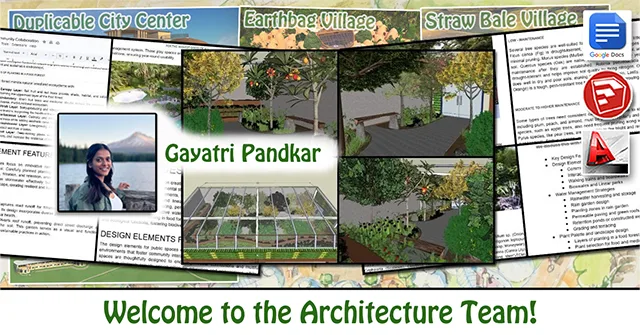
Gayatri is a Master of architecture graduate from the University of Illinois Urbana–Champaign. Her experience spans aviation, education, and community-focused projects, with an emphasis on sustainable and context-responsive design. She is passionate about creating spaces that foster connection, inclusivity, and environmental awareness through thoughtful architecture. Gayatri believes in integrating functionality with aesthetics to develop solutions that are both efficient and inspiring. As a member of the Architecture Team at One Community, she has worked on the 3D model and conceptual design for a desert Walipini structure, exploring sustainable strategies for passive climate control and resilient community living.
WELCOME TO THE TEAM GAYATRI!
FOLLOW ONE COMMUNITY’S PROGRESS (click icons for our pages)
INVESTOR PAGES
GET INVOLVED
One Community Welcomes Keerthana Chitturi to the Management Team!
Posted on November 18, 2025 by One Community Hs
One Community welcomes Keerthana Chitturi to the Management Team as our newest Volunteer/Consultant!
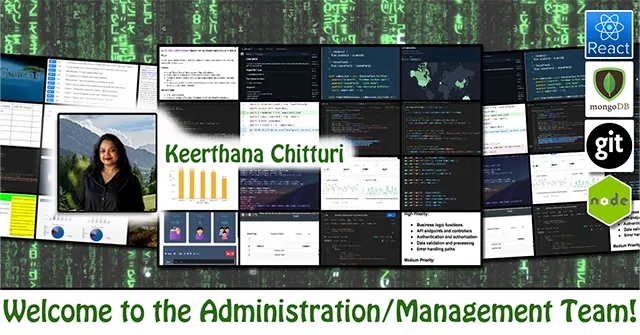
Keerthana holds a Master’s degree in Computer Science from Purdue University and a Bachelor’s degree in Computer Science Engineering from Vishnu Institute of Technology. Before joining One Community, she worked at Coforge, where she led engineering and quality assurance efforts for Pega-based CRM and financial applications, focusing on defect reduction, production stability, and on-time delivery. As a member of the One Community Highest Good Network team, Keerthana serves as a System Administrator and Frontend Tester for the Lucky Star Software Development Team. She manages documentation governance, summary quality control, and feedback workflows, and she coordinates Phase 3 testing to validate functionality against design standards and ensure smooth software deployment.
WELCOME TO THE TEAM KEERTHANA!
FOLLOW ONE COMMUNITY’S PROGRESS (click icons for our pages)
INVESTOR PAGES
GET INVOLVED
One Community Welcomes Indra Anuraag Gade to the Management Team!
Posted on November 18, 2025 by One Community Hs
One Community welcomes Indra Anuraag Gade to the Management Team as our newest Volunteer/Consultant!

Indra holds a Master’s degree in Computer Science from George Mason University. His professional background includes roles at Agilysys, Inc. and Samsung R&D Institute, where he contributed to projects involving generative models, computer vision, and scalable web applications. As a member of the One Community Admin Team and Highest Good Network Software Team, he conducts functional, UI, and regression testing, supports admin training, and streamlines processes by compiling summaries and editing content for the weekly progress blogs. He has also developed a comprehensive social media analytics dashboard to track engagement and guide strategy for One Community’s X (Twitter) account.
WELCOME TO THE TEAM INDRA!
FOLLOW ONE COMMUNITY’S PROGRESS (click icons for our pages)
INVESTOR PAGES
GET INVOLVED
One Community Welcomes Georgina George to the Management Team!
Posted on November 18, 2025 by One Community Hs
One Community welcomes Georgina George to the Management Team as our newest Volunteer/Consultant!
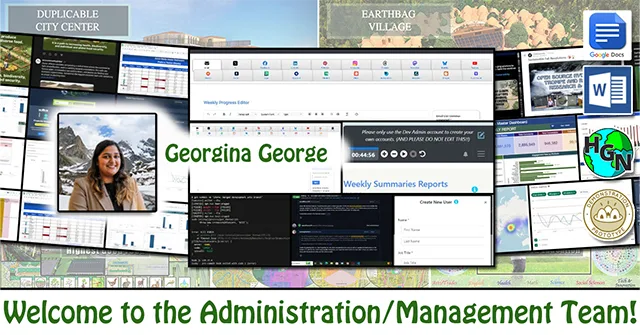
Georgina has over three years of experience in data analytics, reporting, and visualization. She specializes in creating interactive dashboards, automating data workflows, and transforming raw data into actionable insights using tools including Power BI, Tableau, SQL, and Python. Her work focuses on optimizing reporting efficiency, improving data accuracy, and enhancing decision-making through data-driven solutions. Georgina is passionate about sustainability, innovation, and leveraging analytics to support organizational growth. While a member of the One Community team, she contributed to developing and managing the Reddit engagement dashboard, integrating community metrics, and improving the accuracy and visualization of engagement data. She specifically led efforts to implement automated reporting.
WELCOME TO THE TEAM GEORGINA!
FOLLOW ONE COMMUNITY’S PROGRESS (click icons for our pages)
INVESTOR PAGES
GET INVOLVED
One Community Welcomes Sai Suraj Matta Veera Venkata to the Management Team!
Posted on November 17, 2025 by One Community Hs
One Community welcomes Sai Suraj Matta Veera Venkata to the Management Team as our newest Volunteer/Consultant!
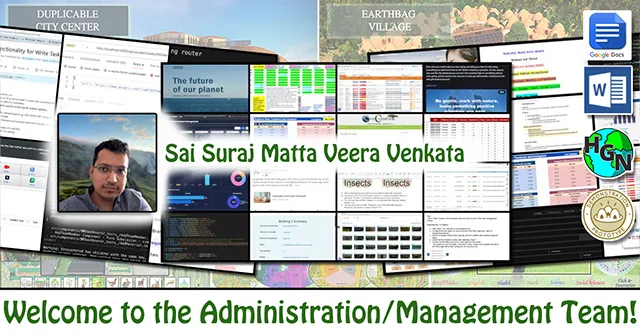
Sai Suraj is a data analyst with proven expertise in designing analytics systems, automating workflows, and translating complex datasets into actionable insights. With strong proficiency in SQL, Python, Power BI, and Tableau, he has successfully implemented multi-platform data integration frameworks and dynamic KPI dashboards across retail, healthcare, and nonprofit domains. He is passionate about leveraging data to improve decision-making, enhance operational efficiency, and drive sustainable impact in collaborative environments. As a member of the One Community team, Suraj has architected a centralized analytics ecosystem consolidating 16+ social media platforms, automated multi-tiered dashboards, and developed a volunteer coordination tracking system that reduced data validation errors by 85%.
WELCOME TO THE TEAM SAI SURAJ!
FOLLOW ONE COMMUNITY’S PROGRESS (click icons for our pages)
INVESTOR PAGES
GET INVOLVED
One Community Welcomes Rajrajeshwari Gangadhar Sangolli to the Management Team!
Posted on November 17, 2025 by One Community Hs
One Community welcomes Rajrajeshwari Gangadhar Sangolli to the Management Team as our newest Volunteer/Consultant!
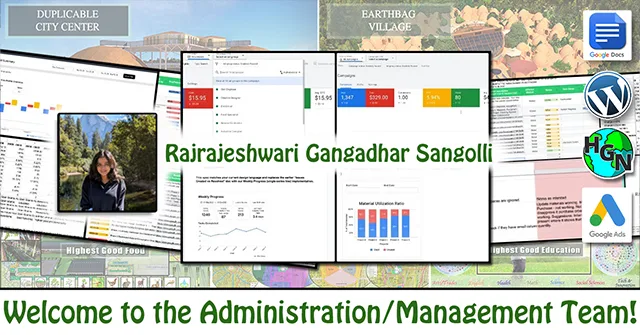
Rajrajeshwari holds a Master’s degree in Business Analytics and Artificial Intelligence and brings 4+ years of experience analyzing large datasets, building dashboards, running A/B tests, and optimizing performance across SaaS, nonprofit, and product environments. Her work spans SQL-based data analysis, automation of operational workflows, predictive modeling in Python, and marketing analytics projects focused on improving conversion efficiency and scaling paid acquisition. As a member of the One Community team, Rajrajeshwari contributes to the Google Ads, Product Testing, and Administrative teams. She leads data-driven ad performance tracking, creates structured testing for the platform, builds visualizations to support development, and identifies issues that guide product improvements.
WELCOME TO THE TEAM RAJRAJESHWARI!
FOLLOW ONE COMMUNITY’S PROGRESS (click icons for our pages)
INVESTOR PAGES
GET INVOLVED
Pragmatic Eco-utopia Creation – One Community Weekly Progress Update #661
Posted on November 17, 2025 by One Community Hs
At One Community, we are pioneering pragmatic eco-utopia creation through sustainable approaches to food, energy, housing, education, economics, social architecture, fulfilled living, and global stewardship practices. Created by an all-volunteer team, we’re developing and open sourcing a self-replicating model designed to help people everywhere build teacher/demonstration hubs working together for The Highest Good of All. By free sharing the complete process and continually evolving sustainability, we aim to empower global collaboration and regenerate our planet while creating a world that works for everyone.
- Here’s our project overview
- Here’s our world-change methodology
- Here’s how this becomes self-replicating
- Here’s how we are open source and free-sharing all the do-it-yourself designs

OUR MAIN OPEN SOURCE HUBS
Click on each icon to be taken to the corresponding Highest Good hub page.
One Community’s physical location will forward this movement as the first of many self-replicating teacher/demonstration communities, villages, and cities to be built around the world. This is the November 17, 2025 edition (#661) of our weekly progress update detailing our team’s development and accomplishments:
Pragmatic Eco-utopia Creation
One Community Progress Update #661
DONATE | COLLABORATE | HELP WITH LARGE-SCALE FUNDING
CLICK HERE IF YOU’D LIKE TO RECEIVE AN EMAIL EACH WEEK WHEN WE RELEASE A NEW UPDATE
YOU CAN ALSO JOIN US THROUGH SOCIAL MEDIA
ONE COMMUNITY WEEKLY UPDATE DETAILS
HIGHEST GOOD HOUSING PROGRESS
 One Community is pioneering pragmatic eco-utopia creation through Highest Good housing that is artistic and beautiful, more affordable, more space efficient, lasts longer, DIY buildable, and constructed with healthy and sustainable materials:
One Community is pioneering pragmatic eco-utopia creation through Highest Good housing that is artistic and beautiful, more affordable, more space efficient, lasts longer, DIY buildable, and constructed with healthy and sustainable materials:
- Learn about: Our Upcoming Crowdfunding Campaign
- Learn about the different village models: 7 Sustainable Village Models
- Visit the open source portals for the first two: Earthbag Village OS Hub | Straw Bale Village OS Hub
This week, Ajay Adithiya Kumar Elancheliyan Tamilalagi (Mechanical Engineer) continued working on the ventilation system design for the Vermiculture Toilet component of the Earthbag Village. He updated the Bill of Materials with the revised item list and totals, added the latest ventilation system and drawer files to shared storage, and created both separate and assembled CAD models for the HVAC system. He made a series of updates to the project report, integrated required design changes into the assembly model, and progressed the assembly setup for further review. Ajay also modified the drawer design based on project requirements and incorporated feedback from Malhar to prepare the updated version for continued work. His ongoing progress supports pragmatic eco-utopia creation through detailed and replicable design work. Below, you’ll find some images of this work.
Baraka Minja (Civil and Environmental Engineer Pr. Eng.) continued working on the Communal Eco-shower and Vermiculture Toilet drawings. This week he worked on a draft report outlining a potential solution for the foundation connection of the Duplicable City Center, proposing a concept involving a bolted connection to the foundation using built-up sections composed of L-shaped and C-shaped channels. The approach was developed to maintain the existing city center design and avoid the need for further modifications or redesign, contributing to pragmatic eco-utopia creation through efficient and adaptable engineering solutions. See below for some of the pictures.
Derrell Brown (Plumbing Designer) continued working on the Earthbag Village 4-dome home final MEP report by reviewing feedback from the initial draft and applying updates across multiple sections. He reviewed the Clarity of Calculations section from the One Community Standards to align the report’s formatting with current expectations. The revisions included updating the HVAC and Sensible Load Logic section to reflect detailed calculations that align with the One Community Guidelines. Derrell also added expanded descriptions alongside these values to maintain clear, chronological order throughout the calculation sequence. His work plays a vital part in pragmatic eco-utopiacreation by ensuring accuracy and transparency in sustainable system documentation. See below for some of the pictures related to this work.
Fangting Xu (Interior Design Intern) continued working with ADA codes related to building connections for ADA 3-dome cluster of the Earthbag Village. This week, she drafted the ADA connected-path notes for sheet A001, clarifying slope, cross-slope, width, ramp, and level-change criteria. She discussed with Jae about the confusion with the ADA shower-room layout. Fangting also tracked Baraka’s weekly tasks and followed up on Ananya’s document handoff to maintain coordination. Her organizational and design efforts contribute to pragmatic eco-utopia creation through accessible and inclusive planning. See below for some of the pictures related to this work.
Karthik Pillai (Mechanical Engineer) continued work on the Vermiculture Toilet and 4-dome home components of the Earthbag Village. This week, he focused on preparing reports for all ongoing projects and moved each task toward completion. He finalized the report for the 4-dome cluster roof project and submitted the design report for Jae to review. Karthik also worked on a combined report for the vermiculture toilet project, covering both the Unistrut assembly and the waste dumping mechanism, with input from the rest of the team. In addition, he designed the final component of the waste dumping mechanism by developing a control pin intended to keep the mechanism stable while the drawer is being loaded. His technical updates and detailed reporting further pragmatic eco-utopia creation through innovation and structural precision. The related visuals are shown below.
Malhar Solanki (Mechanical Engineer) continued working on the Vermiculture Toilet component of the Earthbag Village. This week he focused on updating the bill of materials for the Unistrut assembly, refining the project report, and assisting Karthik with organizing report content, along with participating in the weekly meeting to address any holdups and review task progress; additional work included preparing new tasks and updates for Jae outlining changes in responsibilities for each team member. Malhar’s coordination and documentation efforts play an essential role in pragmatic eco-utopia creation. Review the latest updates in the images below.
Michaela Silva (Architect) continued developing details in the construction documents for the Earthbag Village 4-dome home. This week she updated the earthbag construction sheets to reflect only the four-dome home layout, removing references to the three-dome and six-dome structures. She worked on the materials list and noted the finishes on the interior elevations. Michaela also added the diagrams and tables required for the code requirement sheets, advancing pragmatic eco-utopia creation through clear and replicable architectural documentation. Check out the construction detail visuals below.
DUPLICABLE CITY CENTER PROGRESS
 One Community is pioneering pragmatic eco-utopia creation through a Duplicable and Sustainable City Center that is LEED Platinum certified/Sustainable, can feed 200 people at a time, provide laundry for over 300 people, is beautiful, spacious, and saves resources, money, and space:
One Community is pioneering pragmatic eco-utopia creation through a Duplicable and Sustainable City Center that is LEED Platinum certified/Sustainable, can feed 200 people at a time, provide laundry for over 300 people, is beautiful, spacious, and saves resources, money, and space:
- Learn about this building and it’s function: Duplicable City Center Open Source Hub
This week, Andrew Tzu-Chien (Industrial Designer) continued working on the Duplicable City Center Dormer second-floor window. He updated the new window framing within the current 3D model and checked the horizontal and vertical spacing against building safety code requirements. Andrew also reviewed the existing model elements to ensure the updated framing aligned with surrounding structural features and maintained consistency with the project’s established design parameters. This open source Duplicable City Center project demonstrates pioneering pragmatic eco-utopia creation. For more details, refer to the image below.
Ariana Virginia Gutierrez Doria Medina (Industrial Designer) continued working on the Duplicable City Center window and door framing by designing the support structure for the window insulation, which required adjusting several parts and updating the assembly process. She also revised the assembly instructions to reflect those changes while researching material options, estimating costs, and reviewing the basic requirements for the support. This open source Duplicable City Center project demonstrates pioneering pragmatic eco-utopia creation. See the presentation and research highlights below.
Ayushman Dutta (Mechanical Engineer) continued working on the City Center Dome Hub Connector Engineering and DIY manufacturing. He corrected errors in the manufacturing process document and attended a team meeting. He updated the assembly process documents, created organized Dropbox folders with the required images, and formatted the manufacturing document for consistency. Ayushman also reviewed the assembly Excel sheet to confirm that the information was accurate, checked the Row 2 spreadsheet to verify the entries were written correctly, and resolved formatting issues and other details across the assembly spreadsheets. This open source Duplicable City Center project demonstrates pioneering pragmatic eco-utopia creation. Review the connector analysis visuals below for more details.
Bevan Chiu (Mechanical Engineer Volunteer) continued his work finishing the City Center Eco-spa Designs. He updated the CAD model of the rectangular spa tub by measuring key dimensions, adding the inlet and outlet pipes, and including the required fittings. He also developed the CAD model for the rebar that will serve as internal support within the cinder block layer beneath the tub shell. Bevan then integrated the plumbing layout and the rebar structure into the final assembly to ensure alignment between all components. This open source Duplicable City Center project contributes to pioneering pragmatic eco-utopia creation. For more details, refer to the image below.
Koushik Chandra Katta (Mechanical Engineer) continued working on the Duplicable City Center design. He started work on Row 6 and documented the steps needed for the next update based on the progress made. He prepared the assembly needed for the current phase and verified that the components aligned with the expected structure. Koushik also completed the assembly of Row 1, ensuring it matched the earlier specifications. He documented each step to maintain clarity on what remains for Row 6 and how the assembled sections integrate with the broader layout. This open source Duplicable City Center project contributes to pioneering pragmatic eco-utopia creation. See the image below for detailed analysis of this work.
Sandesh Kumawat (Mechanical Engineer) continued developing the City Center Eco-spa Designs. He completed the integrated Hybrid Structure CAD Model for the Eco-Spa project, showing the complete combination of structure, insulation, and plumbing systems. The model incorporates a Unistrut and steel frame for the main load path, supported by a cinder block foundation that provides permanent containment and thermal mass. The cavities between these layers are designed to hold ROCKWOOL batts for high R-value insulation as part of the non-proprietary, sustainable material strategy. The inner shell, made of cork and plywood panels with a cement finish, defines the spa’s form and creates a sealed boundary for waterproofing. Sandesh also defined the plumbing cavities and modeled the initial circulation lines, including return and suction pipes, confirming they fit within the complex geometry. To support serviceability, the design now includes removable access panels framed by the steel structure, allowing easy maintenance of pumps and manifolds, and addressing the repair limitations seen in full-foam spa systems. He then outlined the FEA verification steps, the thermal analysis requirements for the multi-layer wall assembly, and the Bill of Materials items needed for cost estimation and replication documentation. Discover One Community’s open source Duplicable City Center, which exemplifies pioneering pragmatic eco-utopia creation. See the visuals below for a closer look.
Shreyas Nagaraj (Design Engineer) made more updates to the City Center Dome Hub Connector Engineering and beams for the Duplicable City Center. He focused on updates to the Duplicable City Center dome hub connectors and beams, completing model updates for hub connector Row 9 and integrating new hub connector files for Rows 6, 7, 8, and 9 into the overall dome assembly to prepare it for trimming by Koushik. Shreyas then progressed to Row 1, completing the required updates for that row, assembling the Row 1 hub connector into the larger dome model, and providing the updated file to Koushik. This open source Duplicable City Center project exemplifies pioneering pragmatic eco-utopia creation. For more details, refer to the image below.
Srujan Pandya (Mechanical Engineer) continued his work on developing the dynamic simulation setup for earthquake analysis updates for the City Center Dome Hub Connector Engineering. He focused on cross-verifying architectural design documents with the CAD assemblies, ensuring DWG layouts matched the physical components and identifying discrepancies in missing or extra parts. Srujan continued updating the review sheet and ensuring all team members had their tasks and files organized for review. He also revisited the SketchUp models to identify which mezzanine-level components required removal as part of the modifications associated with the FEA work. The Duplicable City Center demonstrates pioneering pragmatic eco-utopia creation through open source solutions that can guide people. The images below illustrate aspects of this work.
Tianxiang Huang (Mechanical Engineer) continued working on the Duplicable City Center design. He focused on heat transfer analysis for the eco-friendly hot tub project, identifying a relevant paper on swimming pool heating technology and converting its information into a usable document. Tianxiang analyzed the heat transfer mechanisms of the hot tub and outlined the key components that influence energy balance, including solar heat gain, evaporation, convection, and radiation. This open source Duplicable City Center project exemplifies pioneering pragmatic eco-utopia creation. For more details, refer to the image below.
Vineela Reddy Pippera Badguna (Mechanical Engineer) continued contributing to the Duplicable City Center Water Catchment designs. She updated the spreadsheet with the latest modifications and reviewed information on rainwater harvesting in cold climates to clarify the necessary details. She added new materials to the report based on the most recent inputs. Vineela also reviewed the website to understand the greywater system and rechecked the calculations to confirm they were accurate and aligned with the current data. This open source Duplicable City Center project contributes to pioneering pragmatic eco-utopia creation. See the updated rainwater catchment data and design visuals below.
HIGHEST GOOD FOOD PROGRESS
 One Community is pioneering pragmatic eco-utopia creation through Highest Good food that is more diverse, more nutritious, locally grown and sustainable, and part of our open source botanical garden model to support and share bio-diversity:
One Community is pioneering pragmatic eco-utopia creation through Highest Good food that is more diverse, more nutritious, locally grown and sustainable, and part of our open source botanical garden model to support and share bio-diversity:
- Learn about the structures: Hoop House Hub | Aquapini & Walipini Open Source Hub
- See what we’ll be growing: Gardens & Hoop Houses | Large-scale Structures | Food Forest | TA
This week, the core team continued working on the Master Tools, Equipment, and Materials and Supplies List for the Large-scale Garden, Botanical Garden, and other Highest Good Food components. Comparisons were conducted between the Master and Rab, Master and Orchard, and Master and Botanical Garden documents. Additionally, cross-comparisons were completed between the Large-scale Garden and Orchard documents, as well as the Orchard and Botanical Garden documents. The Highest Good Food initiative is a key component of One Community’s open source plans, focused on pragmatic eco-utopia creation and exemplifying the organization’s commitment through innovative design and implementation. Below are some images showcasing this work.
Chelsea Mariah Stellmach (Project Manager) continued her new focus on the Transition Food Self-sufficiency food and inventory tracking software plans. She added comments and feedback to Ravikumar’s Figma files to provide a clearer view of expected software behavior, met with Tatyana to gather notes on preferred features for the kitchen inventory software, proposed new designs for additional pages including a hub for managing onsite ingredients such as produce and animal products, and outlined a preference for recipe-style pages for related tasks along with a pie chart for each ingredient to show how it is handled. As an essential aspect of One Community’s open source goals, the Highest Good Food initiative supports pragmatic eco-utopia creation. The following images provide a view of her contributions.
Falguni Sakpal (Volunteer Architectural Designer and Planner) continued initiating render development for the Aquapini and Walipini Master Plan of the Highest Good Food initiative. She worked on the Aquapini and Walipini Master Plan and Related Website Content Updates task. She reviewed the assigned sections across all three main documents. Falguni gathered visual references for the rendering style, studied existing plan and section examples, and reviewed the original AutoCAD base files to understand layer organization and drawing structure. She exported and cleaned the required plan layers, set up the rendering workflow, and began the first draft of the rendered plan. The Highest Good Food initiative is a key part of One Community’s open source platform, focused on sustainable and participatory development while supporting pragmatic eco-utopia creation. See below for pictures related to this work.
Gayatri Pandkar (Architect) continued writing content for the various components of the Aquapini and Walipini aspects of the Highest Good Food initiative. She worked on the Walipini 3 model by sketching initial concepts for the people spaces and exploring layout options to understand circulation and gathering areas. Gayatri gathered and organized the necessary SketchUp plant blocks according to the plan to prepare for the next stage of modeling. She also updated and corrected sections of the Aquapini report, refining descriptions, adjusting terminology, and aligning the content with the latest design approach. The Highest Good Food initiative is a key part of One Community’s open source platform, focused on sustainable and participatory development while supporting pragmatic eco-utopia creation. Visual examples from her work are presented below.
Japneet Kour (Volunteer Architect) continued contributing to the Highest Good Food initiative. She worked on Lumion renders for Walipini #1, the Frost-free Arid Zone Desert House, focusing on defining pathways, plants, trees, and public spaces while confirming that adequate sunlight reaches all intended areas. The work included detailing key design features such as stepping stones for the main pathway, pathway material and texture, natural light use, grading and curved terracing for land management, and the integration of green infrastructure with community spaces. Japneet added people spaces, resting areas, and stone benches that align with the desert walipini environment. She also created an area planned for edible and medicinal plants and a basic walkthrough to accompany the visual layout. The Highest Good Food initiative is a key part of One Community’s open source platform, focused on sustainable and participatory development while supporting pragmatic eco-utopia creation. Visual examples from her work are presented below.
Jay Nair (BIM Designer) continued developing the Aquapini and Walipini Planting and Harvesting documents. He worked on the lighting energy calculations for Greenhouse Walipini 1, updating values and organizing the data to align with the project’s technical requirements. At the same time, Jay continued developing an early concept for a lighting energy calculator that could streamline future calculations, focusing on identifying the inputs, outputs, and structure needed to make the tool practical for repeated use. The Highest Good Food initiative is a key part of One Community’s open source platform, focused on sustainable and participatory development while supporting pragmatic eco-utopia creation. See below for pictures related to this work.
Nitin Parate (Architect) continued contributing to the Aquapini and Walipini renders and layout graphics. Nitin focused on extracting all planting legends from the PSD file and organizing them for reference to support updates to the Walipini layout. The extracted elements were integrated into the plan to improve accuracy and maintain alignment with the updated landscape design. Additional corrections were made to planting layers to match the legend provided by Jae, ensuring consistency in tree types and placements. Work also began on the Walipini 3 plan by reviewing the layout and planting scheme, followed by extracting the required JPGs and PDFs needed for production, rendering, and further development of the plan. The Highest Good Food initiative is a key part of One Community’s open source platform, promoting regenerative and participatory development while supporting the concept of pragmatic eco-utopia creation. Images below showcase his contributions.
Pallavi Deshmukh (Software Engineer) continued working on the Aquapini and Walipini Planting and Harvesting web details. She developed new content for Blog 660, collaborated with her teammates to review input, and integrated feedback to create a consistent final version. Pallavi applied Jae’s feedback, added the Walipini #2 content provided by Silin, and updated the Walipini #2 page with contributions from Junyi Shi. Her updates included revising text, links, and images to align with current project requirements before submitting the revised version for Jae’s review. Pallavi completed the Walipini #2 work and began work on Walipini 1 and Zenapini 2. She also completed three interviews and submitted the related details. In alignment with One Community’s open source objectives, the Highest Good Food project integrates the concept of pragmatic eco-utopia creation into a larger vision of regenerative living. Her contributions are highlighted in the collage below.
Ravi Kumar Sripathi (Software Engineer) continued developing the Food Procurement and Storage software platform, enhancing features related to inventory tracking, recipe management, and food utilization. He refined several interface and functionality updates across the platform with a focus on the kitchen and recipe sections. He defined how due and overdue items should appear and evaluated whether a harvest button should be included for time-sensitive ingredients. Ravi explored alternative data-visualization options, including a pie chart for displaying status information. Within the recipe workflow, he updated the system to adjust cooking time based on the number of servings. He also carried over ingredient prep notes so they appear consistently across all recipe pages. In addition, he added a feature that displays common ingredient substitutions at the top of each recipe. Ravi applied the requested updates on the kitchen page and continued adjusting the design to align with user expectations and the broader layout. The Highest Good Food initiative is a key part of One Community’s open source platform, focused on sustainable and participatory development while supporting the concept of pragmatic eco-utopia creation. See below for pictures related to this work.
Shivangi Varma (Architectural Designer and Planner) continued the redesign of the Highest Good Food overall presentation, currently focused on the Aquapini and Walipini masterplan render. She completed the Aquapini, Walipini, and Zenipini masterplan render, reviewed the feedback received for the graphic, continued developing pending graphics for the HGF Infrastructure, Open Source Hub, and Planting and Harvesting pages with details of the Aquapini, Walipini, and Zenipini structures, and advanced working on the structural differences diagram in particular. The Highest Good Food initiative plays a leading role in One Community’s open source platform by promoting sustainable and participatory development, focused on pragmatic eco-utopia creation. Below are visuals highlighting this work.
HIGHEST GOOD ENERGY PROGRESS
 One Community is pioneering pragmatic eco-utopia creation through Highest Good energy that is more sustainable, resilient, supports self-sufficiency and includes solar, wind, hydro and more:
One Community is pioneering pragmatic eco-utopia creation through Highest Good energy that is more sustainable, resilient, supports self-sufficiency and includes solar, wind, hydro and more:
- Learn about the open source sustainable-energy foundations: Solar, Hydro, and Wind
- Explore our research into the most sustainable products and companies for saving water and energy: Insulation, Eco-laundry, Lightbulbs and Light Bulb Companies, Doors and Door Companies, Windows and Window Companies, Toilets, Faucets and Faucet Accessories, Urinals, and more.
This week, the core team continued contributing to the Highest Good Energy initiative. They contacted Vishal, who responded that he would no longer be able to continue working with the team. The team then worked on the energy needs spreadsheet by reviewing several Highest Good Energy documents and linking the energy needs on the summary page to the corresponding values for each project phase. They also added additional energy needs pages from other spreadsheets to the Energy Needs Analysis Spreadsheet and began reviewing and comparing the energy cost analysis against the calculator tool and other related energy cost documents. The Highest Good Energy initiative plays a leading role in One Community’s open source platform by promoting sustainable and participatory development, focused on pragmatic eco-utopia creation. Below are images related to this project.
HIGHEST GOOD EDUCATION PROGRESS
 One Community is pioneering pragmatic eco-utopia creation through Highest Good education that is for all ages, applicable in any environment, adaptable to individual needs, far exceeds traditional education standards, and more fun for both the teachers and the students. This component of One Community is about 95% complete with only the Open Source School Licensing and Ultimate Classroom construction and assembly details remaining to be finished. We’ll report on the final two elements to be finished as we develop them. With over 8 years of work invested in the process, the sections below are all complete until we move onto the property and continue the development and open sourcing process with teachers and students – a development process that is built directly into the structure of the education program and everything else we’re creating too:
One Community is pioneering pragmatic eco-utopia creation through Highest Good education that is for all ages, applicable in any environment, adaptable to individual needs, far exceeds traditional education standards, and more fun for both the teachers and the students. This component of One Community is about 95% complete with only the Open Source School Licensing and Ultimate Classroom construction and assembly details remaining to be finished. We’ll report on the final two elements to be finished as we develop them. With over 8 years of work invested in the process, the sections below are all complete until we move onto the property and continue the development and open sourcing process with teachers and students – a development process that is built directly into the structure of the education program and everything else we’re creating too:
- Program Overview: Education Open Source Hub
- How the components work together in designing human orchestrated eco-abundance: How to use the Education for Life Program
- Lesson Plans for Life – Lesson Plans How-to
- Foundations of Outstanding Leaders, Teachers, and Communicators
- Curriculum for Life
- Teaching Strategies for Life
- Learning Tools and Toys for Life
- Evaluation and Evolution
This week, Prudhvi Marpina (Data Analyst) continued developing the Highest Good Education software platform, concentrating on Phase 4: marketing, promotion, and administrative activities. He primarily worked on HGN Phase 4 document tasks, reviewing all action items, checking their corresponding GitHub PR titles, and notifying developers when updates were needed so the titles matched the document requirements. He monitored PRs that were pending for extended periods, communicated with Jae about items requiring high-priority labels, and completed Level 1 and Level 2 testing for multiple PRs, including PR1868 and PR4130. Prudhvi tracked progress on merged and in-review items, verified title consistency across the document and GitHub, and updated developers as needed. In addition to this work, he updated the BlueSky social media tracker sheets, scheduled posts, and completed blog #660, along with reviewing and providing feedback on Administration Team tasks as part of the New-Admin Training Team. Through these activities, he supported One Community’s commitment to pragmatic eco-utopia creation. The images below highlight his contributions.
HIGHEST GOOD SOCIETY PROGRESS
 One Community is pioneering pragmatic eco-utopia creation through a Highest Good society approach to living that is founded on fulfilled living, the study of meeting human needs, Community, and making a difference in the world:
One Community is pioneering pragmatic eco-utopia creation through a Highest Good society approach to living that is founded on fulfilled living, the study of meeting human needs, Community, and making a difference in the world:
- Read the Highest Good society overview: Highest Good Society
- Learn about the model for fulfilled living and sharing: A Day in the Life
- Learn about the 4 economic models: RBE | For-profit | Non-profit | Entrepreneurship
- Learn about our open source community collaboration and management software: The Highest Good Network
This week, the core team completed over 44 hours managing volunteer work reviews, handling emails, overseeing social media accounts, supporting web development, identifying new bugs, and integrating bug fixes for the Highest Good Network software. They also interviewed and onboarded new volunteer team members. Additionally, they produced and integrated the video above, highlighting how pragmatic eco-utopia creation serves as the foundation of One Community’s broader mission. The following images showcase highlights of this work.
Jaiwanth Reddy Adavalli (Project Manager) continued developing the Job Applicants page and key components of the Highest Good Network, tracking updates in the software team management documents to assign, monitor, and support task status. He worked on the Phase 1 and Questionnaire Dashboards by testing multiple components in the HGN software. Apart from working on the weekly blog post, as a member of the pull request review team, Jaiwanth reviewed submissions from the volunteer team assigned to him. This work supports One Community’s commitment to pragmatic eco-utopia creation. The images below highlight his contributions.
Rajrajeshwari Gangadhar Sangolli (Data Analyst) continued working on Google Ads management and strategy evolution of the Highest Good Network. She completed steps 1–3, addressed volunteers who did not finish their required hours or submit summaries, created collages, added new links for incoming volunteers, and drafted introductory and closing sentences for them. She completed steps 1–3, addressed volunteers who did not finish their required hours or submit summaries, created collages, added new links for incoming volunteers, and drafted introductory and closing sentences for them. She completed step 4 by adding Bear’s work, checking errors using GPT, and reviewing the work of two volunteers. She finished the weekly analysis, applied Google recommendations, and identified areas for improvement in specific campaigns. Rajrajeshwari designed data charts, tested new PRs, checked for any PRs ready to merge, and tested the dashboard and its dark theme. She created final chart ideations for the dashboard and requested approval from Jae. She added additional chart designs for Jae’s review and reviewed multiple software pages to note suggestions and improvements. She received approval for the designs from Jae, contacted the volunteer as instructed, and incorporated a few more improvements into the chart ideation. This project supports One Community’s commitment to pragmatic eco-utopia creation. The images below highlight key aspects of her work.
Yagna Reddy Badvel (Data Analyst and Team Administrator) continued working on the Summary Dashboards and Weekly Report page on the Highest Good Network. He reviewed and validated the Total Org Summary updates to maintain dashboard accuracy and functionality. Several implemented items were identified as pending merge, including fixes for the Weekly Summary Count (PR #1790), Volunteer Status “New Mentors” card (PRs #1760 and #4142), Volunteer Status pie chart (PRs #4138 and #1759), and Team Stats duplicate member count (PR #1778). Yagna also verified that all merged PRs are working as developed, documented pending items, and drafted a detailed message to Jan summarizing their current status and next steps. Additional work included cross-checking dashboard metrics, validating data consistency, and updating internal tracking sheets. This work supports One Community’s commitment to pragmatic eco-utopia creation. The images below highlight his contributions.
ADMINISTRATION TEAM
The Administration Team’s summary, which covers their work on the Highest Good Network, was managed by Prudhvi Marpina (Data Analyst) and includes Anusha Gali (Software Engineer), Ashutosh Mishra (Software Engineer), Divanshu Bakshi (Team Admin), Indra Anuraag Gade (Software Engineer and Team Administrator), Keerthana Chitturi (System Administrator), Mridul Bhushan (Volunteer Project Strategy Analyst and Team Administrator), Neeharika Kamireddy (Data Analyst), Olawunmi “Ola” Ijisesan (Administrative and Management Support), Olimpia Borgohain (Data Analyst and Team Administrator), Priyanshi Sharma (Data Analyst and Team Administrator), Rachna Malav (Data Analyst), Rajeshwari Bhirud (Administrator), Rishi Sundara (Quality Control Engineer and Team Administrator), Rishitha Adepu (Administrator), Sai Suraj Matta Veera Venkata (Business Data Analyst), Sayantan Paul (Volunteer Frontend Tester and Software Team Administrator), and Sudarshan Raju Chintalapati Venkata (Data Analyst). The Administration Team supports the Highest Good Network, a tool designed to track and measure progress while developing systems that contribute to pragmatic eco-utopia creation. Through administrative support, documentation, testing, training, recruiting, analytics, and content management, the team helps advance this mission, aligning with One Community’s vision of building a replicable and sustainable future model.
This week, Anusha reviewed over fifty pull requests across the HGN and HGNRest systems, checked functionality, identified missing data and loading issues, retested fixes, handled blog updates, reviewed admin posts, prepared collages, and organized submissions for the Duplicable City Center team. Ashutosh completed the 3D avatar interface, prepared a temporary UAT deployment, evaluated fine-tuned models, refined LCEL templates, integrated LCEL chains, built a LangChain Expression Language framework, and updated the chatbot logic with new tests. Divanshu posted four Mastodon updates, documented two action items, updated the Master Dashboard with new analytics, and used Python scripts to extract and structure data. Indra worked on Blog #660 for the Code Crafters Team, created X/Twitter documentation and a walkthrough video, updated analytics dashboards, completed a baseline ML model, added tasks to the Bugs & Features spreadsheet, and continued frontend testing. Keerthana reviewed weekly summaries, updated Step 2 and Step 4 tracking documents, prepared the weekly blog, and added Phase 3 action items. Mridul reviewed Moonfall submissions, refined the team summary, updated HGN Phase 2 documentation, reviewed pull requests, collected missing visuals, and updated his collaborator announcement. Neeharika followed up on task assignments, tested pull requests, completed admin reviews, verified corrections using updated guidance, and conducted an interview. This work supports One Community’s mission of pragmatic eco-utopia creation.
Ola organized folder structures and workspace materials for the admin teams, managed the Pinterest content schedule, generated analytics reports, and submitted her required weekly tasks. Olimpia created LinkedIn analytics training materials and a walkthrough video, updated weekly KPIs, completed senior admin review checks, resolved documentation comments, identified individuals who needed warnings, and scheduled LinkedIn posts. Priyanshi conducted Phase 2 testing, identified chart and filter issues, checked API error handling, and added a high-priority bug linked to multiple PRs. Rachna reviewed older tasks and SEO pages and monitored hiring updates. Rajeshwari completed Blog #660 administration, updated SEO and Binary Brigade content, tested materials and inventory features in the BM Dashboard, and documented pass/fail results. Rishi reviewed Done PRs, followed up with contributors on Slack, checked PRs with merge conflicts, applied high-priority labels, and updated SEO for Blog #660. Rishitha updated bios, uploaded Threads content, added raw data to the dashboard, updated the volunteer tracker, and prepared documentation and videos. Sai Suraj updated Facebook and Instagram analytics, validated and processed new data, maintained data pipelines, prepared training documentation, and completed admin and SEO tasks. Sayantan completed Level 1 testing, continued Level 2 testing on job-posting features, tested PRs addressing access and formatting issues, assigned tasks, and reviewed tracker pages. Sudarshan managed the Alpha Software Team blog, completed SEO updates, reviewed Phase 2 PRs, added new bug and feature tasks, validated dashboard data, and updated BM Dashboard documentation. To learn more about how this work supports One Community’s vision of pragmatic eco-utopia creation, visit the Highest Good Society and Highest Good Network pages. Highlights of the team’s contributions are shown in the collage below.
GRAPHIC DESIGN TEAM
The Graphic Design Team’s summary includes Qinyi Liu (Graphic Designer), who focused this week on creating graphic designs that support pragmatic eco-utopia creation. Qinyi created new characters using ChatGPT, refined them, produced and updated posters, worked on layout, copy editing, and color adjustments for announcements and social media, integrated revised visuals into designs, and incorporated pragmatic eco-utopia creation into the visual focus. She completed these tasks to maintain consistency across project materials. These efforts highlight pragmatic eco-utopia creation. See the Highest Good Society pages and the collage below for examples of their work.
HIGHEST GOOD NETWORK PROGRESS
 One Community is pioneering pragmatic eco-utopia creation through open source Highest Good Network® software that is a web-based application for collaboration, time tracking, and objective data collection. The purpose of the Highest Good Network is to provide software for internal operations and external cooperation. It is being designed for global use in support of the different countries and communities replicating the One Community sustainable village models and related components.
One Community is pioneering pragmatic eco-utopia creation through open source Highest Good Network® software that is a web-based application for collaboration, time tracking, and objective data collection. The purpose of the Highest Good Network is to provide software for internal operations and external cooperation. It is being designed for global use in support of the different countries and communities replicating the One Community sustainable village models and related components.
- Learn about our open source community collaboration and management software: The Highest Good Network
This week, the core team tested HGN pull requests and confirmed 16 fixed PRs. This effort highlights One Community’s commitment to pragmatic eco-utopia creation. The following PRs were not fixed: making mousing over a task show who created it, donut chart for experience breakdown, adding dark mode styles to the MostFrequentKeywords component, changing .css to .module.css in the PR grading test directory, the inline module CSS bugfix, and the LBDashboard homepage routing and missing routes. Several PRs could not be tested because there was no data on the Main branch, including the suggested jobs list, the Most Frequent Keywords mind map frontend, the job application form, the updated equipment form, and the IssueBreakdownChart module CSS update. The team also had a phone chat with a volunteer about a mockup for the food inventory software. This work strengthens One Community’s mission of pragmatic eco-utopia creation. See the Highest Good Society and The Highest Good Network pages, and the collage below, for an overview of the team’s contributions.
ALPHA SOFTWARE DEVELOPMENT TEAM
The Alpha Software Team, working on the Highest Good Network software, was managed by Lin Khant Htel (Frontend Software Developer). The team includes Maneesh Buddha (Software Developer) and Nikita Kolla (Full Stack Developer). The Highest Good Network software is a key part of sustainable and free-shared eco-solutions, helping track and measure progress toward pioneering pragmatic eco-utopia creation. The software supports social architecture, construction, production, and maintenance processes that contribute to the open source project and resilient ecosystems. Designed to be portable and scalable, the Highest Good Network software is well suited for off-grid and sustainable living communities. This project reflects One Community’s open source commitment to advancing the idea of pioneering pragmatic eco-utopia creation.
This week, Maneesh completed the job posting page update and made the Edit to Reorder feature functional for Owners. His work included reviewing previous implementations, identifying missing components, adding the JobReorderModal.jsx file under the Collaboration folder, restoring modal integration in the main Collaboration view, connecting toggle logic, ensuring proper button visibility based on access level, fixing permission logic, wiring modal actions to the data update flow, and verifying that the reorder workflow can be triggered from the UI. Nikita focused on resolving issues in the test code for the statistics accuracy task by confirming that the functions under test were not modifying the database, creating temporary validation functions, and updating her pull requests by resolving merge conflicts and cleaning up records to align with recent changes. See the Highest Good Society and Highest Good Network pages for more on how this contributed to the idea of pioneering pragmatic eco-utopia creation. See the collage below to view the team’s work.
BINARY BRIGADE SOFTWARE DEVELOPMENT TEAM
The Binary Brigade Team, presenting their work on the Highest Good Network software, was managed by Nikhil Routh (Software Engineer) and included Kanishk Agarwal (Software Engineer), Apoorva Jain Ramapura Prashanth (Software Engineer), Ramsundar Konety Govindarajan (Software Engineer), Harsha Rudhraraju (Software Engineer), Xinyi Zhou (Developer), Sourabh Bagde (Software Developer), Taariq Mansurie (Full-Stack Developer), Sumedh Kumar (Full-Stack Developer), Aswin “Tony” Kanikairaj (Software Engineer), and Amalesh Arivanan (Software Engineer). The Highest Good Network software is our tool for managing and objectively measuring progress, ensuring that all contributions are tracked and aligned with our mission, modeling, and pioneering pragmatic eco-utopia creation.
This week, Amalesh implemented the Phase 2 Summary Dashboard by creating a KPI tile view and a weekly task line chart with 4-, 8-, and 12-week filters, adding date validation, building backend endpoints for weekly grouping and KPI aggregation, applying timezone handling, and documenting all work in Dropbox. This work strengthens One Community’s dedication to pragmatic eco-utopia creation. Apoorva worked on the Truth Social auto-poster integration and completed five UI improvements for the email subscription system, including clearer success messages, proper error indicators, loading spinners, responsive logo behavior, and enhanced accessibility. She also developed additional UI updates such as semantic labels, disabled button states, and improved error presentation. This work plays a role in One Community’s approach to pragmatic eco-utopia creation. Aswin completed the Phase 4 Badge Tracking Page by building the badge gallery, modal, badge components, CSS module styling, setting up mock data, refining the layout, and then pushing the changes with supporting documentation. Harshavarma set up the frontend branch, analyzed requirements, and built the graph component with date and role filters, custom Y-axis labels, actions, reducers, Recharts integration, dark mode alignment, error handling, and frontend-backend synchronization. Kanishk extended the community portal calendar by refining the Phase 3 UI, syncing selected dates with filters, applying modular styling, and then working on Phase 3 attendance tracking by documenting schema and API contracts, building CRUD services with mock data, and completing the attendance logging frontend with sortable tables, analytics, visualizations, and modular CSS. This work adds to One Community’s efforts toward pragmatic eco-utopia creation.
Nikhil continued the CSS Modules migration across Community Portal, BM Dashboard, and Teams by converting remaining files, updating imports, coordinating team progress, reviewing related pull requests, validating backend fixes for MongoDB timeout issues and defining database requirements for a new backend feature with a team member. This contribution advances One Community’s vision for pragmatic eco-utopia creation. Ram worked on the PR Review Analytics Dashboard by identifying missing PR-only teams in the filter, determining mismatches between UserProfile and PRReviewInsights collections, adding a parameter to return PR teams only when needed, and ensuring the dashboard now includes all relevant teams without affecting other pages. Sourabh advanced the MySpace auto-poster module by building the posting and scheduling workflow, adding validation, creating a two-column layout with responsive styling, implementing saved-post cards, enabling edit-flow hydration, and integrating toast feedback across actions. This work adds to One Community’s efforts toward pragmatic eco-utopia creation. Sumedh developed the new Material Usage Record chart for the BMDashboard by building a React component with a Recharts doughnut chart inside a modal, integrating data from the Material List page, and identifying remaining styling and responsiveness improvements. This contribution helps reinforce One Community’s pursuit of pragmatic eco-utopia creation. Taariq addressed bugs, merge conflicts, and test failures across multiple repositories, fixed filter behavior on refresh, resolved yarn file discrepancies, updated the archived projects feature, refined elements of the Phase 4 Assign Lesson Plan feature, progressed on the weekly summary email task, and cleaned up unused code. Xinyi resolved issue-related navigation problems by adding missing handlers, fixing dropdown behavior, correcting the “View Issues” route on the Team page, adding loading and empty states, validating error handling, and ensuring consistent styling across light and dark modes. See the Highest Good Society and Highest Good Network pages for more information on how this work models pioneering pragmatic eco-utopia creation. The collage below shows images of their work.
BLUE STEEL SOFTWARE DEVELOPMENT TEAM
The Blue Steel Software Team, working on the Highest Good Network software, was managed by Divanshu Bakshi (Product Manager) and includes Linh Huynh (Software Engineer), Humemah Khalid (Software Engineer/Backend Developer), Som Ramnani (Software Engineer), and Sheetal Mangate (Software Engineer). The Highest Good Network software is how we’ll manage and objectively measure our progress in pragmatic eco-utopia creation through our social architecture, construction, production, and maintenance efforts, while supporting widespread and lasting eco-lifestyle access.
This week, Humemah worked on adjusting permissions related to the “set final day” action to ensure rules applied correctly and added date validation to the infringement creation process in the userProfileController. She inserted checks for required and optional dates so that invalid or empty values return a 400 response and valid dates are stored in ISO format. Pioneering pragmatic eco-utopia creation remained the guiding context as work continued across permissions, development, routing, and testing. Linh completed development of the Event Management Page in the Organizer View as part of the Phase 3 task. He finalized the page structure under the correct route, removed outdated components, and built the new Event Page Organizer structure. He integrated the page with the mock API to support dynamic loading and updating of event details, including description, status, rating, and date selection using activityId-based localStorage. He also refined the component layout, improved CSS module isolation, addressed build and dependency issues with Tailwind and ESLint, resolved rendering and data synchronization bugs, and verified UI alignment across multiple sections, including Description, Analysis, Resource, and Engagement. The functionality of the date selector, calendar integration, and media upload features was confirmed. This work is part of One Community’s framework for pragmatic eco-utopia creation.
Som worked on PR 4334 and PR 4383 related to Community Portal routing. For PR 4334, he updated user-related navigation so that profile, view profile, and update password routes function within the Community Portal namespace and added CPProtectedRoute entries to support authentication and authorization logic. For PR 4383, he updated routing so that navigation elements under Other Links remain within the Community Portal namespace, added route definitions for User Management, Projects, Teams, Announcements, Badge Management, and Permissions Management with role-based access control, and configured the related repository. Sheetal worked on unit tests for add, edit, and delete scheduled task functions and the bulk submit scheduled post endpoint. She made backend updates and resolved frontend issues where failing tests blocked commits by creating a new local branch and merging code into it to isolate the cause. This aligns her work with the long-term goals of pioneering pragmatic eco-utopia creation. The collage below shows images of their work.
CODE CRAFTERS SOFTWARE DEVELOPMENT TEAM
The Code Crafters Team, covering their work on the Highest Good Network software, was managed by Vivek Chandra (Software Engineer) and includes Ajay Naidu (Software Engineer), Akshith Kumar Reddy Balappagari Gnaneswara (Software Engineer – Full Stack), Chaitanya Swaroop Kumar Allu (Software Engineer), Juhitha Reddy Penumalli (Software Engineer), Sanjeev Raichur (Software Engineer), Shradha Bhadrannavar (Software Engineer), Sphurthy Satish (Software Engineer). The Highest Good Network software is how we’ll manage and objectively measure our progress in pragmatic eco-utopia creation through our social architecture, construction, production, and maintenance efforts, while supporting widespread and lasting eco-lifestyle access.
This week, Ajay advanced Phase 2 of the Summary Dashboard by implementing a line chart for tracking rental costs, resolving layout and dark-mode styling issues, and migrating styles to CSS Modules for better scoping. Akshith progressed Phase 4 of the PM Educator Training Dashboard by setting up the frontend structure, creating components and styling files, validating functionality with mock data, and beginning backend integration. Chaitanya strengthened the MailChimp Replacement pipeline by refining email-sending logic to meet Gmail rate limits, modularizing backend components, replacing the cron-job scheduler with an in-memory queue, improving send sequencing, and adding controller documentation. These efforts collectively support One Community’s pragmatic eco-utopia creation goals. Juhitha continued Phase 4 of the Task Progress Indicator by completing the donut chart and progress bars, linking dashboard navigation, updating styling, fixing CSS issues, preparing PRs, resolving merge conflicts and test errors, addressing Notify app triggers, reviewing SonarQube findings, and finalizing integration steps for the POST endpoint that updates task completion status.
Sanjeev added event-creation capabilities to the Community Portal by introducing a Redux action for POST requests, creating a modal interface for entering event details, integrating it into the UI with state management and handlers, and providing testing steps to verify backend communication. Shradha validated issues from PR #3263 while reviewing PRs #3668 and #1476 by testing reports across all scenarios, confirming that rendering, spacing, dark-mode readability, and error handling behaved correctly, documenting results with screenshots, and planning a final verification pass. Sphurthy expanded analytics in the HGNRest application by creating the StudentMetrics model, building a service to compute engagement metrics from form responses, adding two analytics endpoints, and implementing a scheduled job that updates metrics daily while aligning all changes with existing Express, Mongoose, and node-cron patterns. Vivek met with his transitioning manager to review handoff tasks, examined the responsibilities he will assume, reviewed PRs 4152, 1769, 3469, and 1379, requested changes where functionality failed, and spent time learning expectations for his new managerial role. These contributions strengthen One Community’s mission and commitment to advancing pragmatic eco-utopia creation. The collage below shows an overview of this team’s work.
DEV DYNASTY SOFTWARE DEVELOPMENT TEAM
The Dev Dynasty Team’s summary, covering their work on the Highest Good Network software, was managed by Prem Vora (Software Developer) and includes Adithya Cherukuri (Volunteer Software Engineer), Aditya Gambhir (Software Engineer), Deekshith Kumar Singirikonda (Developer), Manvitha Yeeli (Software Engineer), Mohan Satya Ram Sara (Software Engineer), Nahiyan Ahmed (Full-Stack Software Developer), Neeraj Kondaveeti (Software Engineer) and Vamsidhar Panithi (Software Engineer). The Highest Good Network software is how we’ll manage and objectively measure our processes for open sourcing a better world for us all through our social architecture, construction, production, and maintenance processes. This progress supports One Community in pioneering pragmatic eco-utopia creation.
This week, Nahiyan reviewed PR 4369 by checking the material toggling feature, confirming that material names populated correctly for different options, validating workflow logic, ensuring interaction stability during testing, and reviewing code structure for consistency. Adithya worked on backend development for the Job Posting Analytics role-based visualization feature by extending aggregation logic from two-role to multi-role pairing, adding a ten-minute caching system for the GET/Timeline route, finalizing endpoints, integrating functionality, and reviewing project image documentation. Aditya enhanced the Reason of Stoppage of Tools feature by adding and testing backend endpoints, identifying inconsistent error responses and redundant validations, building the ToolsStoppageHorizontalBarChart using Chart.js with project auto-selection, date range filters, dark mode support, refactoring related charts for responsive behavior, maintaining backend validation, indexing, caching, structured responses, and preparing documentation describing changes and test steps. Deekshith worked on a React-based analytics and user management setup by creating a PermissionWatcher component to monitor authentication and permission changes using React-Redux and Axios, triggering timed logouts, defining event-related data structures for analytics, and developing an AttendanceStatistics component with interactive charts and month-based state management.
Manvitha built the student timer feature by connecting frontend to backend, resolving path, JSON, and header issues, adding backend components for start, pause, resume, stop, status, history, and duration changes, redesigning the timer into a compact display with an expanded popup, and fixing timing and synchronization issues. Mohan reviewed multiple frontend pull requests by testing chart filters, tooltips, reset actions, styling updates, dashboard behavior, UI pages, questionnaire functionality, and permission management changes, documenting layout issues and dark mode inconsistencies, and validating endpoints and automated tests. Neeraj worked on event-related frontend updates by adding a missing Search Events input, applying color coding for event statuses, and adding status badges such as New, Needs Attendees, Filling Fast, and Full, updating UI components to match design requirements. Prem focused on event filtering and date validation by testing upcoming events, adding logic to prevent past date selection, and creating corresponding pull requests. Vamsidhar optimized dark mode behavior and UI consistency across BM Dashboard modules, resolving background and text inconsistencies, refactoring CSS and component conditions, fixing layout issues during theme transitions, and validating user preference persistence. See the Highest Good Society and Highest Good Network pages for more on how this relates to our mission of pioneering pragmatic eco-utopia creation. Explore some of the team’s work in the collage below.
EXPRESSERS SOFTWARE DEVELOPMENT TEAM
The Expressers Team’s summary, which covers their work on the Highest Good Network, was managed by Rahul Trivedi (Software Engineer) and includes Layne Taylor (Software Engineer), and Meenashi Jeyanthinatha (Full-Stack Developer). This contribution supports One Community’s goal of pragmatic eco-utopia creation.
This week, Layne focused on frontend modals to accommodate the search and add materials feature, as well as SKU and QR code generation. She spent about half of her time drafting and editing correspondences with Jae and Ujjwal about the task’s new direction. Layne organized the SKU implementation plan, communicated it with Jae before coding, and addressed decisions about state management within the existing code base. She updated the “Add Material” button to “Search Material,” opening a modal to display existing materials or provide an “Add Material” option when needed. She also added SKU and QR code generator placeholders on the Add Material form, considering future options for a separate modal or conditional rendering. This work aligns with One Community’s ongoing efforts in pragmatic eco-utopia creation. Layne plans to work on the backend portion next, and the code will remain consistent with the video uploaded on Friday.
Meenashi retrieved the accessToken, clientId, and clientSecret but encountered an error when calling the API to obtain the refreshToken and is awaiting guidance. She also improved Dropbox integration error handling by correcting expired token and file-exists messages, updated the fileUpload logic for clearer messaging, added validation for individual question IDs, and noted that storing isRequired per question would simplify validation. She investigated mismatches between data model fields and those returned by getForms, updated the createForms API to rely on new fields, adjusted default values for isRequired and visible, expanded the enum for question types, updated access token handling for public form retrieval, revised collaboration job ads permissions to Admin and Owner roles, and updated frontend permission handling to display “No permission” for unauthorized users while maintaining full functionality for authorized users. Rahul focused on resolving persistent merge conflicts caused by file name changes, inconsistent class names, and differing .module.css files, exploring alternate approaches and identifying problematic folders and files. He worked on PR 4212, discussed issues with Yiyun Tan, and updated file and class names to meet project standards and pass linters. Rahul also completed team management tasks, including reviewing summaries, videos, and images, and attending team meetings. See the Highest Good Society and Highest Good Network pages for more on how this work contributes to pragmatic eco-utopia creation. See the collage below to view the team’s work.
LUCKY STAR SOFTWARE DEVELOPMENT TEAM
The Lucky Star Team’s summary, covering their work on the Highest Good Network, was managed by Keerthana Chitturi (System Administrator). The team includes contributions from Abhishek Jain (Software Engineer), Aryan Rachala (Software Engineer), Chirag Bellara (Software Engineer), Dipti Yadav (Software Engineer), Durga Venkata Praveen Boppana (Software Engineer), Shashank Madan (Software Engineer), Shravya Kudlu (Software Development Engineer), Sohail Uddin Syed (Software Engineer), Veda Bellam (Software Engineer), Venkataramanan Venkateswaran (Software Engineer) and Vinay Krishna (Software Engineer). Their work supports One Community’s goal of pragmatic eco-utopia creation through cross-functional software development.
This week, Abhishek resolved technical issues across frontend and backend pull requests, addressing SonarQube findings and merge conflicts. Aryan improved the PR Review Team Analytics Dashboard by enhancing tooltip behavior on pie charts, adding team member counts, and fixing repository permission issues. Chirag implemented the new Data View toggle, updated graph layouts and labeling, converted the page’s CSS to global modules, and submitted work via PR 4394. Dipti developed the initial structure for the Support Portal, creating new components and CSS modules, testing routing and rendering, and submitting a pull request with a demonstration video. Durga resolved merge conflicts, completed XSS protection updates, and began addressing design issues in the Student Evaluation Results module. Shashank tested the API, built frontend components, and enabled educators to create intermediate tasks, supporting both backend and frontend development.
Shravya refined the Tagged Logs component for Young Learner Support, improving layout, UI consistency, dark/light mode styling, and the logic for the “assisted by” tag, while addressing SonarQube issues through PR 4381. Sohail implemented a deterministic email threading system by creating an EmailThread model, updating the emailHistory schema, modifying the emailSender function, and ensuring RFC 5322–compliant headers. Veda updated styling and resolved conflicts in the Listing and Bidding Platform and Job Posting analytics features, converting CSS to modules, improving responsiveness, and addressing reviewer feedback. Venkataramanan fixed frontend and backend issues, including Timelog input errors, navigation bugs, Quick Setup logic, credential inquiries, and light/dark mode testing. Vinay refined pull request analytics and rental dashboard visualizations, enhancing tooltips, legends, and theme compatibility, while preparing for future contextual tooltips in the job form builder. See the Highest Good Society and Highest Good Network pages to learn more about how this work supports pragmatic eco-utopia creation. See the collage below highlighting the team’s work for the week.
MOONFALL SOFTWARE DEVELOPMENT TEAM
The Moonfall Team’s summary, which covers their work on the Highest Good Network, was managed by Bhavpreet Singh (Software Engineer) and includes Aayush Shetty (Software Engineer), Alisha Walunj (Software Engineer), Mani Shashank Marneni (Software Engineer), Sai Krishna (Software Engineer), Sree Pujitha Kakani (Software Engineer), Sudheesh Thuralkalmakki Dharmappa Gowda (Full Stack Developer), and Uha Kruthi (Software Engineer). Their efforts advance One Community’s mission of pragmatic eco-utopia creation, promoting open-source collaboration, ecologically responsible innovation, and holistic global progress.
This week, Bhavpreet worked on the education portal by creating the initial page structure for the analytics widget, updating the frontend, building the report download button component, developing the backend model for the badge system, and completing managerial tasks. Sai completed the actual cost breakdown donut chart, submitted pull requests for frontend and backend components, fixed a visibility issue caused by a MongoDB connection failure, resolved merge conflicts in routes.js, and began analyzing the projects dashboard code. Uha enhanced the Injury Category Bar Chart by improving filter synchronization, refining project and severity options, optimizing chart rendering, ensuring accurate API-driven updates, adding dark-mode-safe visuals, and strengthening backward compatibility. Sudheesh resolved date-filtering issues for the Material Utilization chart, added a dashed line to represent the utilization goal, implemented backend controllers and routers for new endpoints, developed frontend filter components, and finalized the material utilization ratio chart.
Alisha worked on Phase 4 – Learner Knowledge Evolution View by completing backend API implementation and testing. She also progressed on Phase 4 – Collaborative Lesson Plan Creation by reviewing schema mapping requirements, building a four-step progress bar, designing a container for multi-step lesson plan components, and creating template cards with modal views. Mani completed the Phase 2 Summary Dashboard task by creating a stacked horizontal bar graph for the Reason of Stoppage of Tools, implementing dual filtering, configuring percentage-based axes, tooltips, and data labels, enhancing UI responsiveness with dark mode support, and establishing RESTful API endpoints with error handling and validation. Aayush added dark mode styles to the Building and Inventory Management Dashboard, converted JSX and CSS files to module.css format, and prepared images for Dropbox. Sree improved dark mode visibility for the Grouped-Bar Graph: Number of Issues by Type by adjusting colors dynamically, enhancing contrast, updating tooltip styling, adding background highlights, and verifying consistent rendering across themes. Visit the Highest Good Society and Highest Good Network pages for more on how this work supports pragmatic eco-utopia creation through open-source development and globally accessible resources. The collage below showcases the team’s key accomplishments for the week.
REACTONAUTS SOFTWARE DEVELOPMENT TEAM
The Reactonauts Team’s summary, covering their work on the Highest Good Network, was managed by Sai Suraj Matta Veera Venkata (Business Data Analyst) and Akshay Jayaram (Software Engineer). The team includes Aseem Deshmukh (Software Developer), Diya Wadhwani (Software Developer), Guna Pranith Reddy Cheelam (Software Developer), Kristin Dingchuan Hu (Software Engineer), Namitha Vijaykumar Pawar (Software Engineer), Peterson Rodrigues dos Santos (Full Stack Developer), Siva Putti (Software Engineer), Sri Satya Venkatasai Siri Sudheeksha Vavila (Software Engineer), Suparshwa Patil (Software Engineer), Tom Linn (Software Engineer), and Ujjwal Baranwal (Full-stack Software Developer). The Highest Good Network software helps manage and objectively measure progress by focusing on demonstrating pioneering pragmatic eco-utopia creation. It supports social architecture, construction, production, and maintenance processes to build sustainable and thriving ecosystems.
This week, Akshay added dark mode to the Community Portal by integrating Redux theme state, converting styles to CSS modules, updating component class bindings, and ensuring proper display for dashboard containers, sidebars, and event cards. He also fixed selector and color-override issues, progressed on the team member count feature for the PR Review Team Analytics Dashboard, monitored daily pull requests, resolved Git issues, and submitted the weekly review. Aseem identified required backend environment variables, recreated the Meta developers app for Instagram, reviewed backend logic for the Show Past Events feature, and resolved dashboard login issues. Diya fixed reporting defects, including Weekly Summaries showing zero hours and the People Report grouping issue. Guna updated the listings home page frontend, corrected image GET request errors, and investigated the “Page not Found” issue for the activity log attendance URL.
Kristin completed backend implementation for support team daily log access and began adding missing hover effects for event details in the calendar. Namitha enhanced ComparePieChart.jsx with interactive filters, skeleton loading states, error handling, and dark mode support. Peterson and Siva improved user table filters and Search Filters panel alignment, respectively. Sudheeksha, Suparshwa, Tom, and Ujjwal each worked on debugging, validating, and updating features across the frontend and backend. See the Highest Good Network and Highest Good Society pages to learn more about how this work supports modeling pioneering pragmatic eco-utopia creation. See below for the work done on demonstrating pioneering pragmatic eco-utopia creation.
SKYE SOFTWARE DEVELOPMENT TEAM
The Skye Team’s summary, covering their work on the Highest Good Network, was managed by Sayantan Paul (Frontend Tester and Software Team Administrator) and Anthony Weathers (Software Engineer). The team includes Julia Ha (Software Engineer) and Lavanya Lahari Nandipati (Software Developer). The Highest Good Network software helps manage and objectively measure progress by focusing on pragmatic eco-utopia creation. It supports social architecture, construction, production, and maintenance processes to build sustainable and thriving ecosystems. This solution is portable, scalable, and ideal for off-grid or sustainable living communities – an example of pragmatic eco-utopia creation.
This week, Anthony resolved merge conflicts for pull requests PR#3713 and PR#1504, updating multiple related test files to reflect the project’s transition from regular CSS files to module.css so the tests would pass. He investigated an error that prevented full testing of the PR pair, implemented a fix, and rechecked the functionality to confirm expected behavior. Julia merged and resolved conflicts for PRs #1694 and #1488, addressing issues caused by new commit restrictions that had blocked commits due to linting errors in the development branch. She reviewed comments on PRs #1888, #4150, and #4268, retested the updates, and provided guidance to ensure proper verification. For PR#4268, Julia fixed a reviewer-identified error and resubmitted the PR for review. These efforts support One Community’s mission of pragmatic eco-utopia creation.
Lavanya worked on PR#1894 in the HGNRest repository by reverting PR#1829 to restore badge-related code removed during earlier conflict resolution. She set up her local environment, fetched the branch, analyzed the commit history to identify sections needing restoration, resolved merge conflicts, updated the affected file, and created a commit following Conventional Commit standards to satisfy Husky validation rules. Lavanya then pushed the updated branch, verified the local build, and investigated a MongoDB startup error that appeared during testing, confirming it did not affect the PR scope while ensuring alignment with the current development state. See the Highest Good Society and Highest Good Network pages for more on how this contribution advances One Community’s goals of pragmatic eco-utopia creation in the Highest Good Network open source hub. See the collage below for the team’s work.
SOFTWARE PR REVIEW TEAM A-N
The PR Review Team’s summary for members with names starting A–N, managed by Neeharika Kamireddy (Data Analyst), highlights their contributions to the Highest Good Network software. This platform forms the foundation for measuring our results in pioneering pragmatic eco-utopia creation. Active team members included Abdelmounaim Lallouache (Software Developer), Carl Bebli (Software Developer), Nahiyan Ahmed (Full Stack Software Developer), and Nathan Hoffman (Software Engineer). They supported the project by reviewing all pull requests shared this week. Learn more about how the Highest Good Network tracks progress toward pioneering pragmatic eco-utopia creation in the Highest Good Network open source hub. The collage below showcases a compilation of this team’s work.
SOFTWARE PR REVIEW TEAM O-Z
The PR Review Team’s summary for team members with names starting from O–Z, covering their work on the Highest Good Network software, was managed by Jaiwanth Reddy Adavalli (Software Project Manager). The Highest Good Network software is a foundation for measuring our results in pioneering pragmatic eco-utopia creation. This week’s active members of this team were: Sriamsh Reddy (Software Engineer), Sundar Machani (Software Engineer), and Yiyun Tan (Software Engineer). They reviewed all the Highest Good Network PRs (Pull Requests) shared in this week’s update. Learn more about how the Highest Good Network measures progress toward pioneering pragmatic eco-utopia creation in the Highest Good Network open source hub. The collage below shows a compilation of the work from this team.
AND WE PRODUCED THIS WEEKLY UPDATES BLOG – CLICK HERE TO SUBSCRIBE
FOLLOW ONE COMMUNITY’S PROGRESS (click icons for our pages)
INVESTOR PAGES
GET INVOLVED
One Community Welcomes Munish Patel to the Software Development Team!
Posted on November 13, 2025 by One Community Hs
One Community welcomes Munish Patel to the Software Development Team as our newest Volunteer/Consultant!
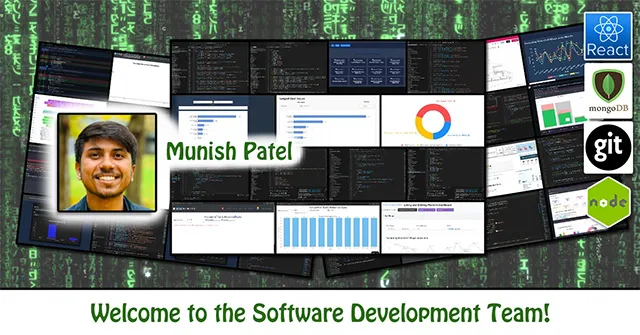
Munish is a software Engineer specializing in AI/ML and full-stack development. He holds a master’s degree in Computer Science from the Illinois Institute of Technology, Chicago, and has gained applied expertise in generative AI, RAG-powered systems, multi-agent AI orchestration frameworks, and deep learning through projects that include fine-tuning large language models and developing automation pipelines. As a member of the Highest Good Network team, Munish has contributed to integrating AI-driven functionality into the project, including the development of automation features in the user review system of the analytics dashboard and enhancements to the software using the MERN stack. His work has improved search efficiency for admins, enhanced reporting accuracy, and supported scalability and the exploration of AI-powered insights.
WELCOME TO THE TEAM MUNISH!
FOLLOW ONE COMMUNITY’S PROGRESS (click icons for our pages)
 One Community
One Community